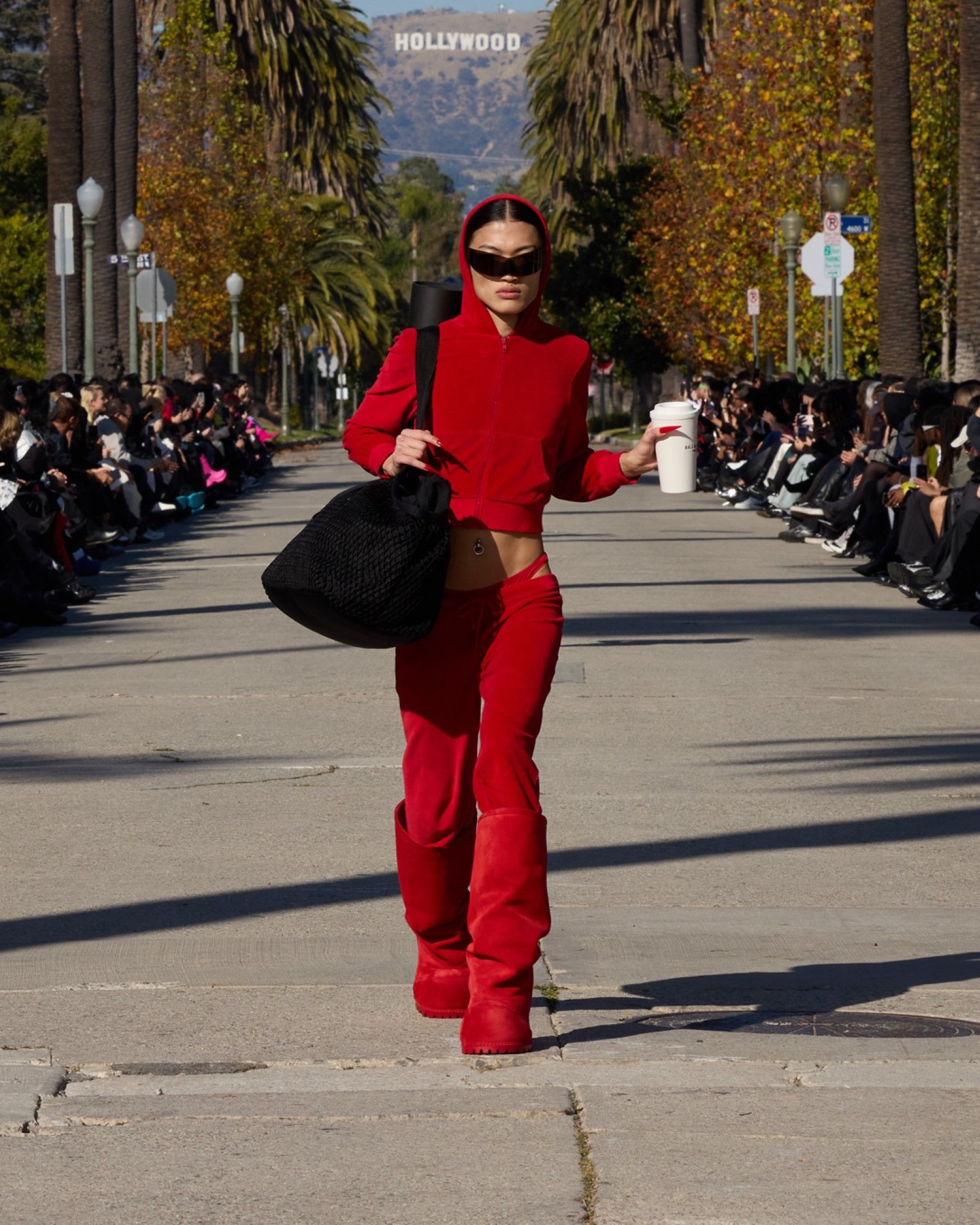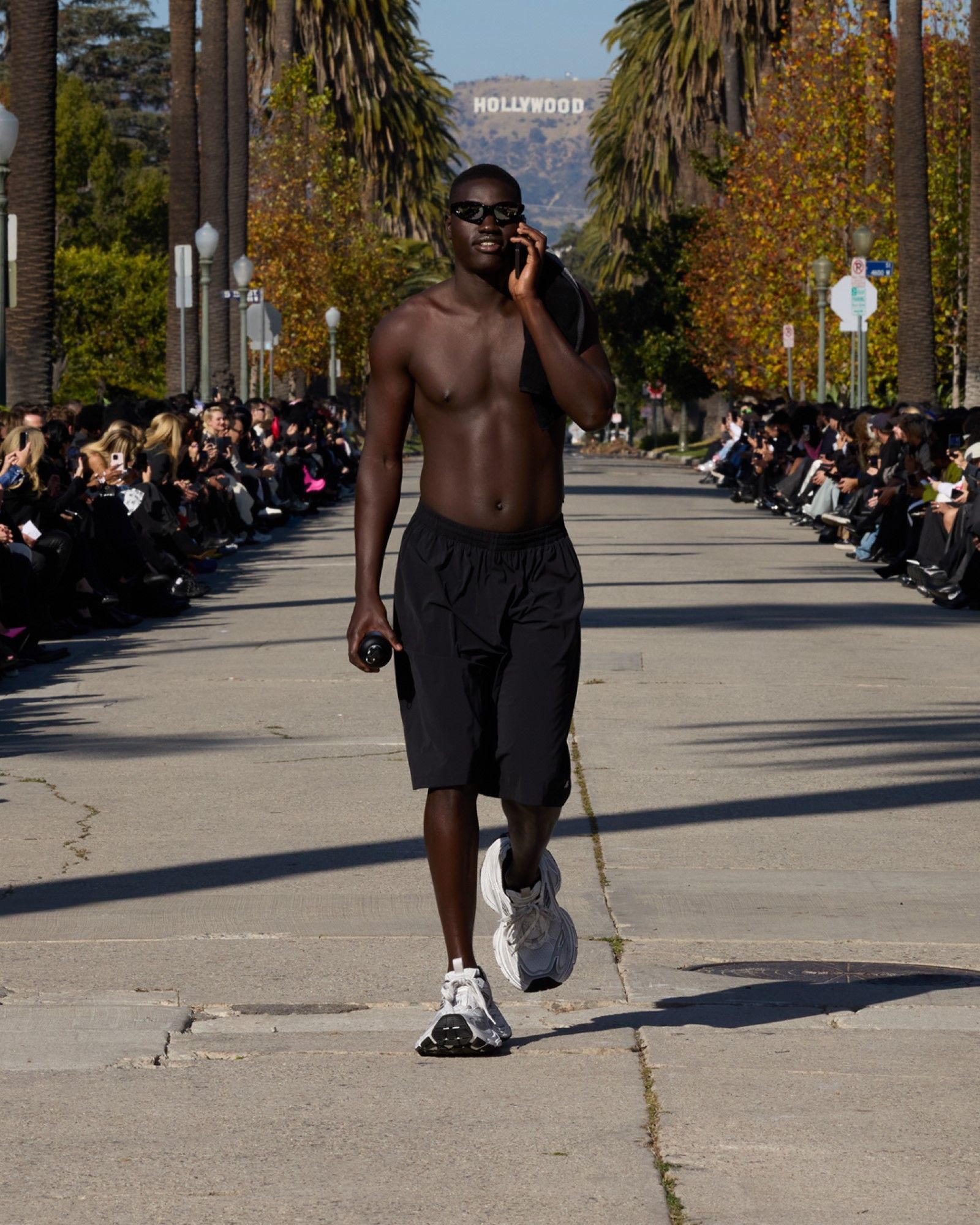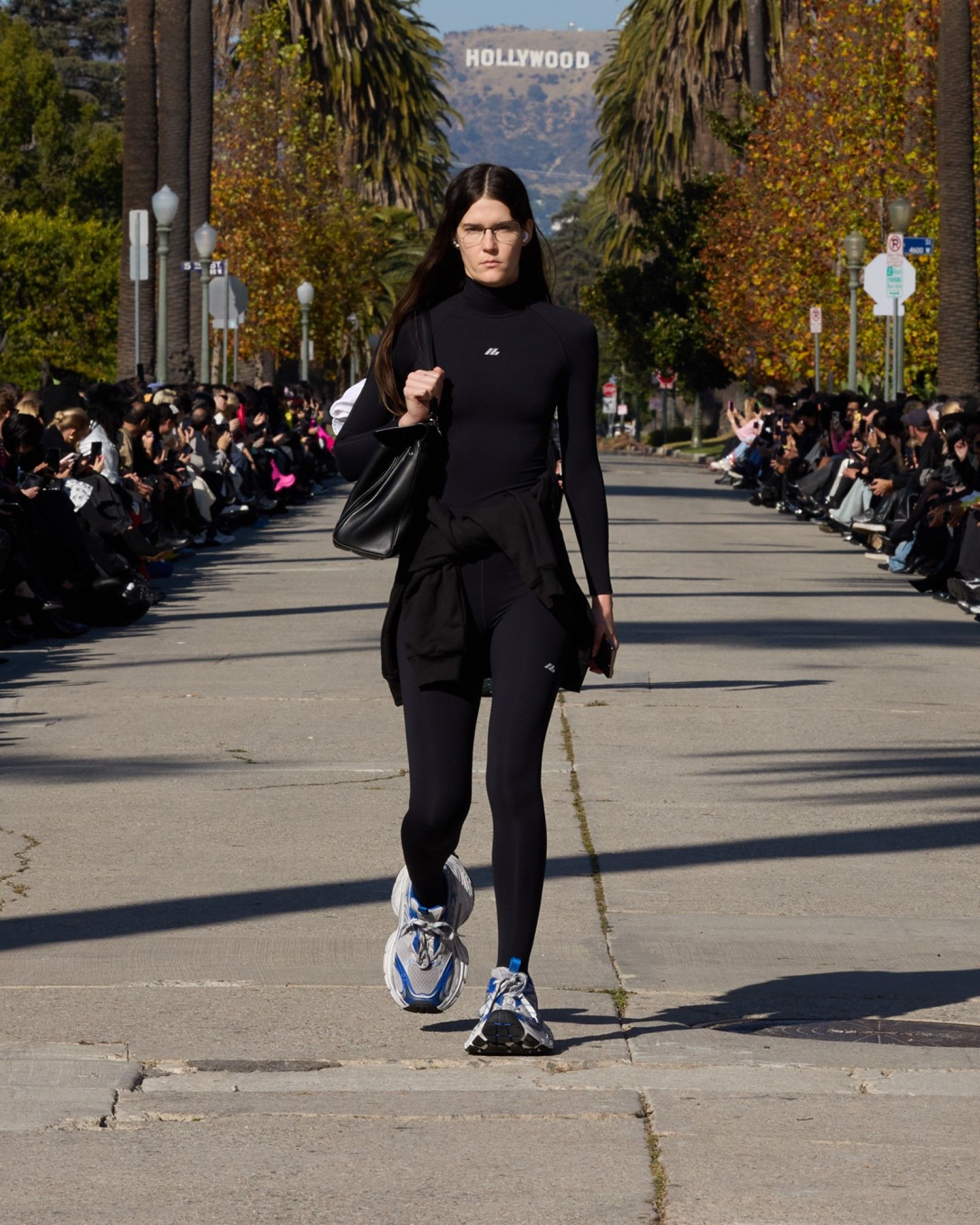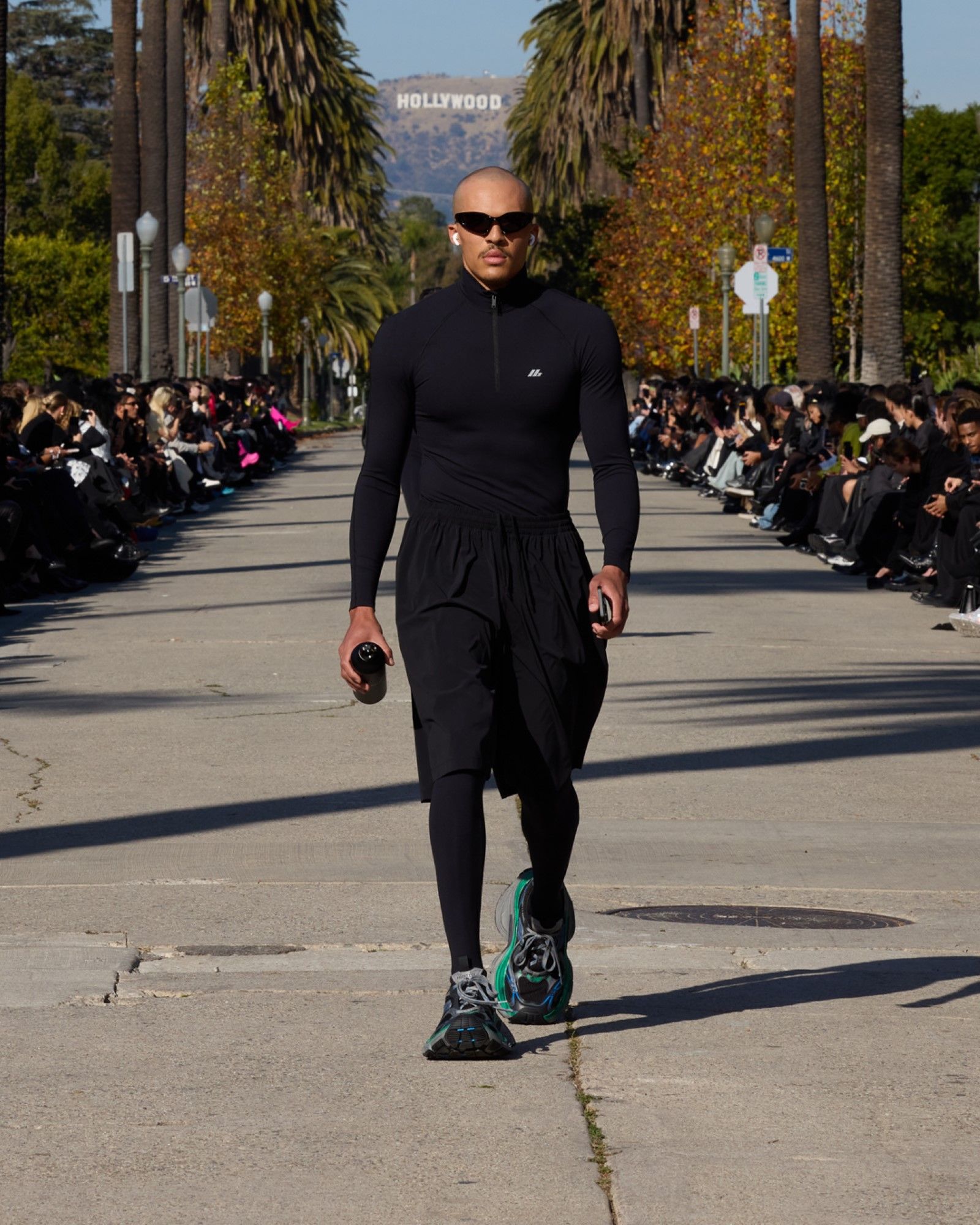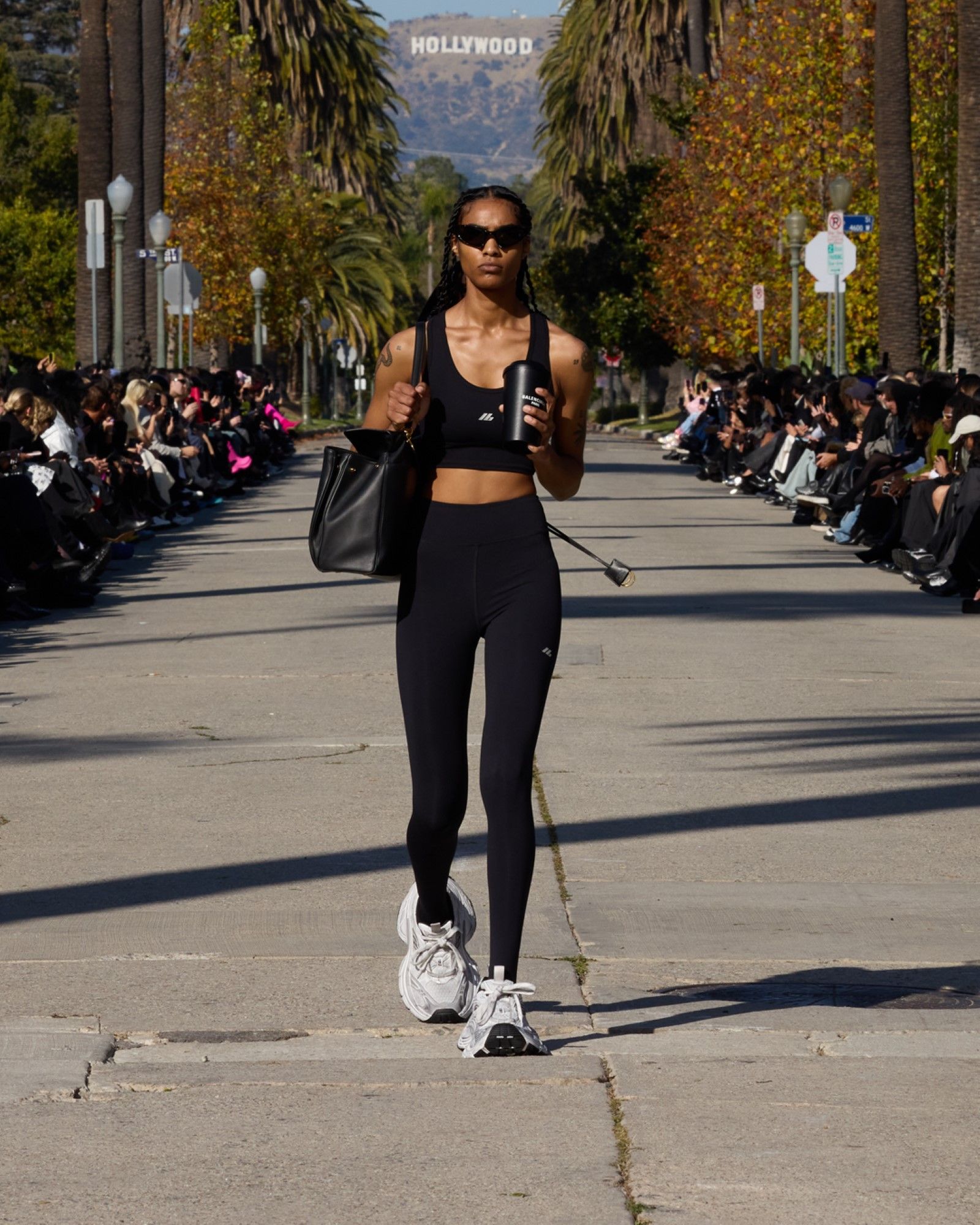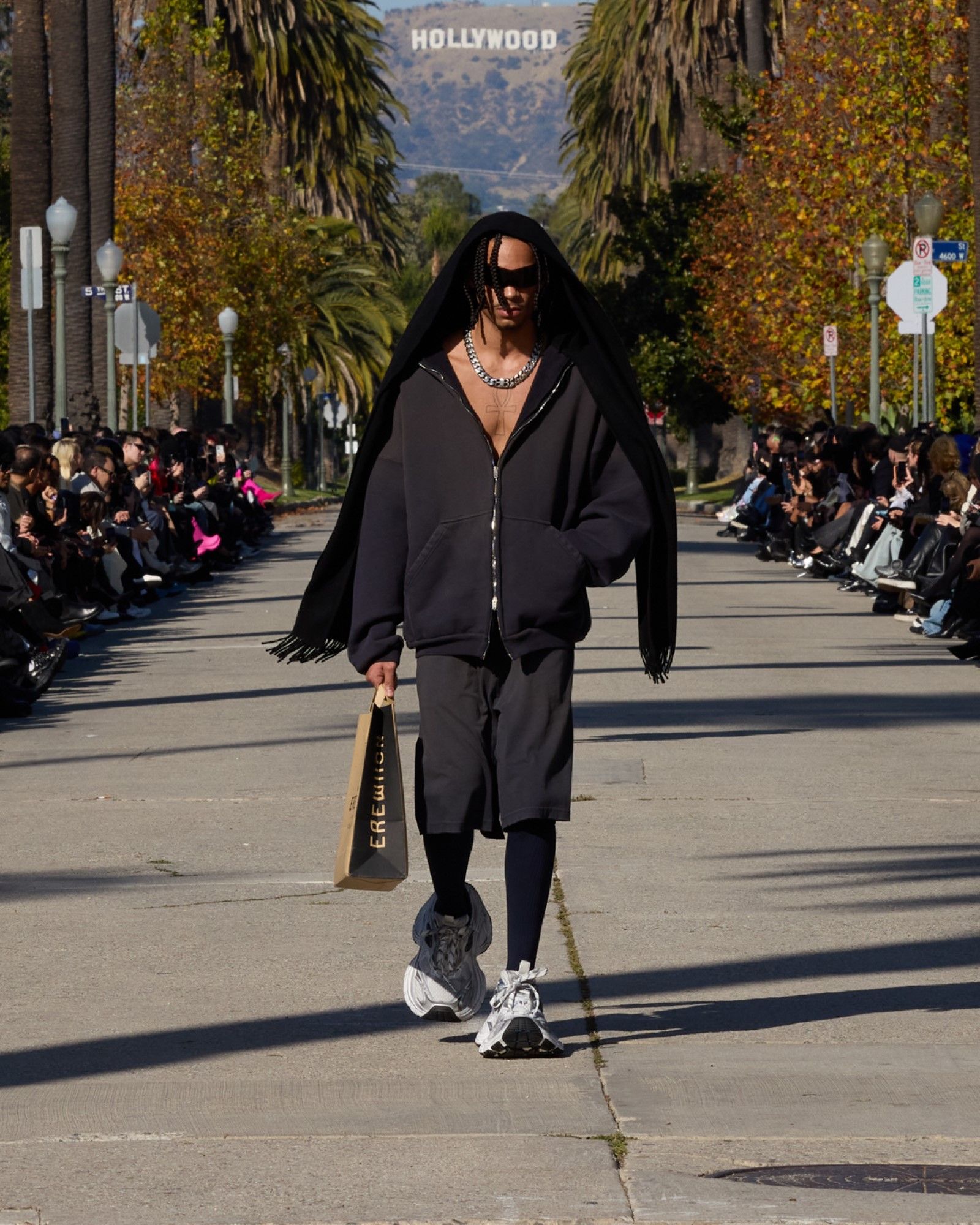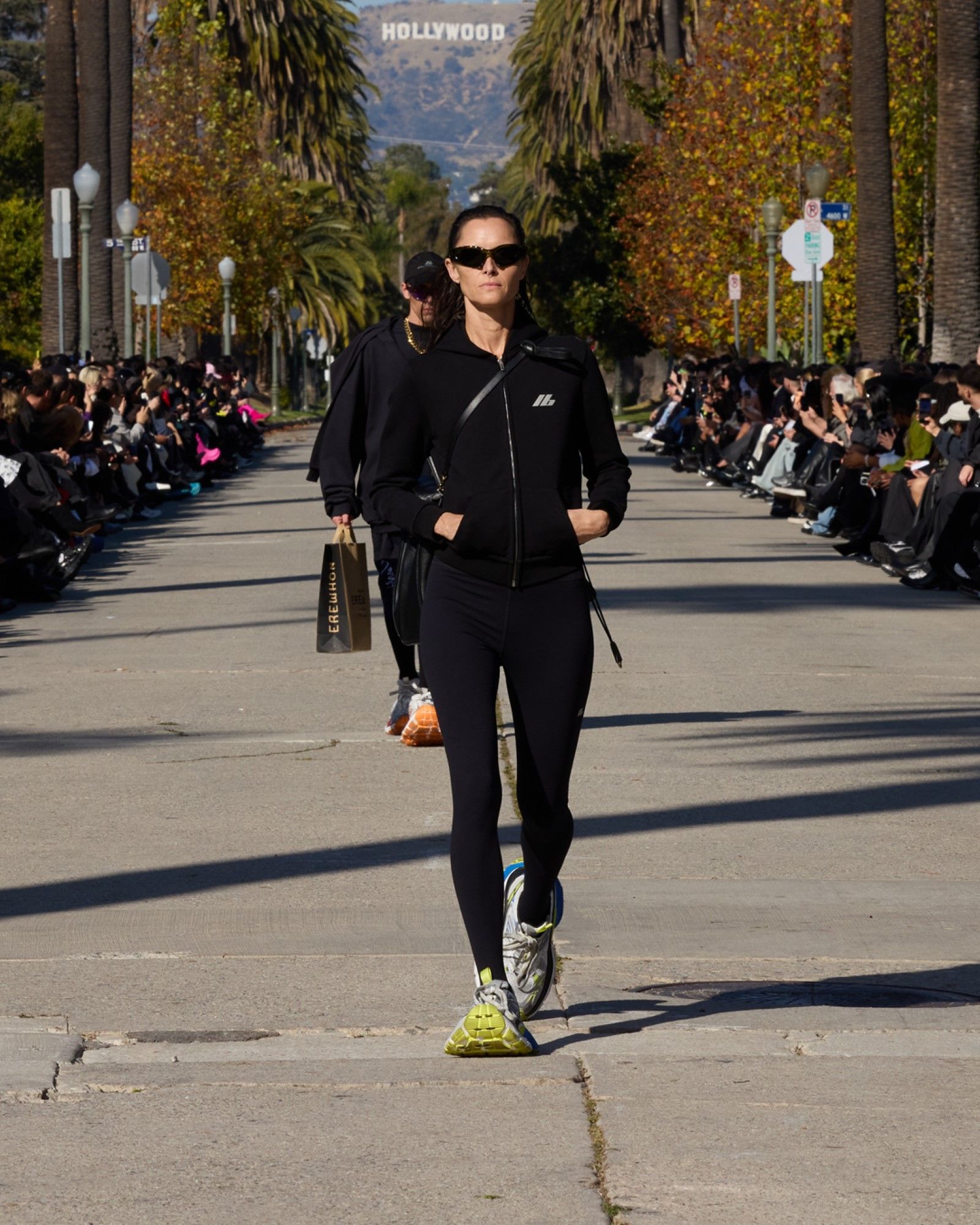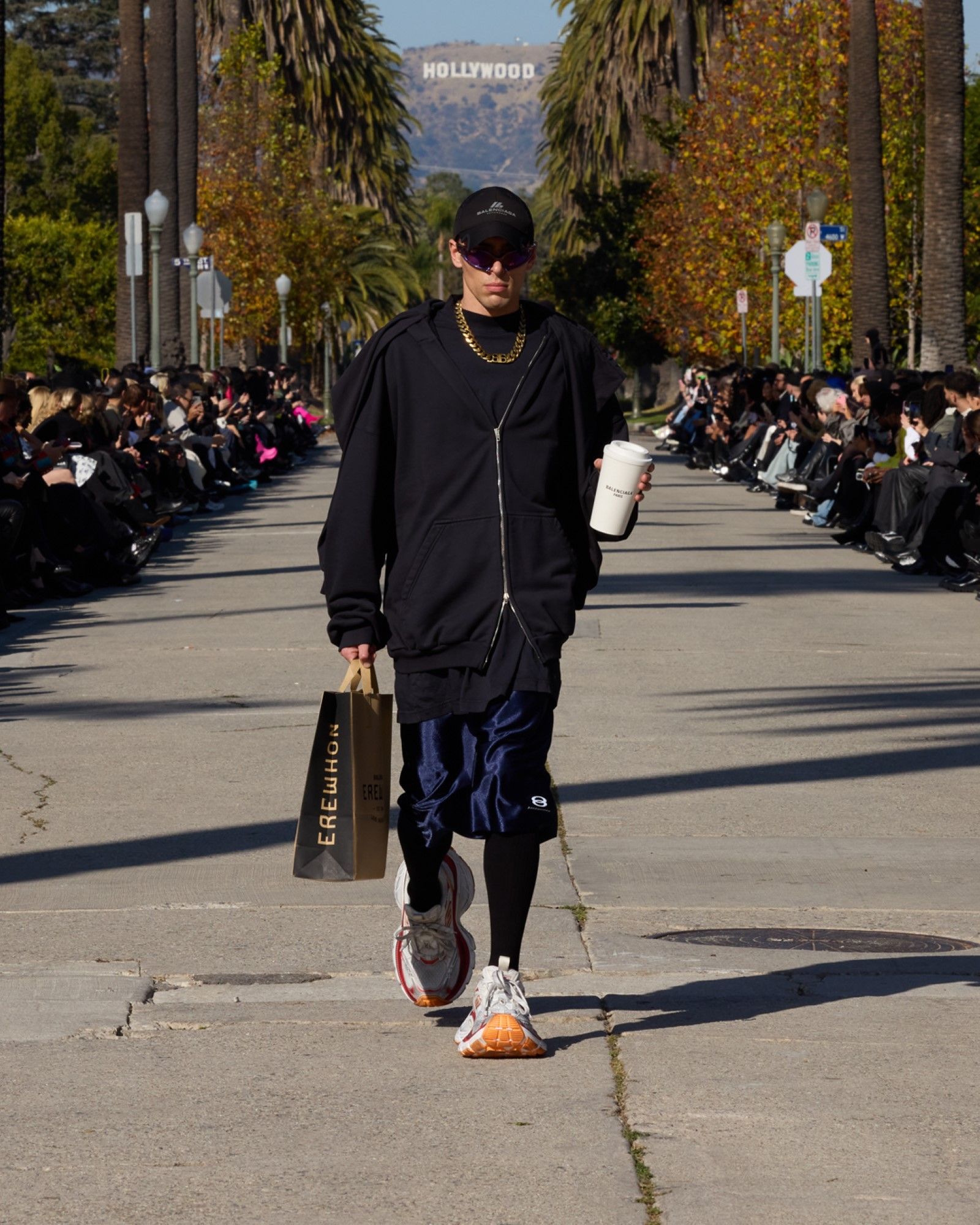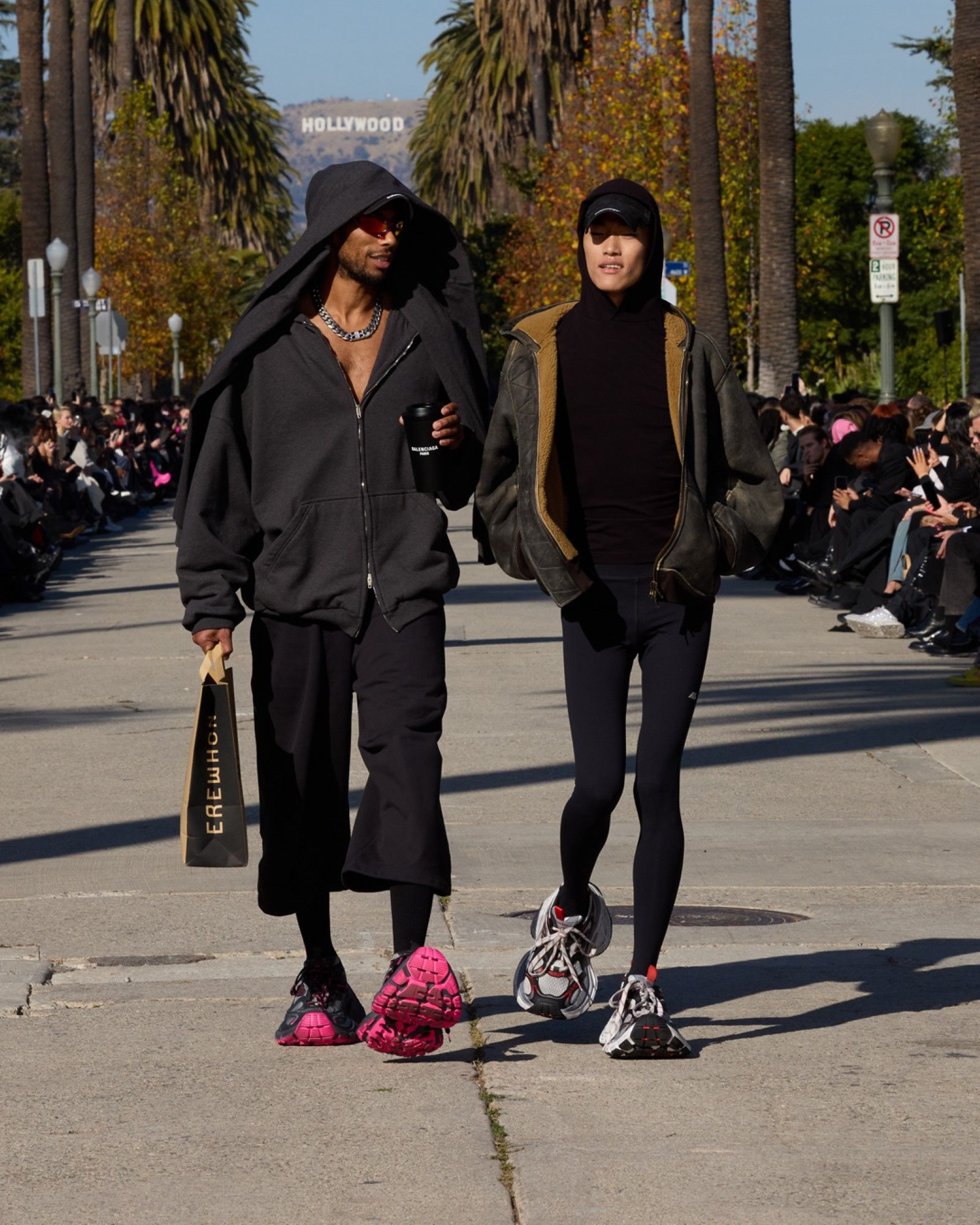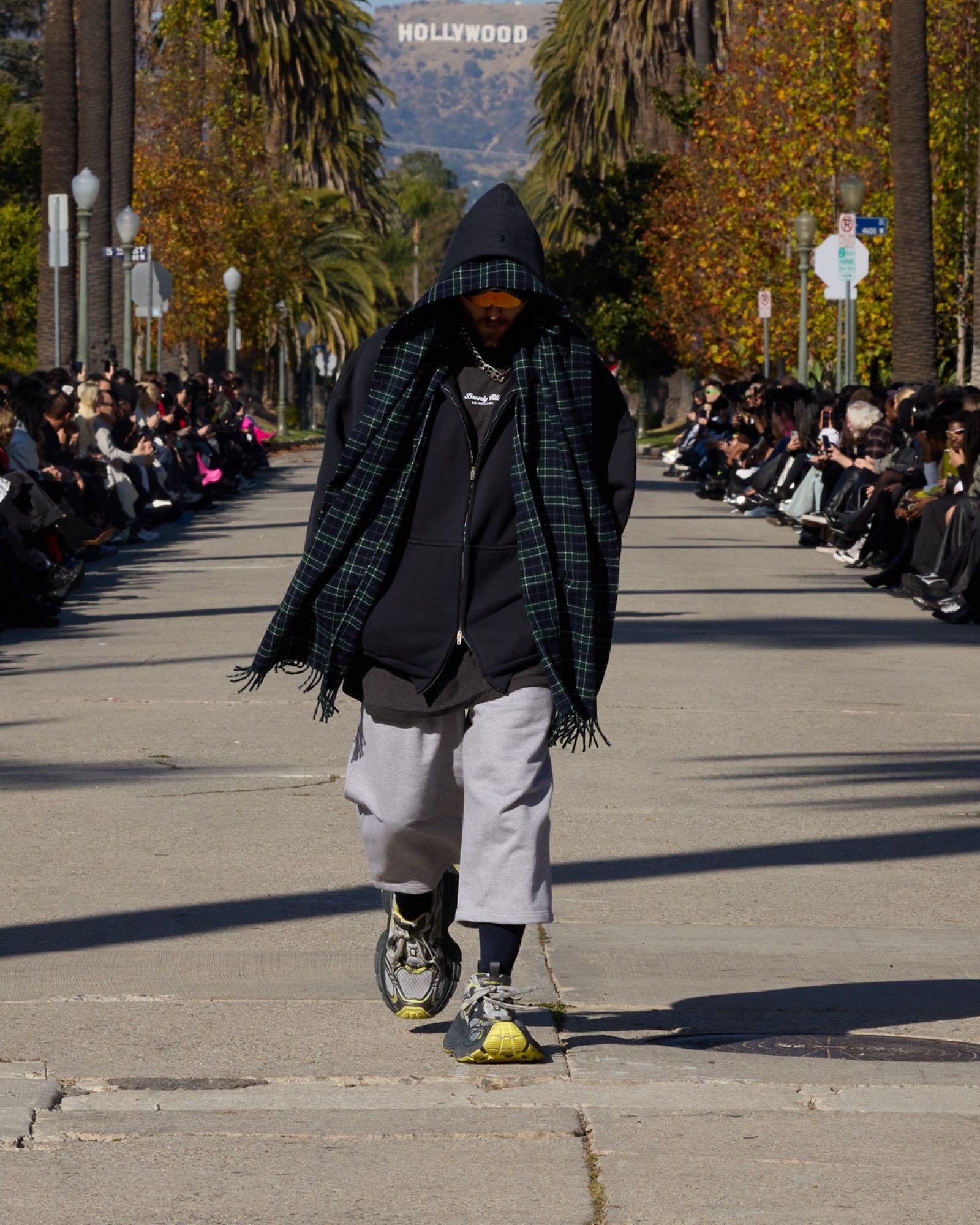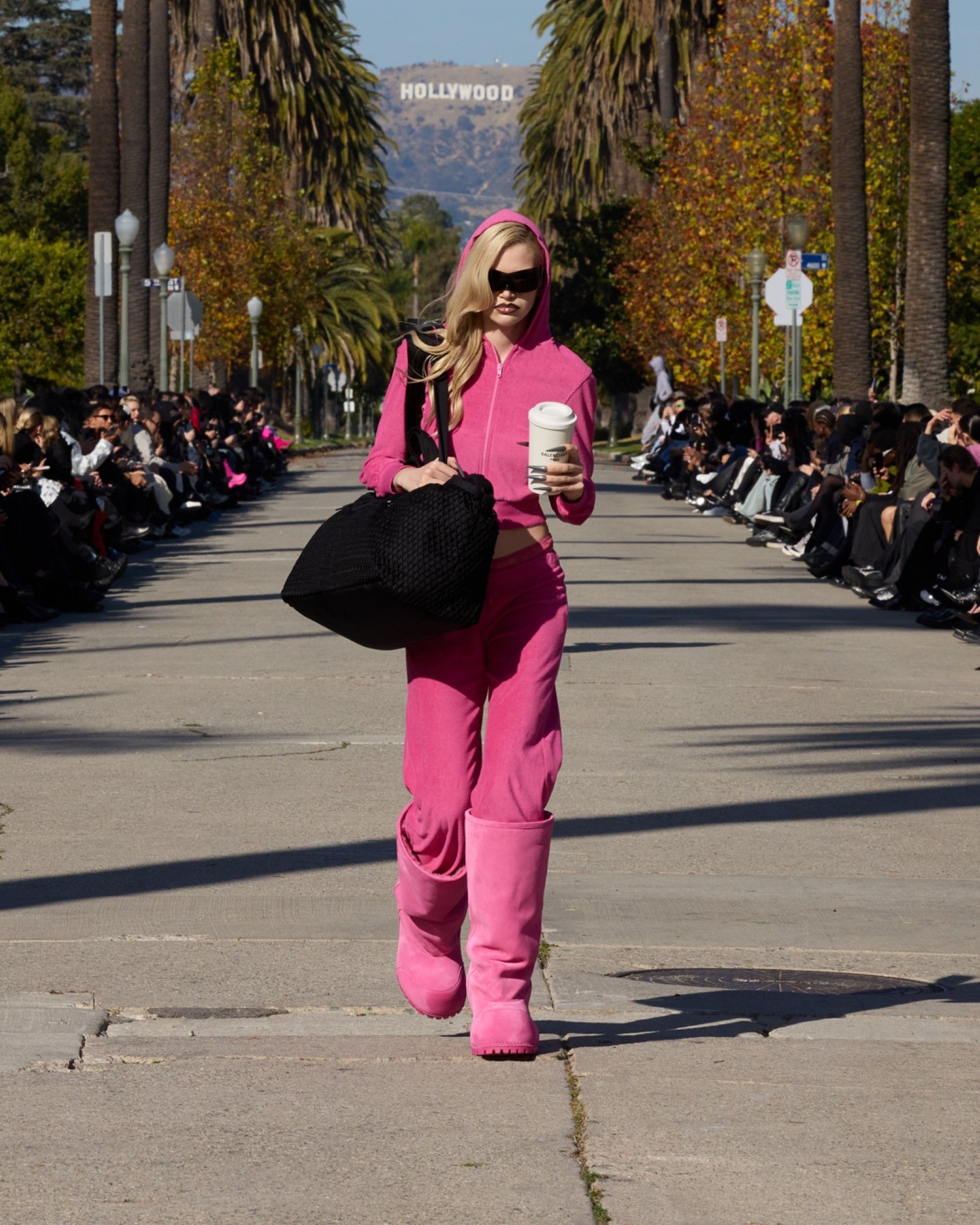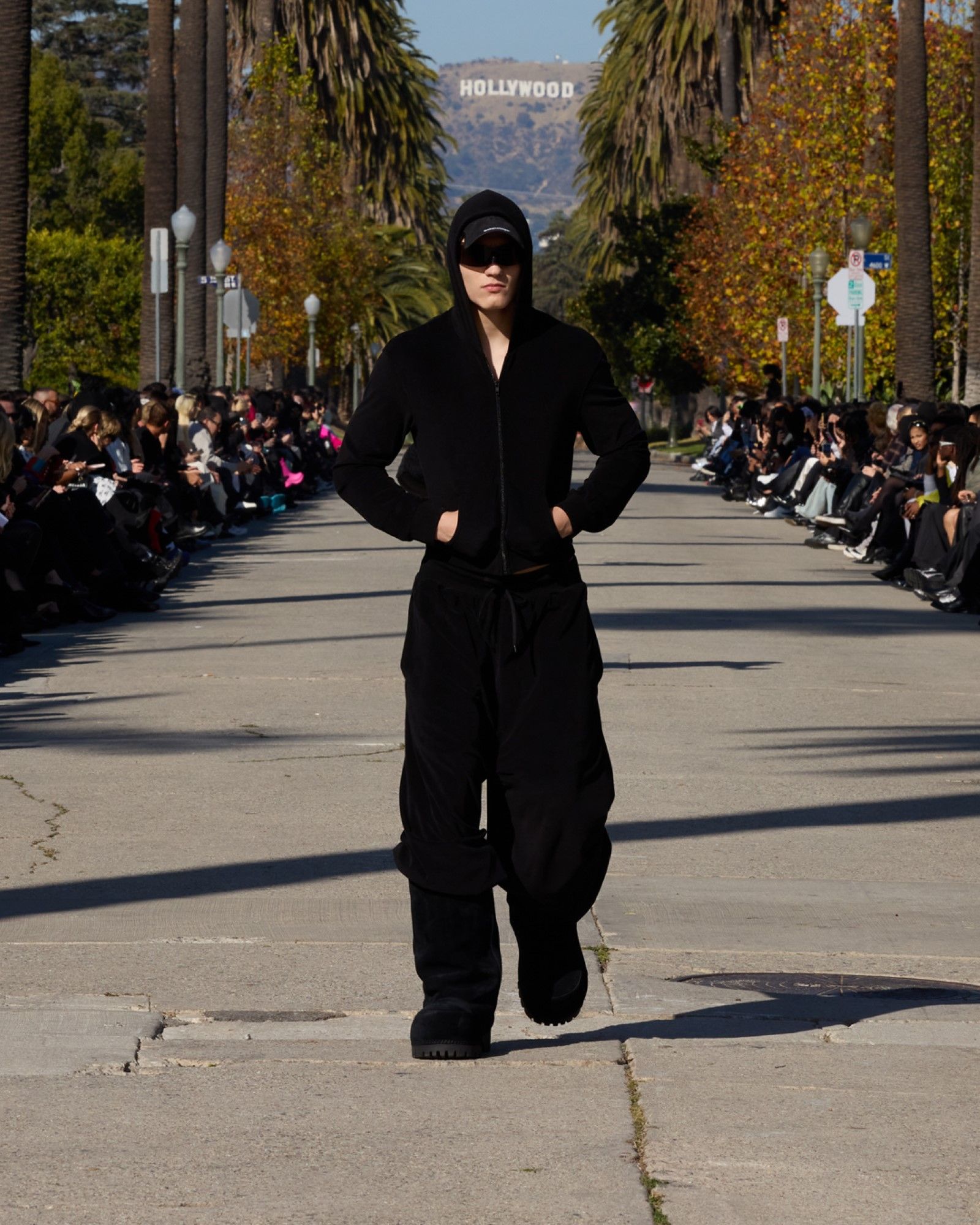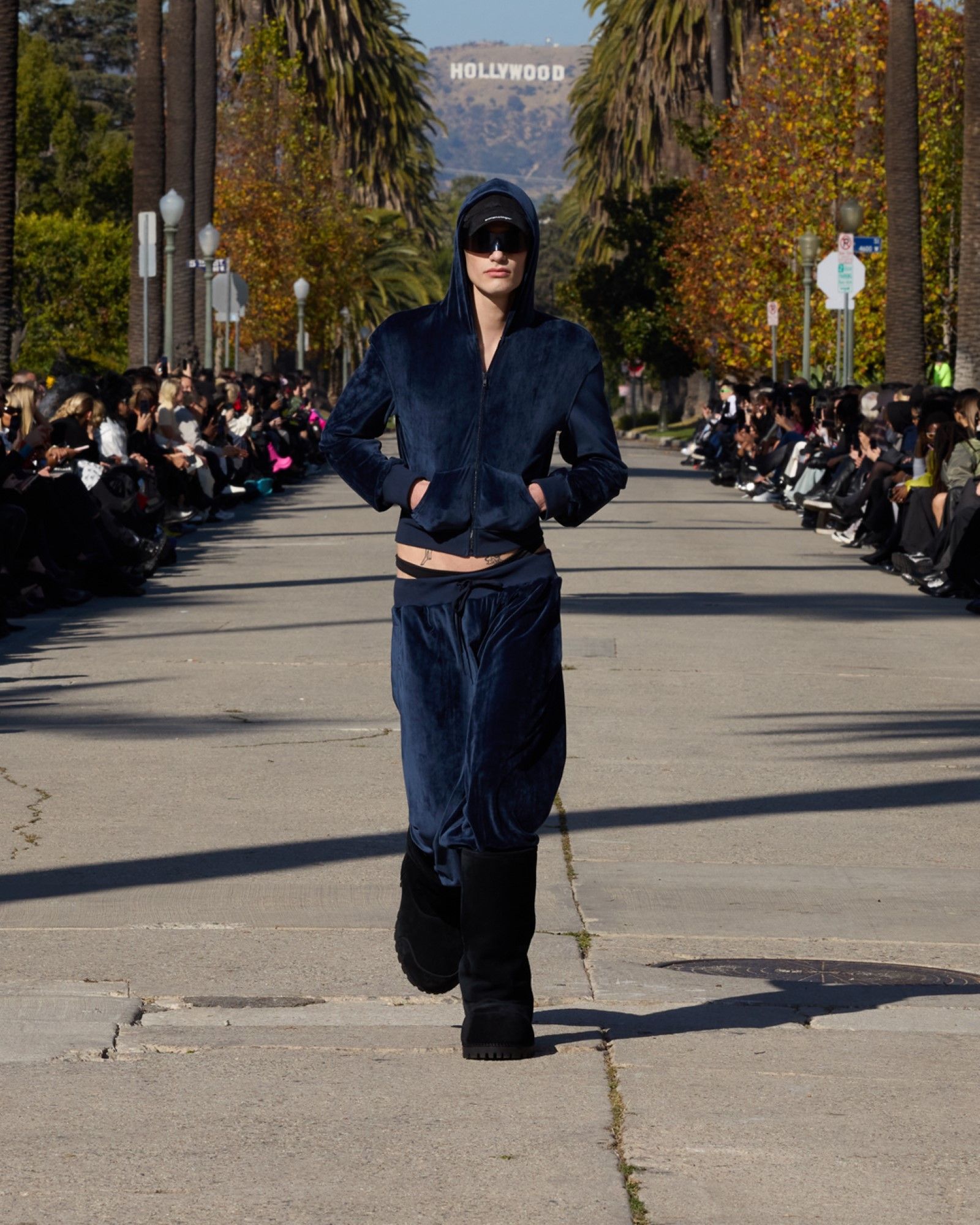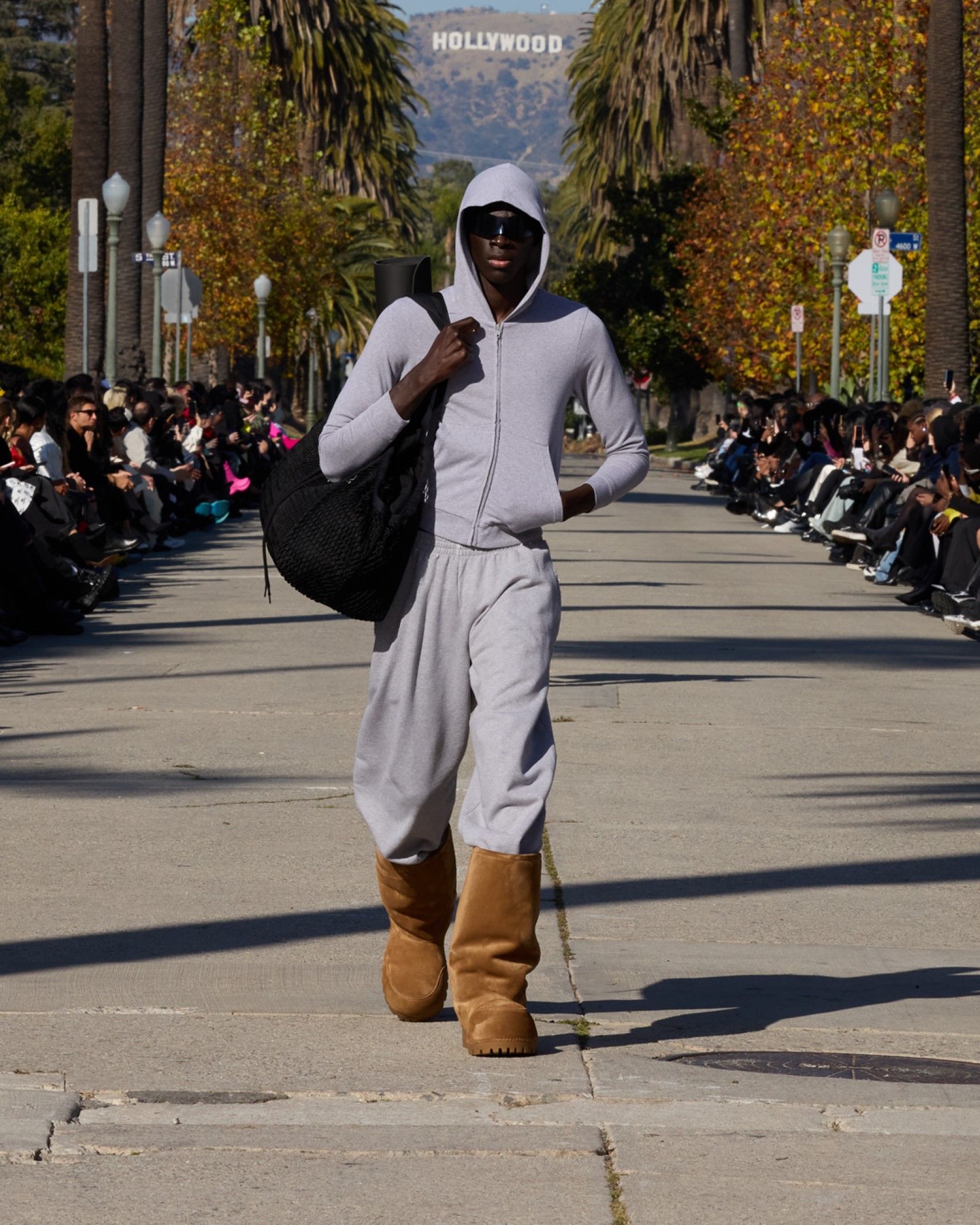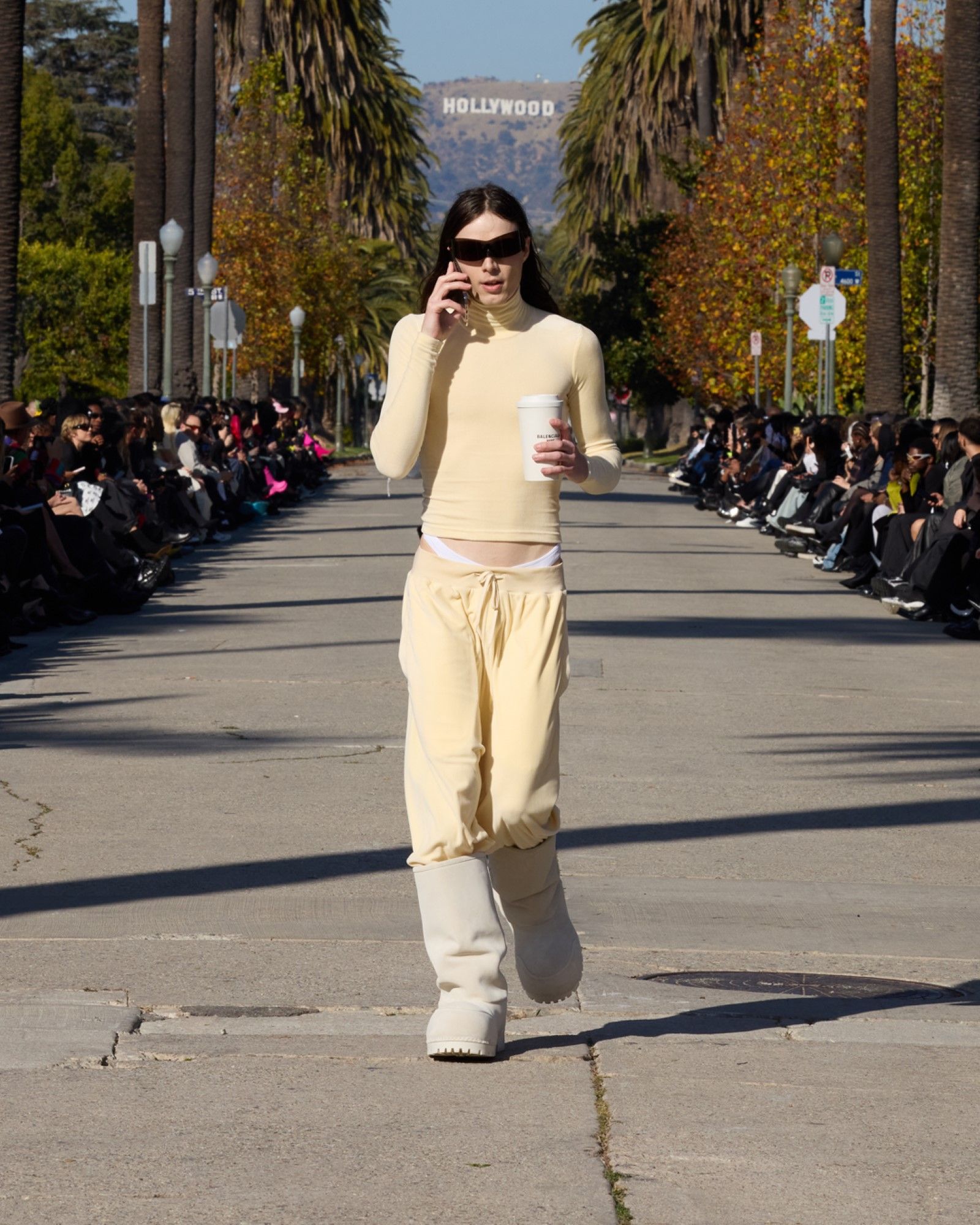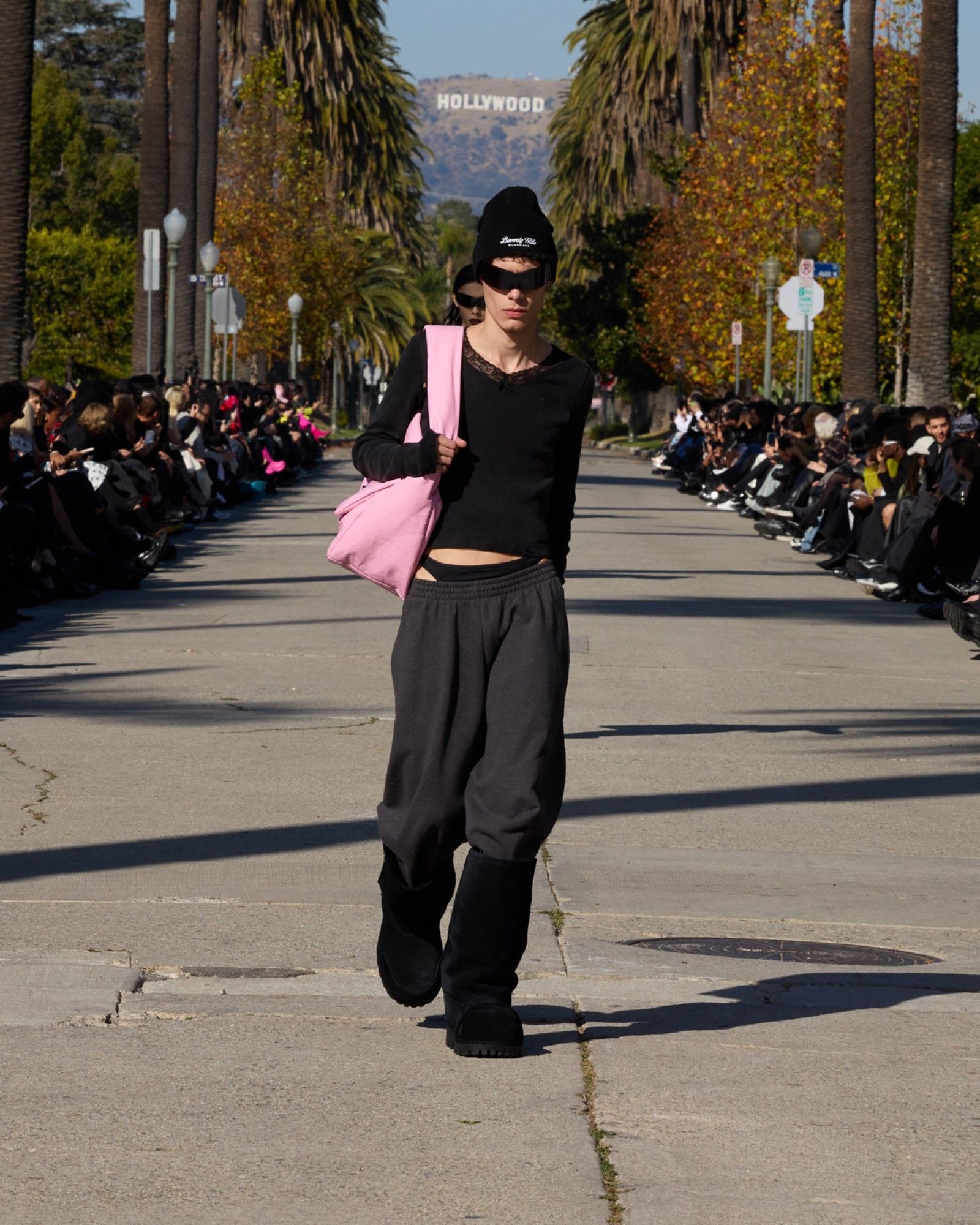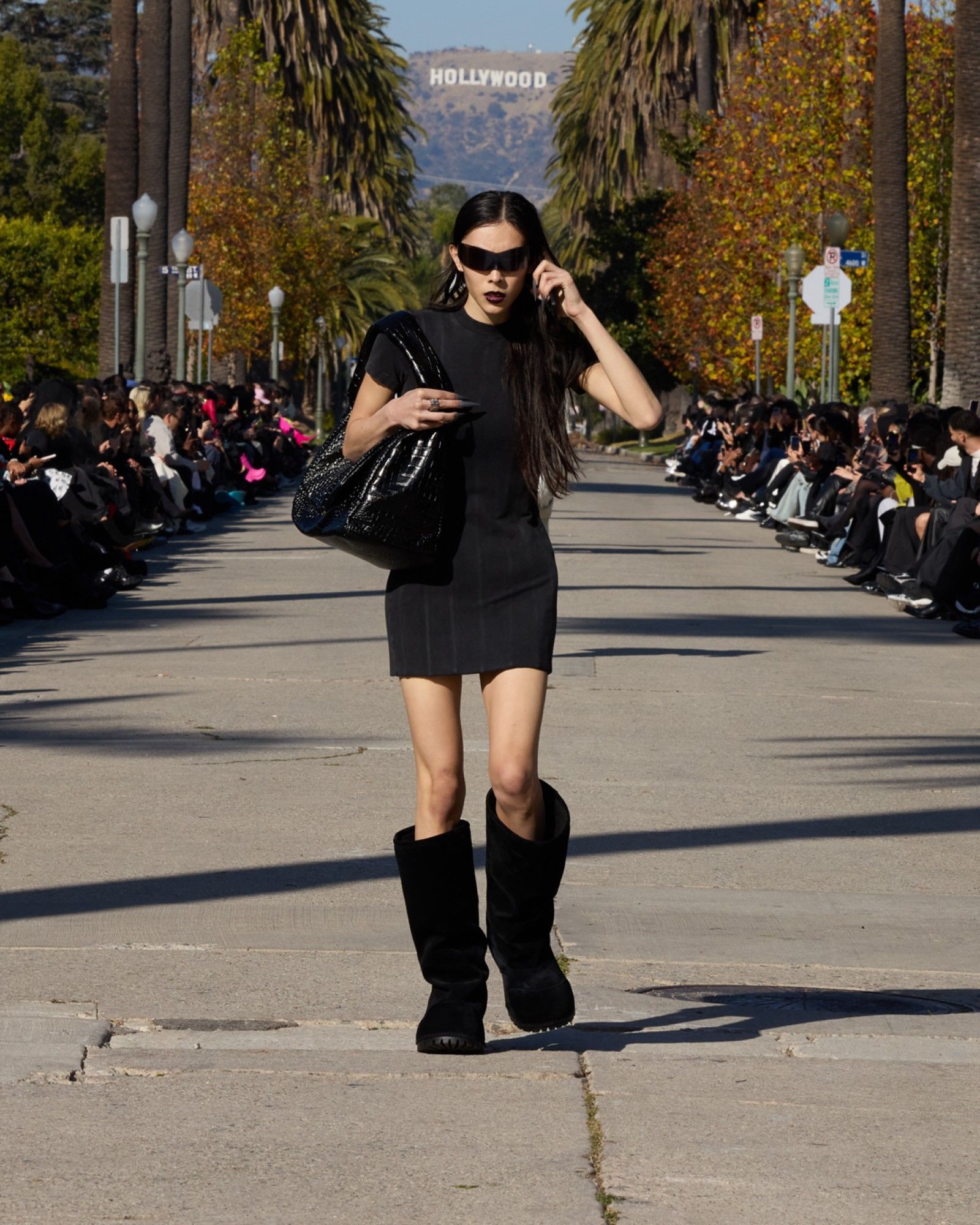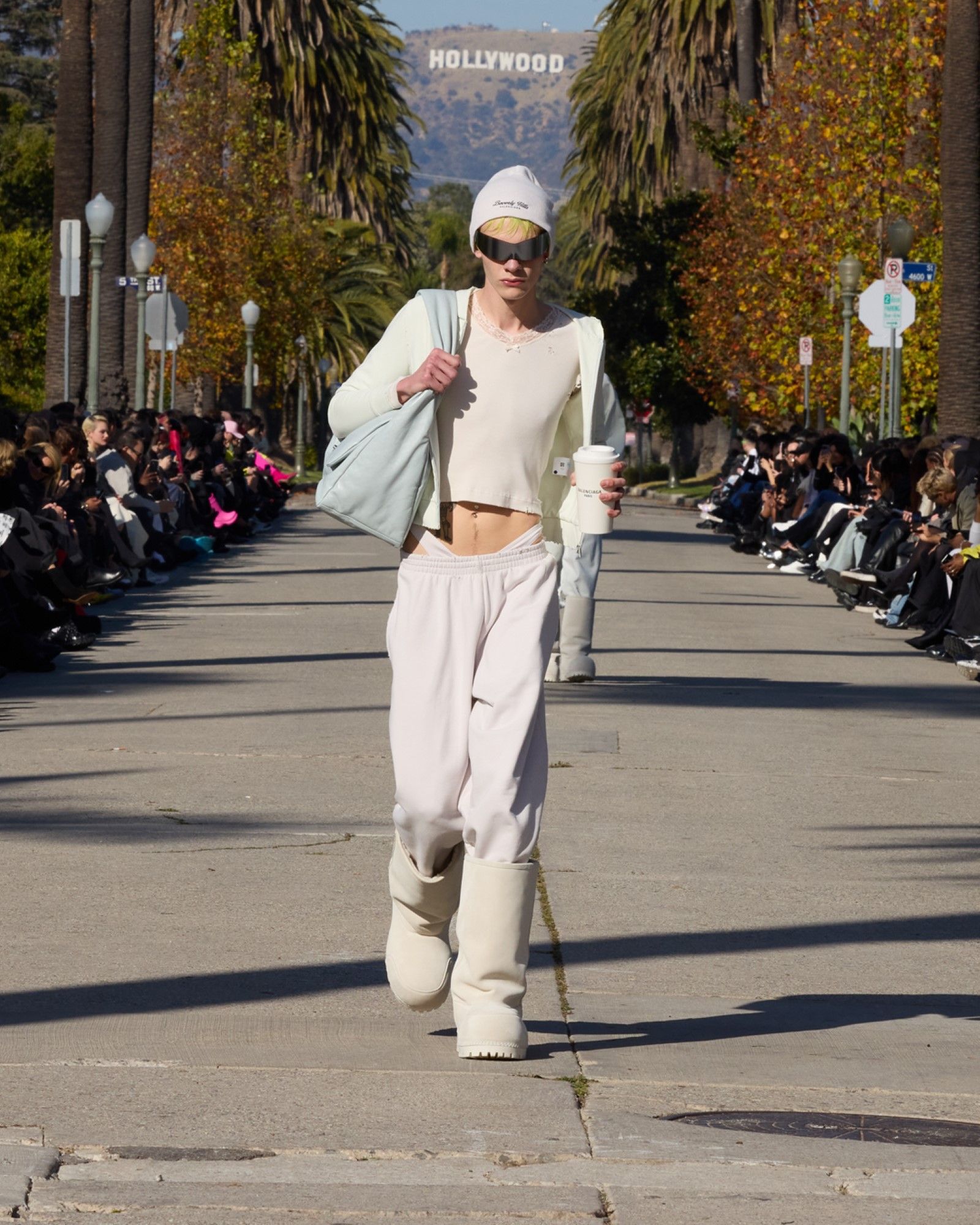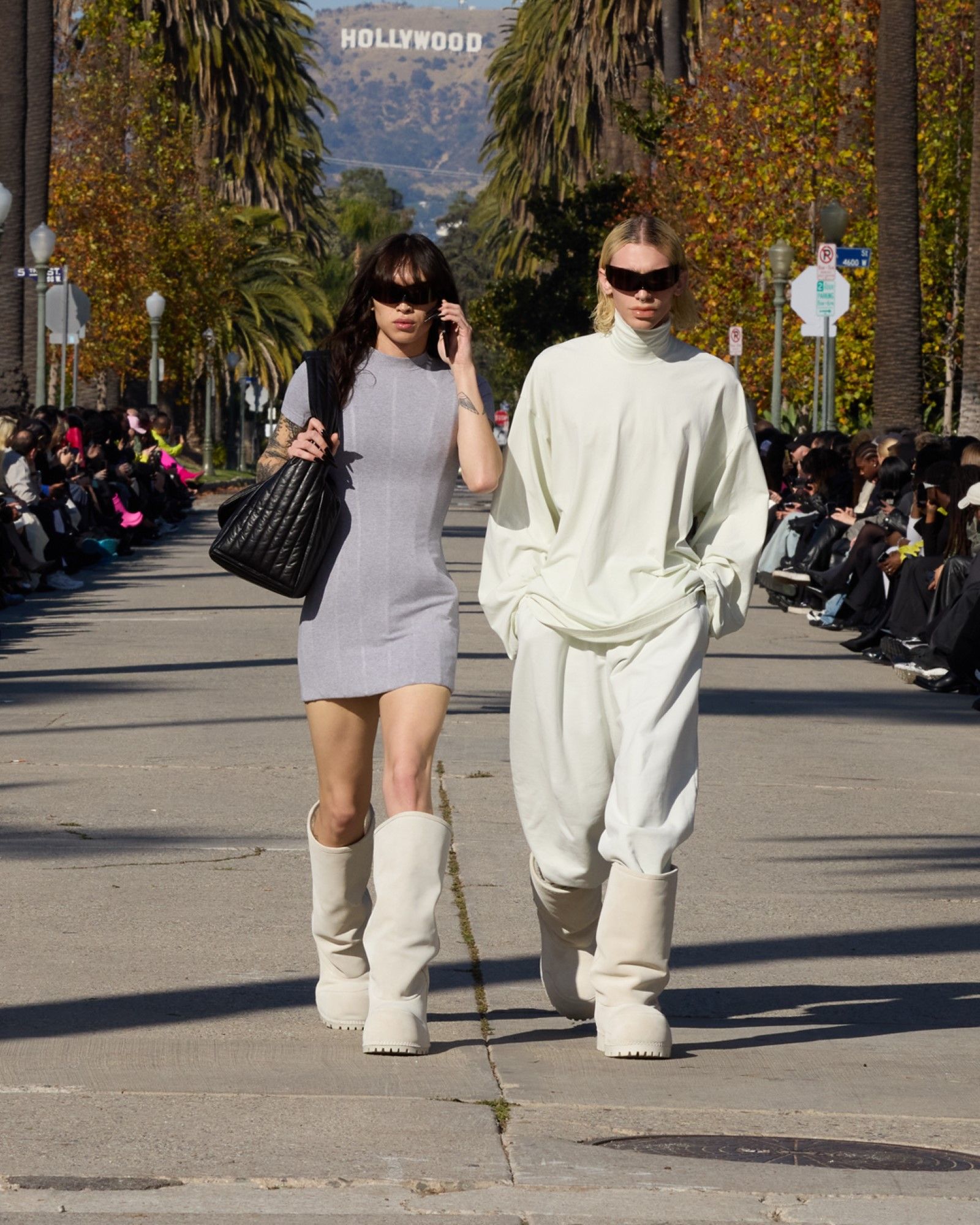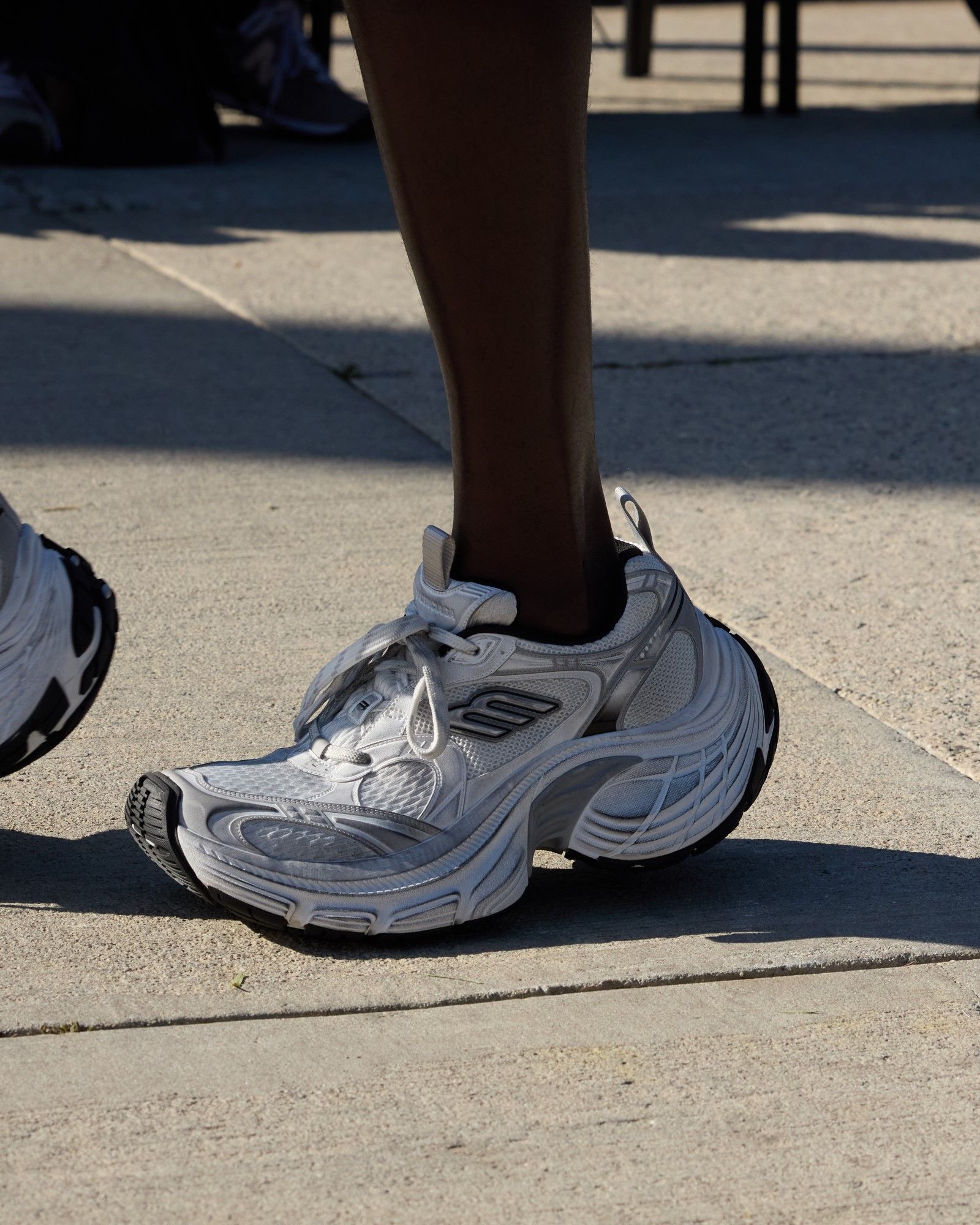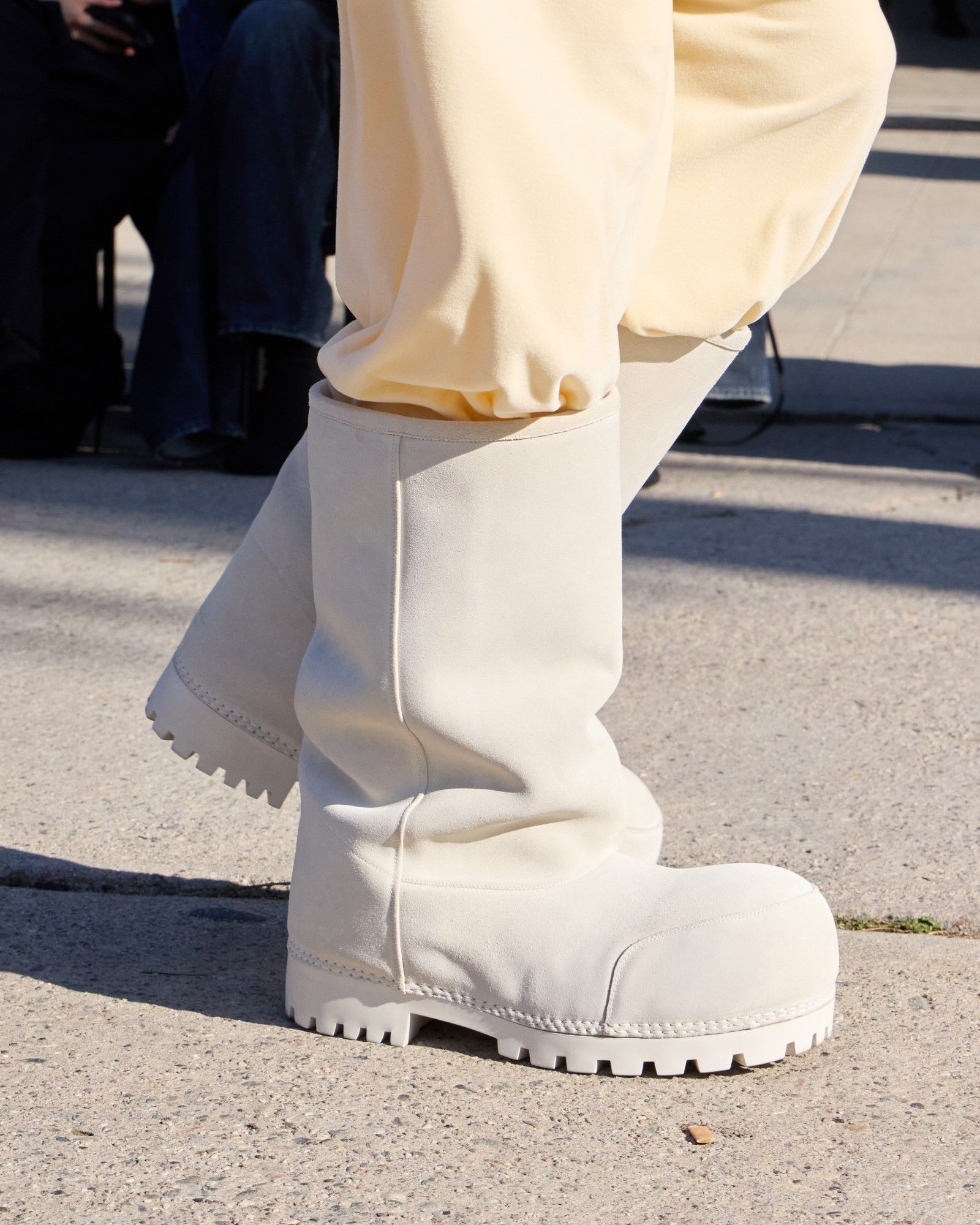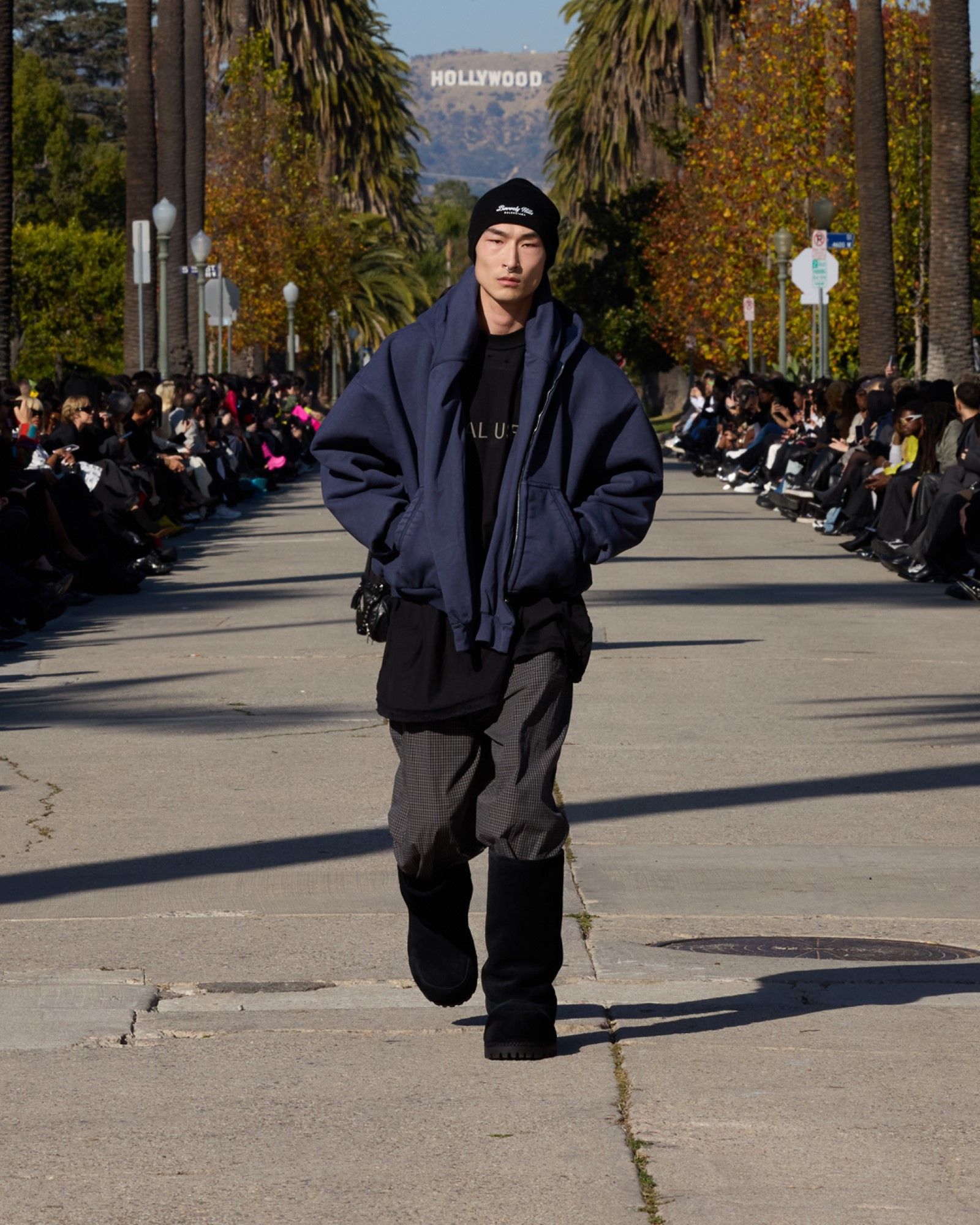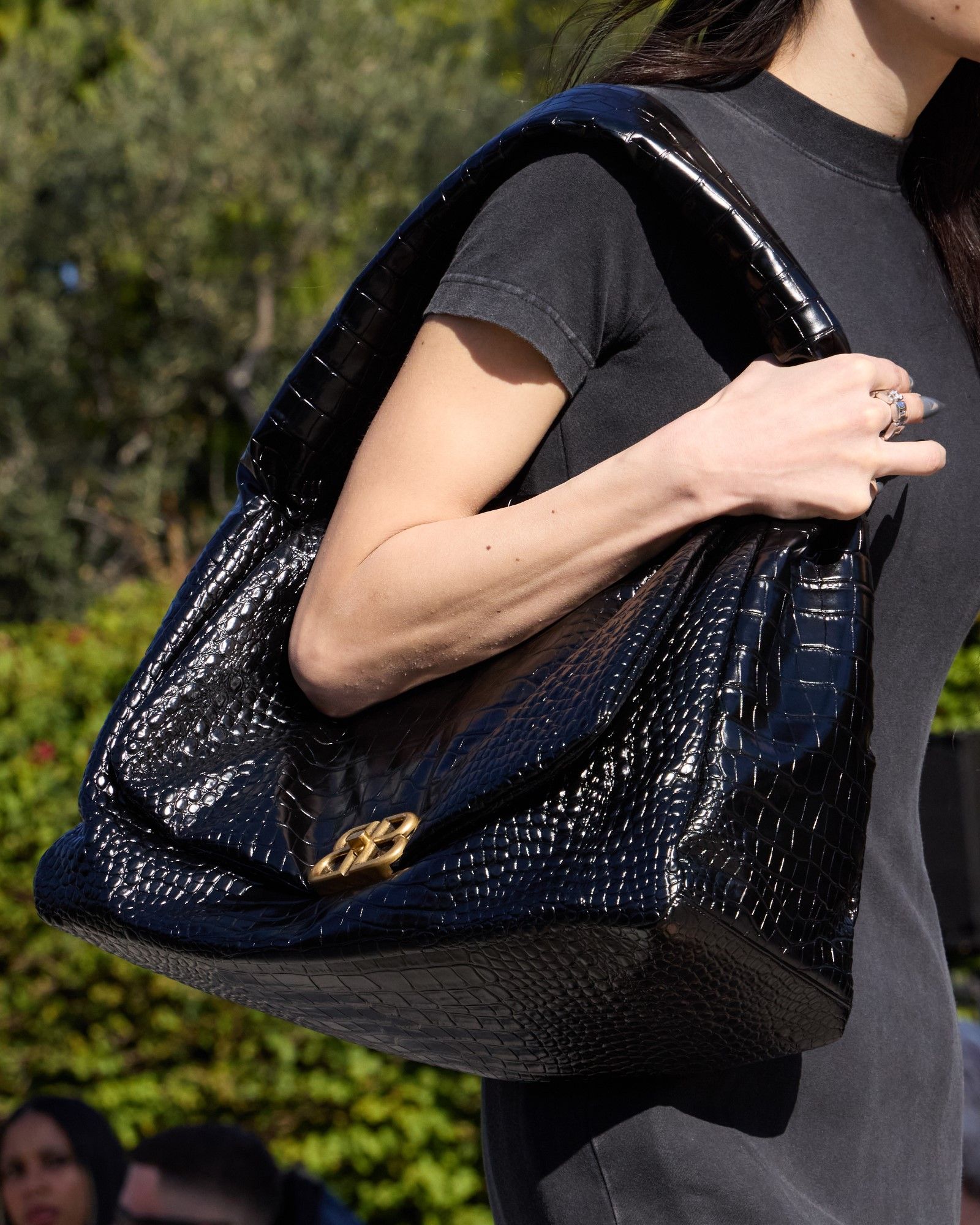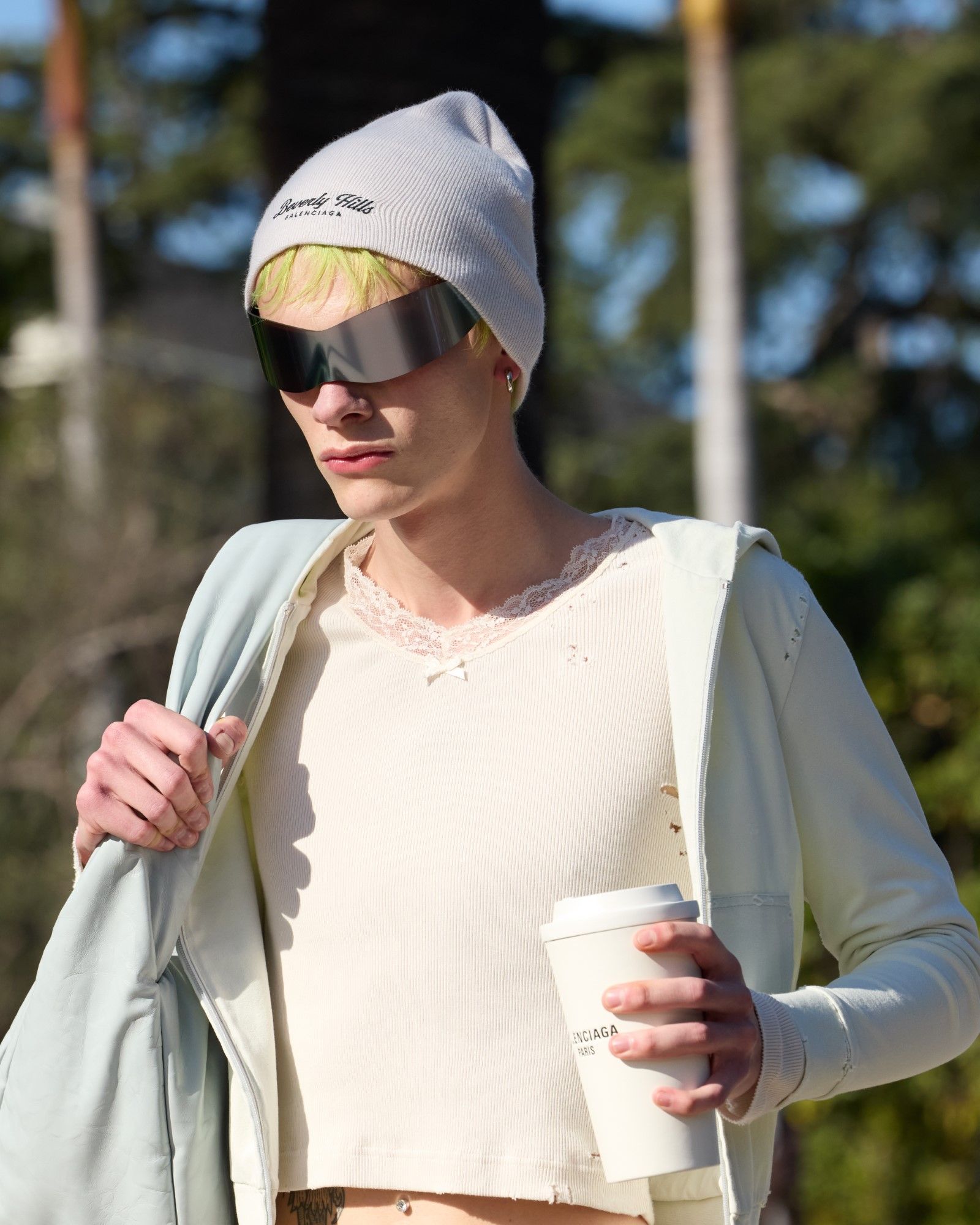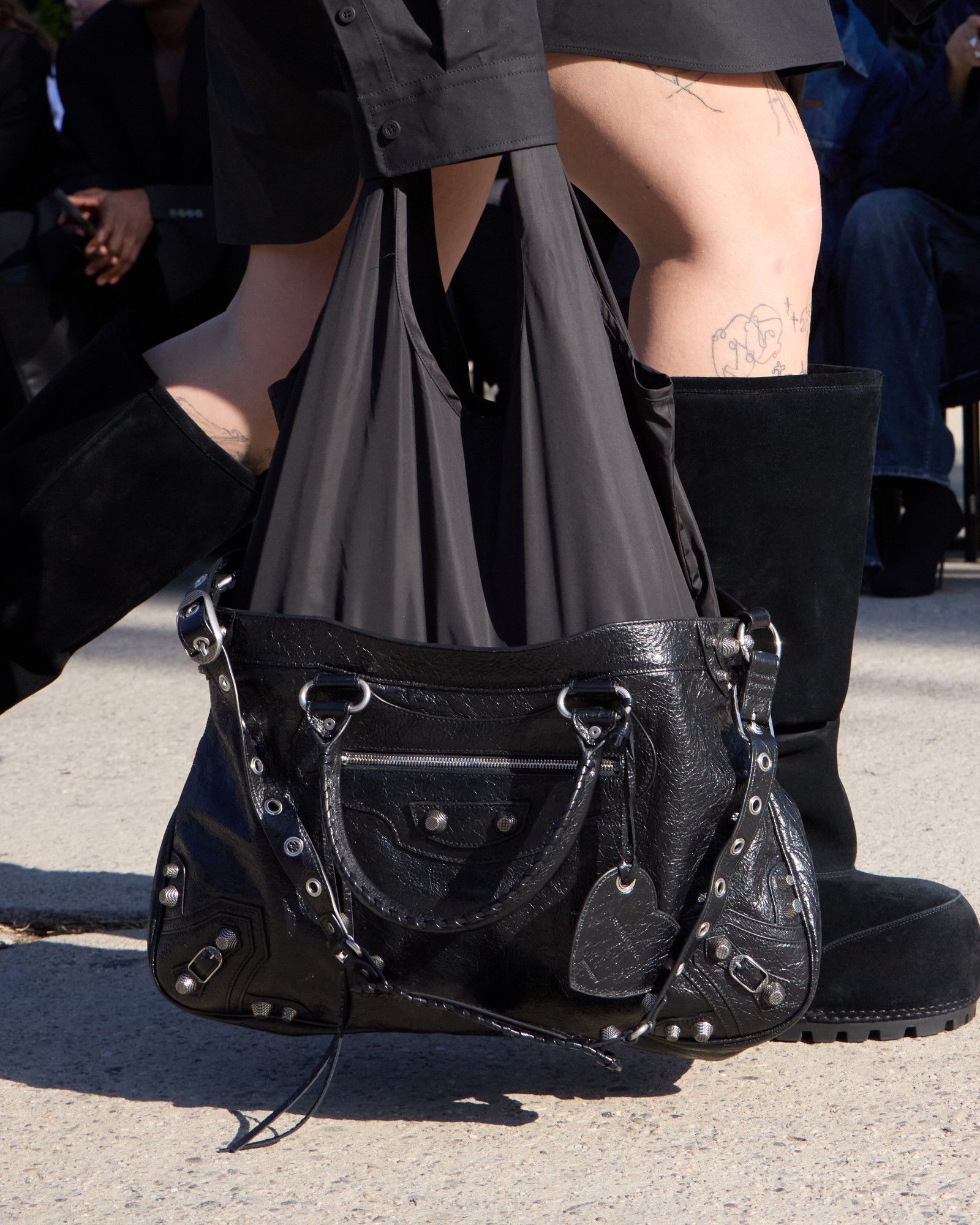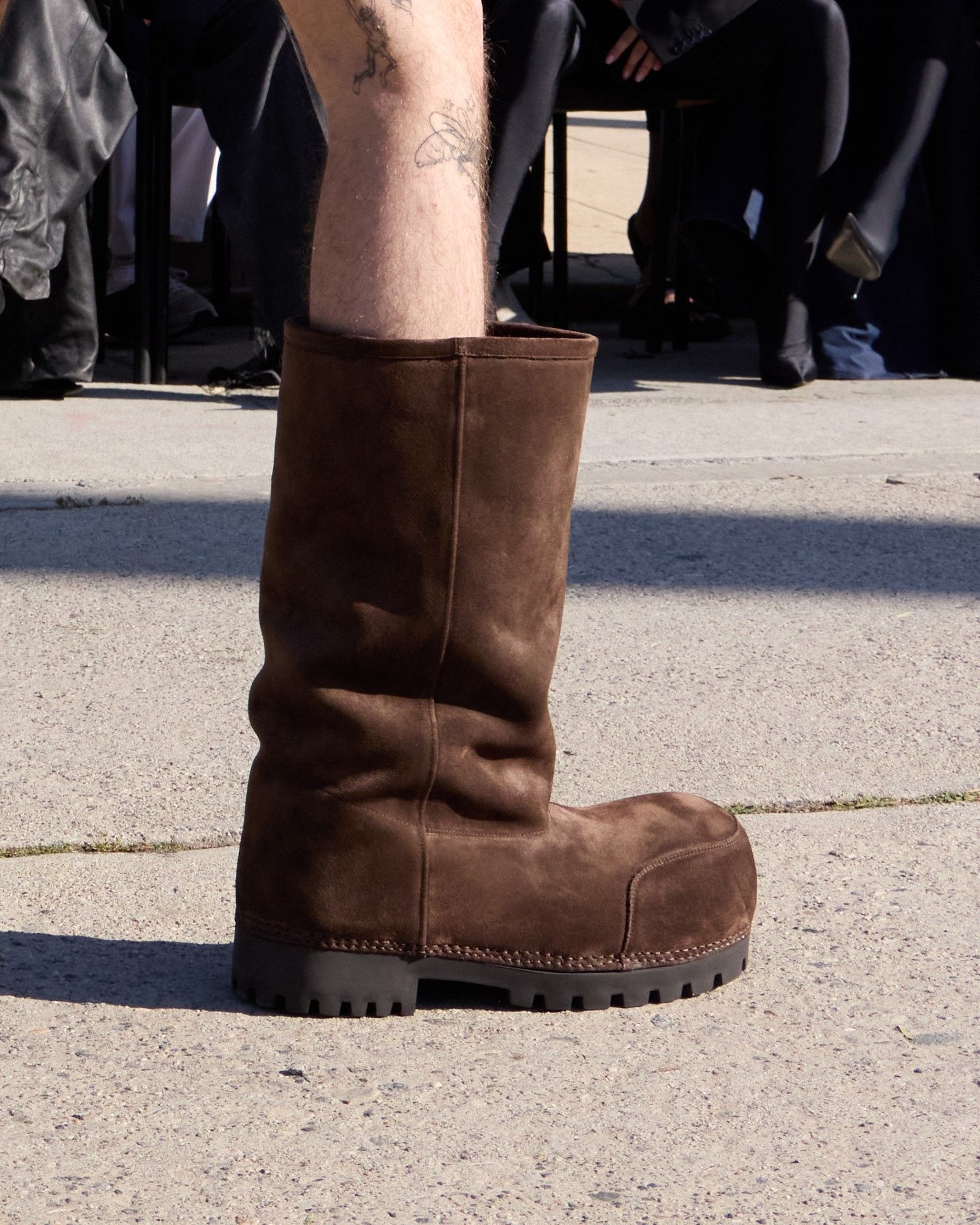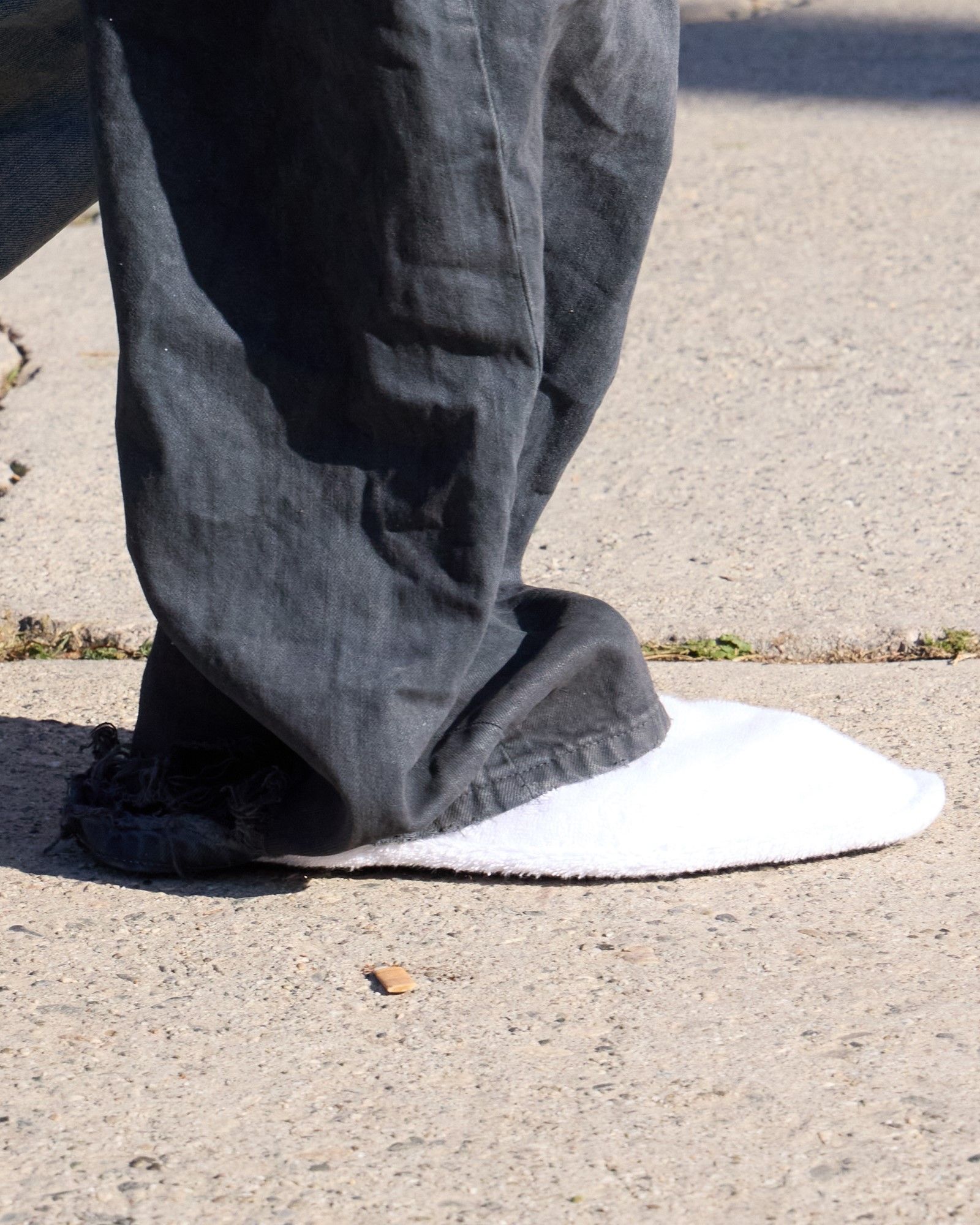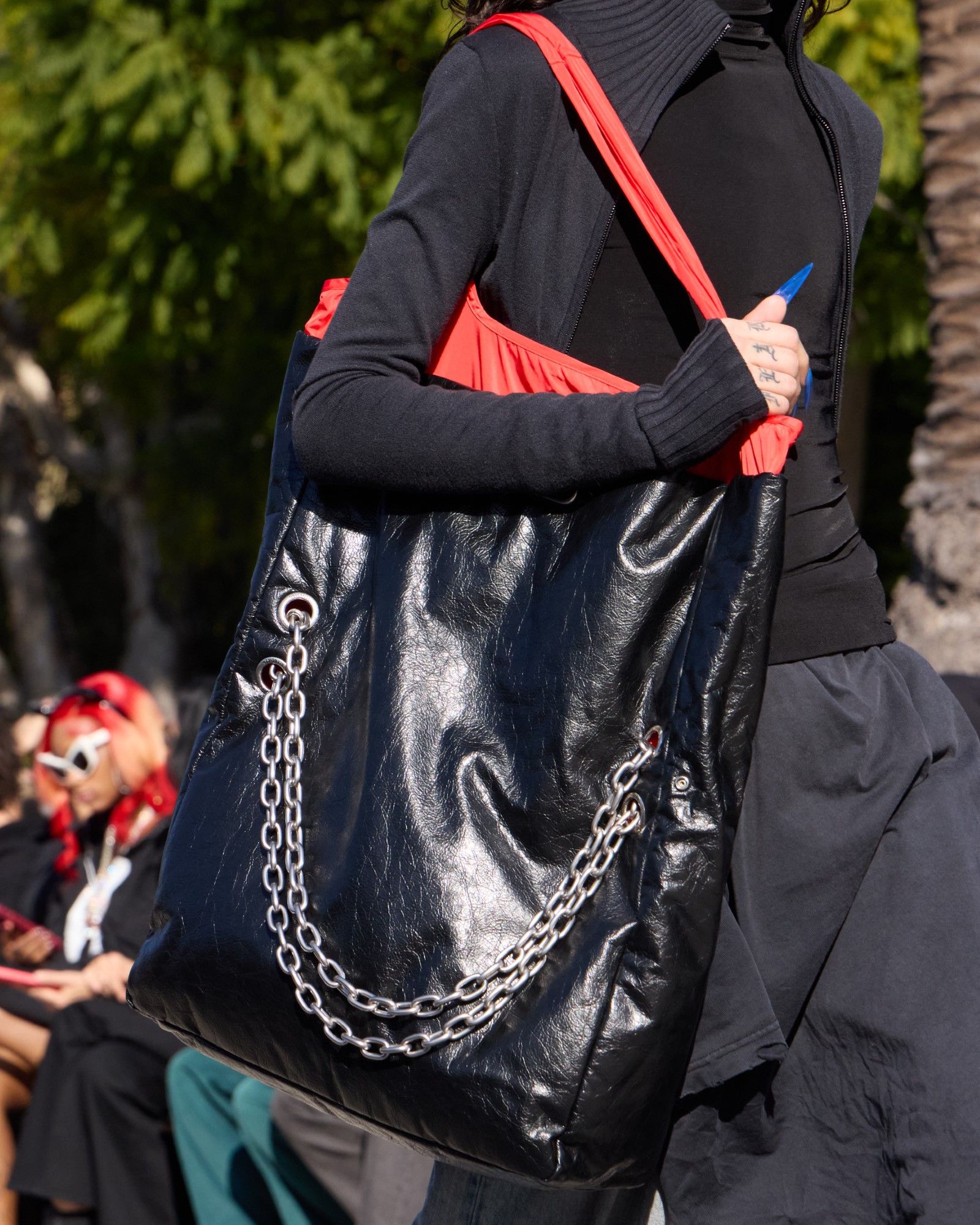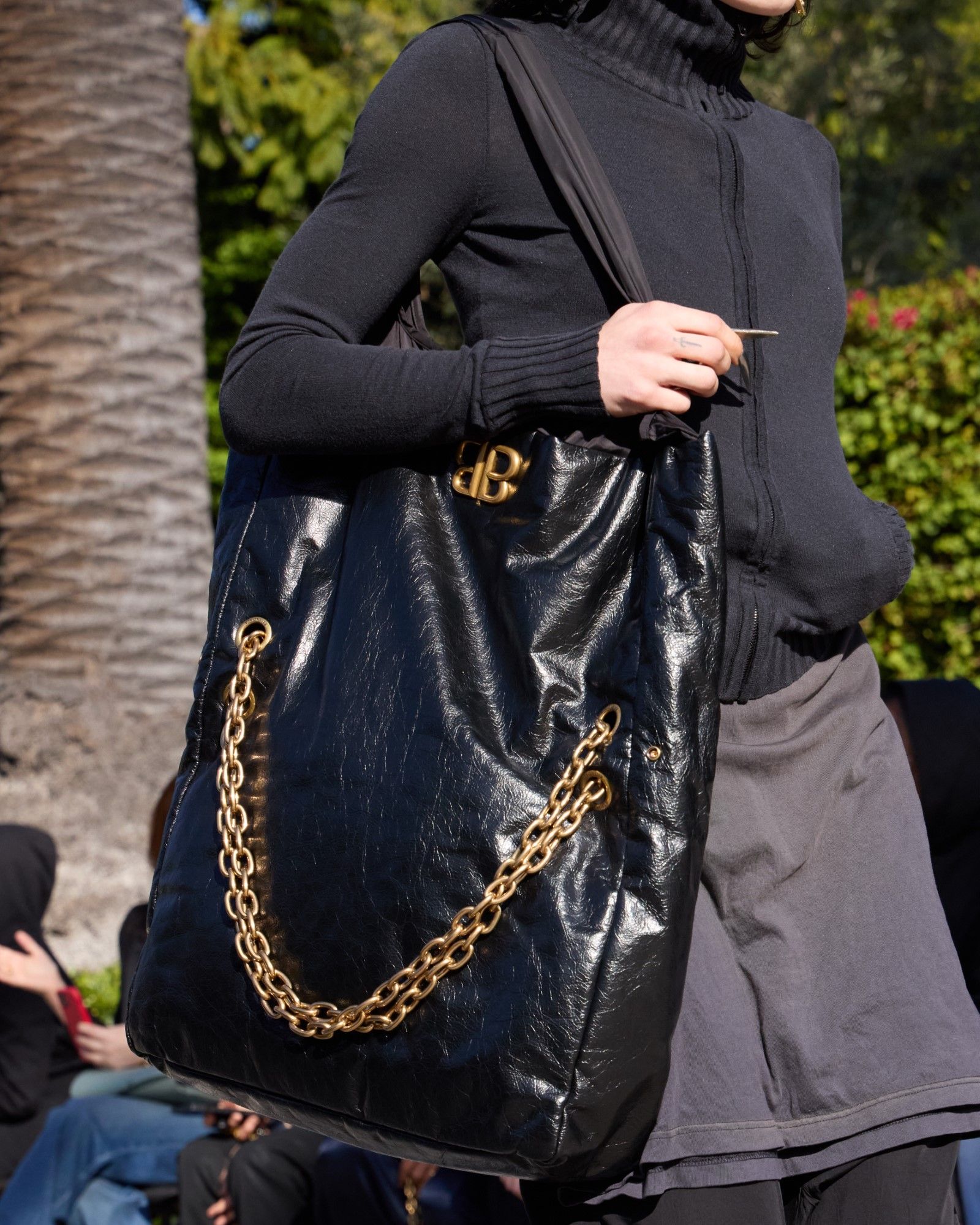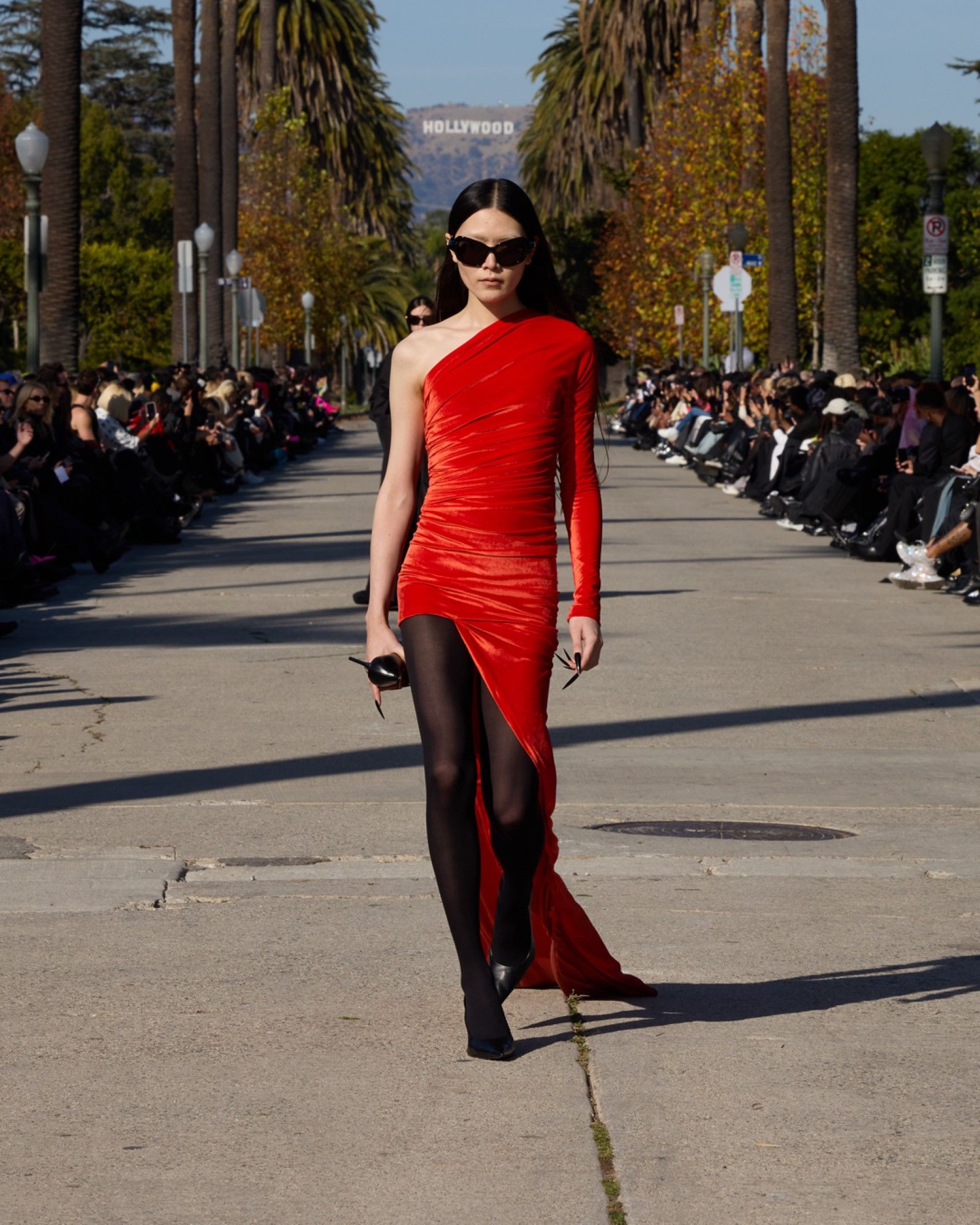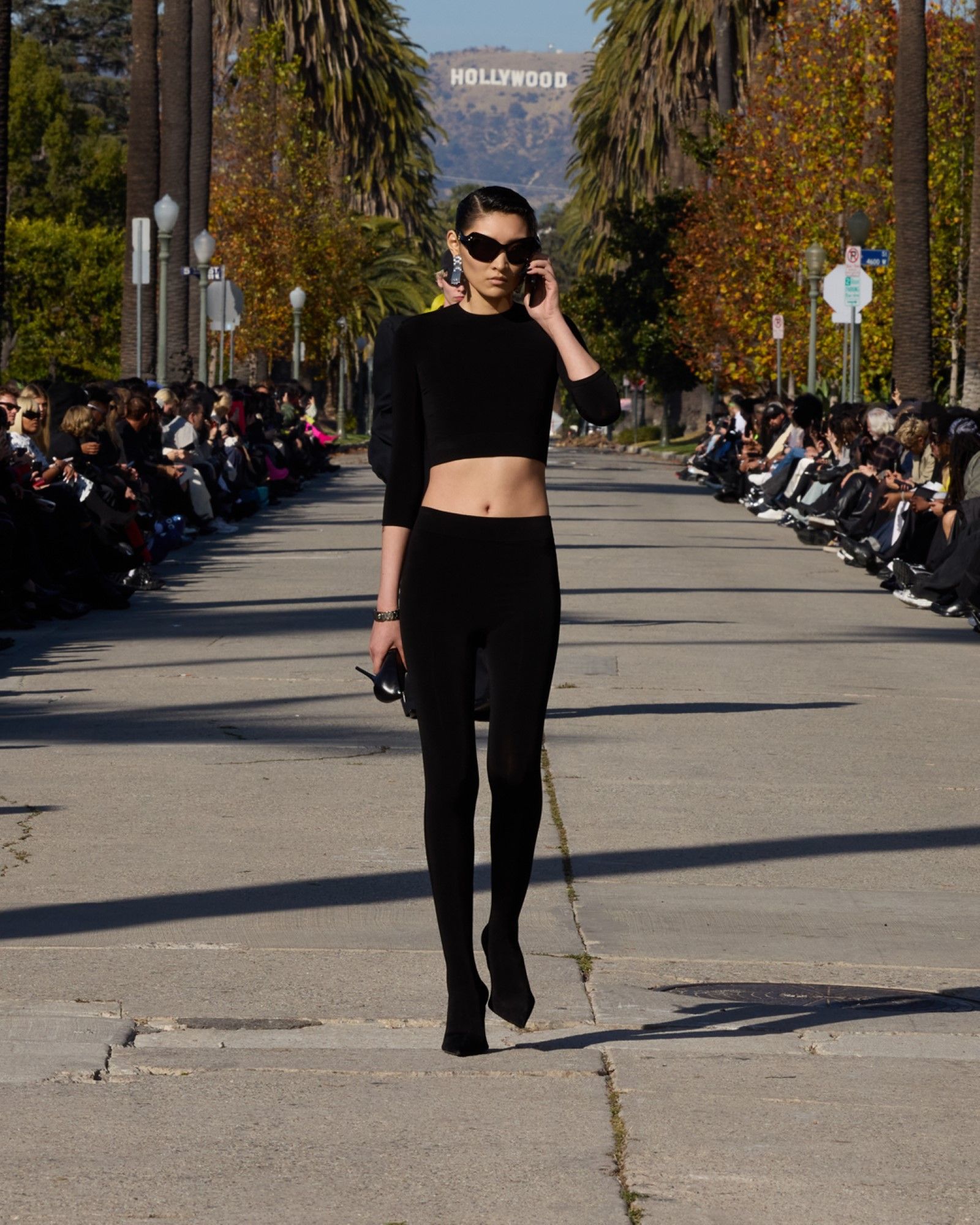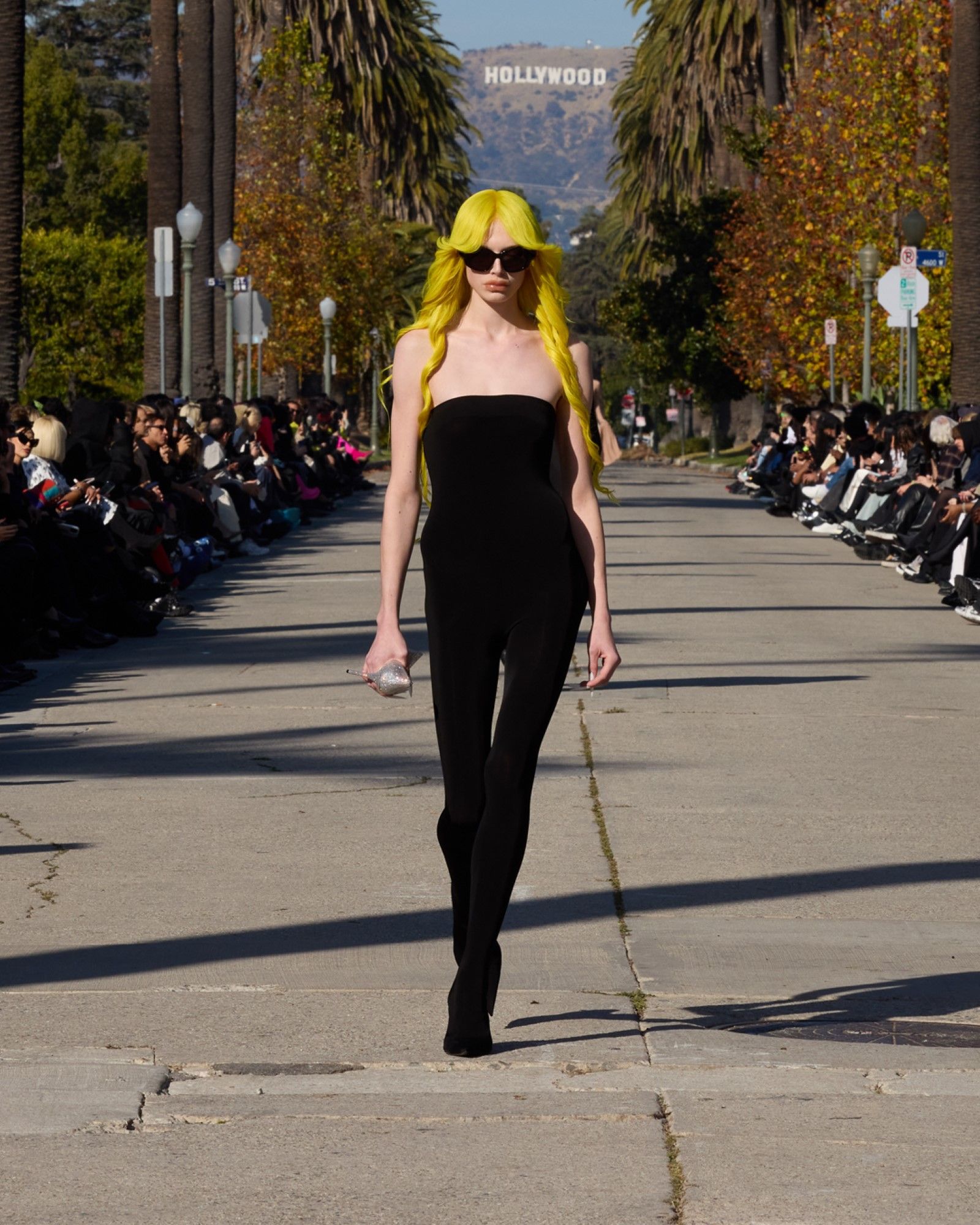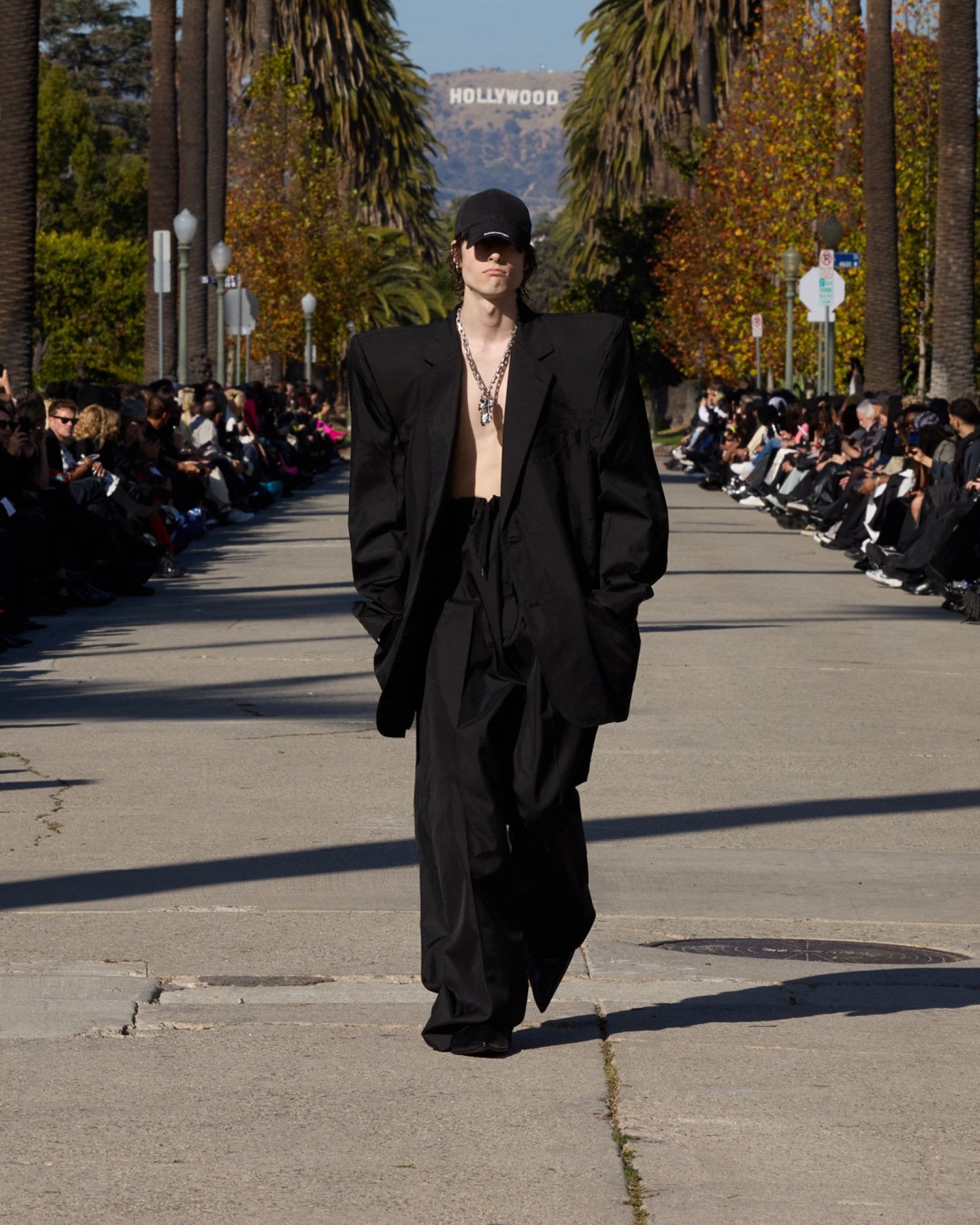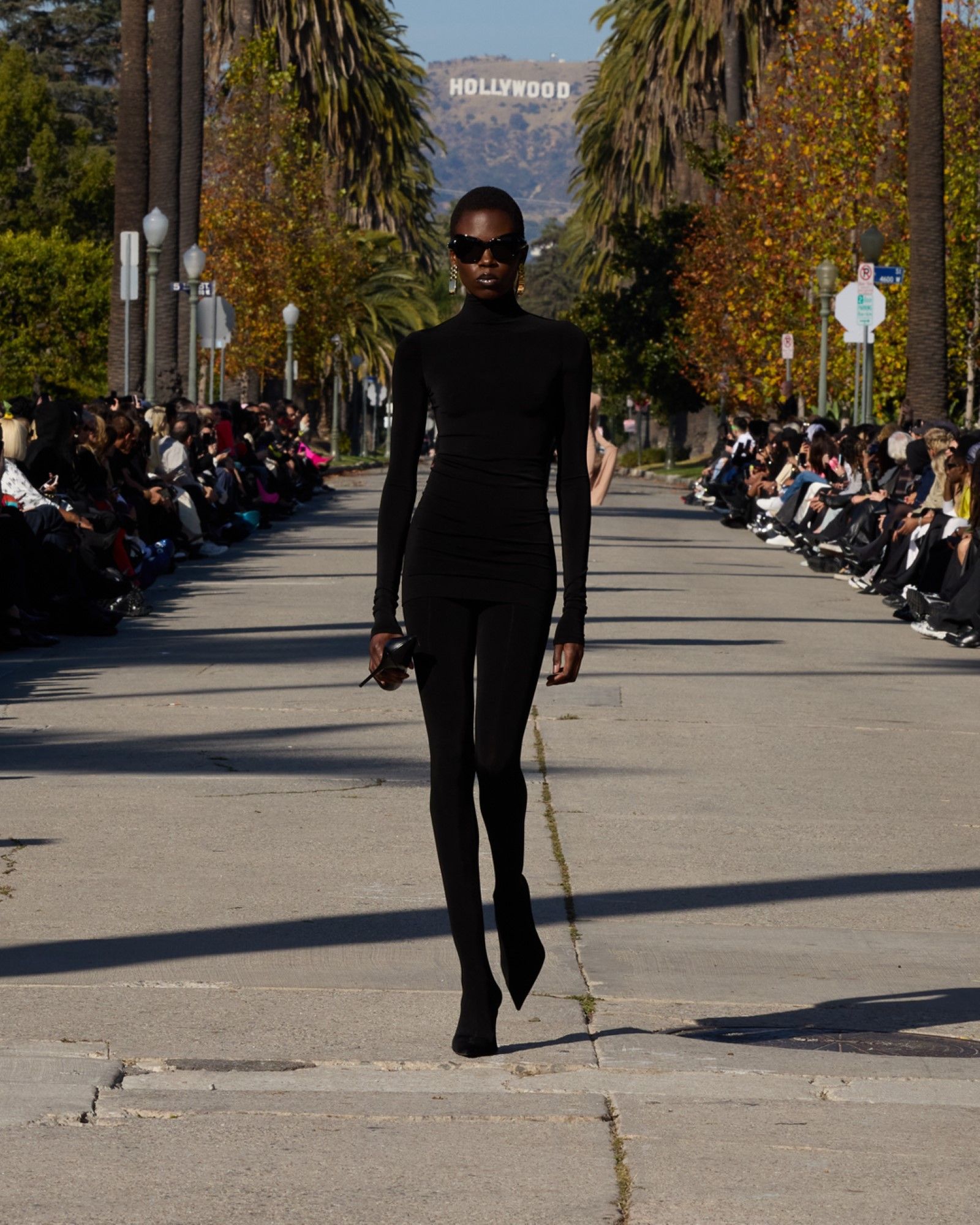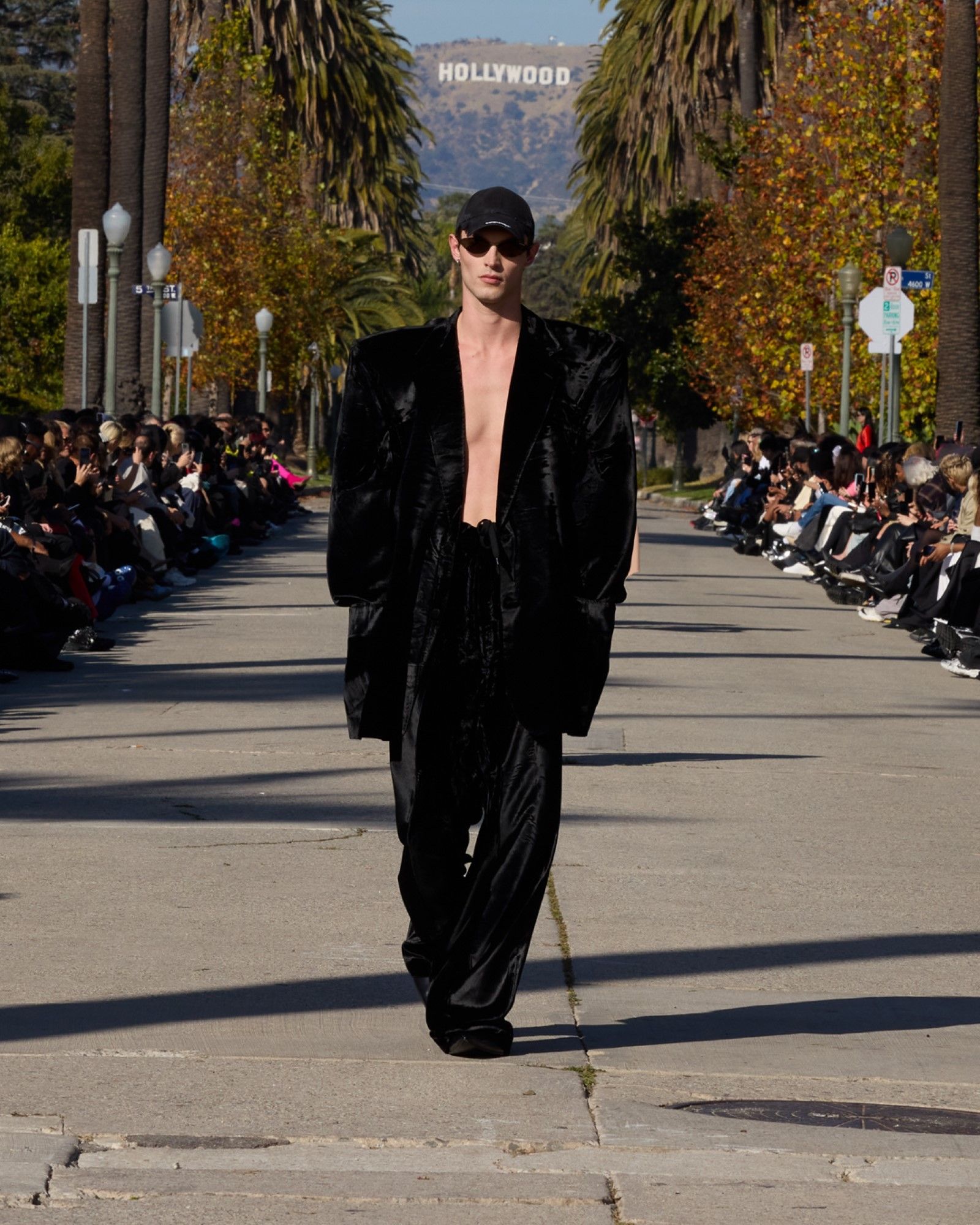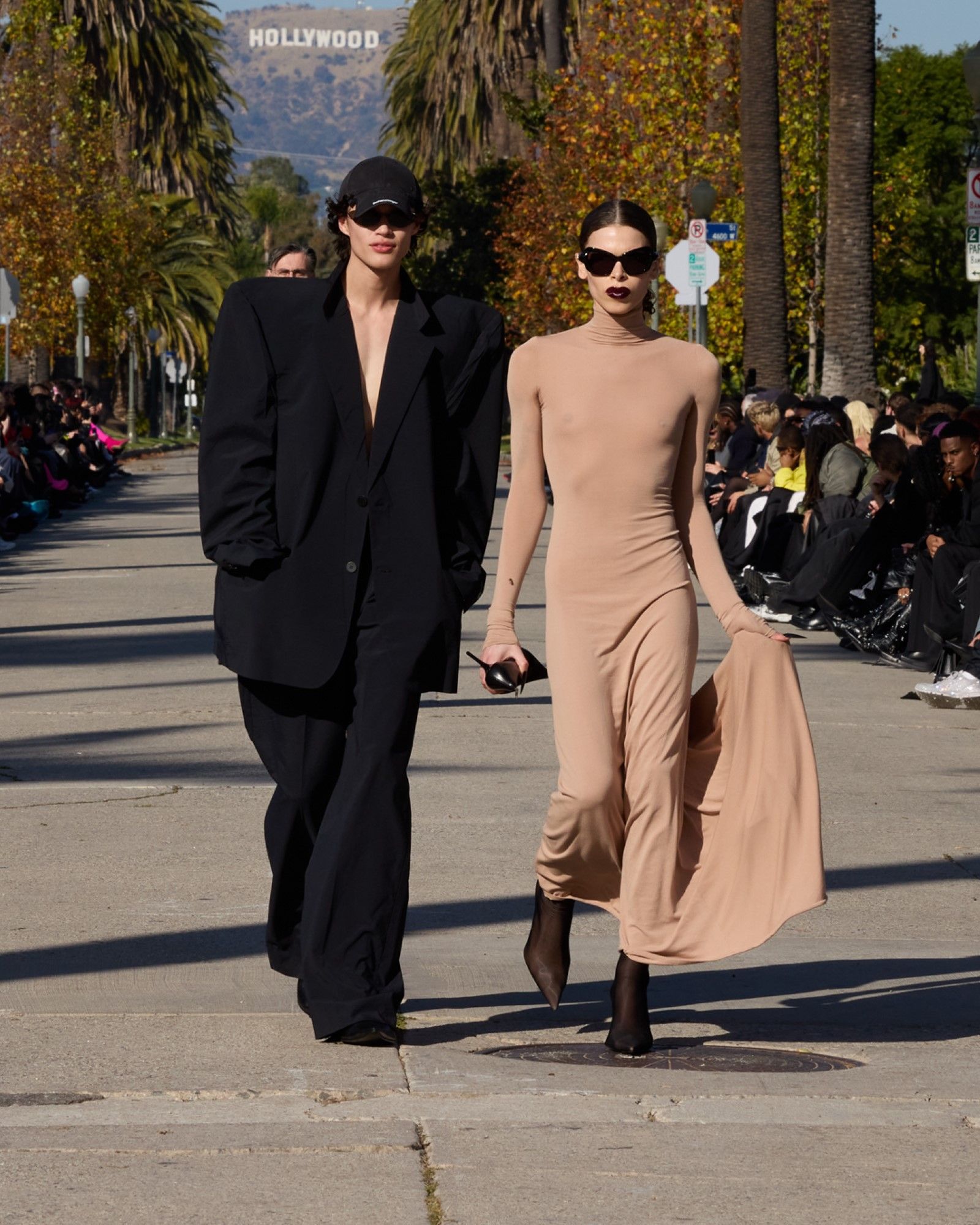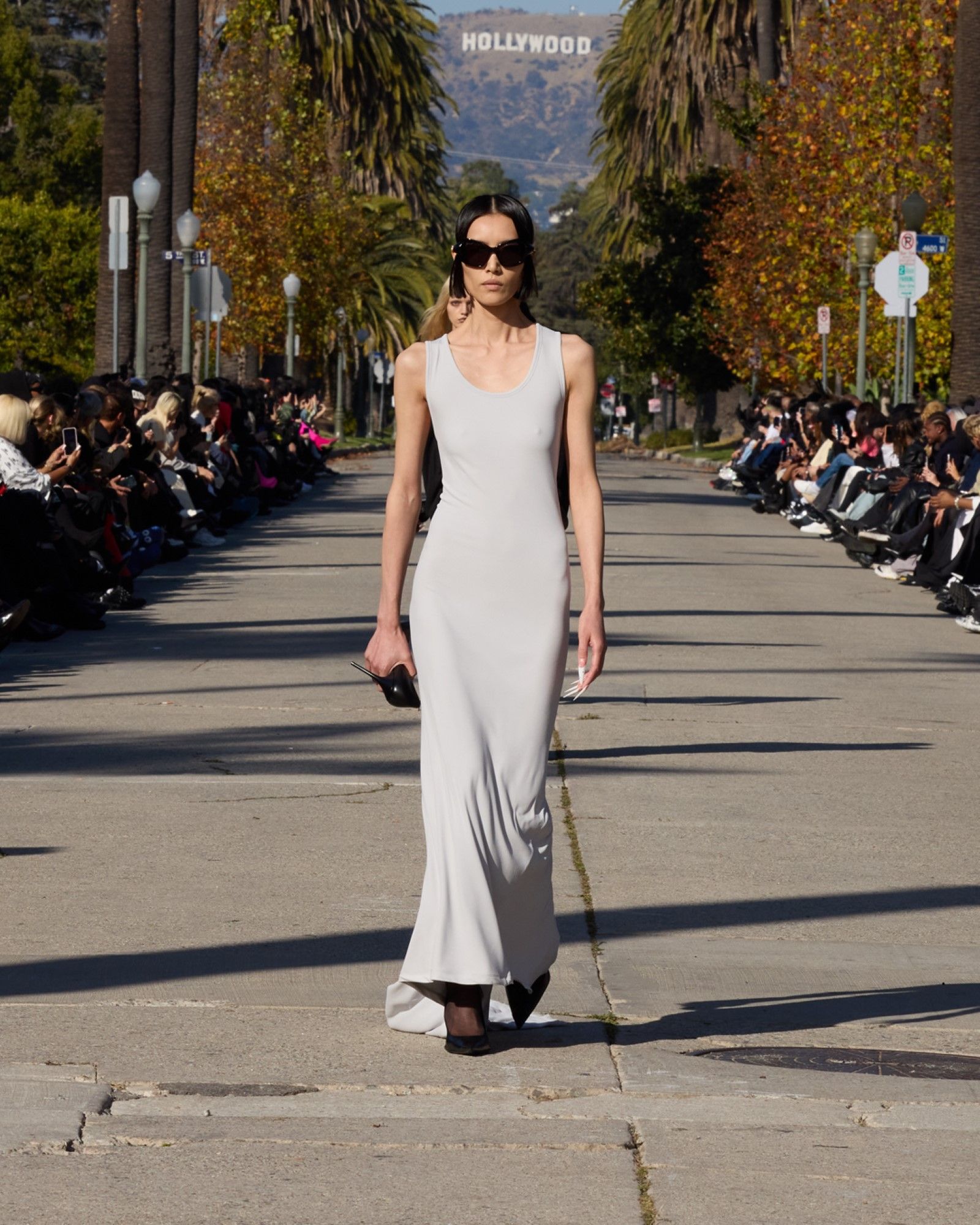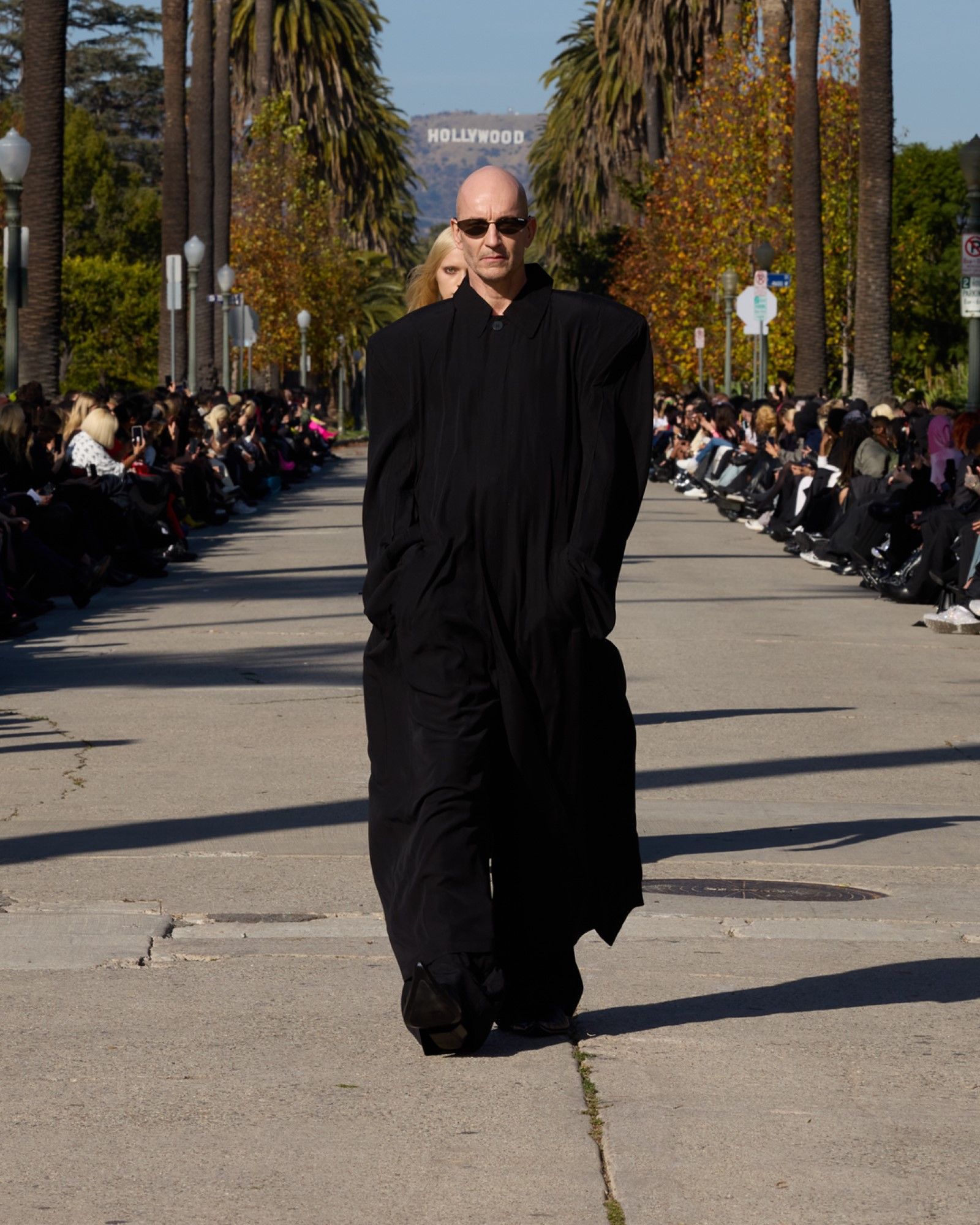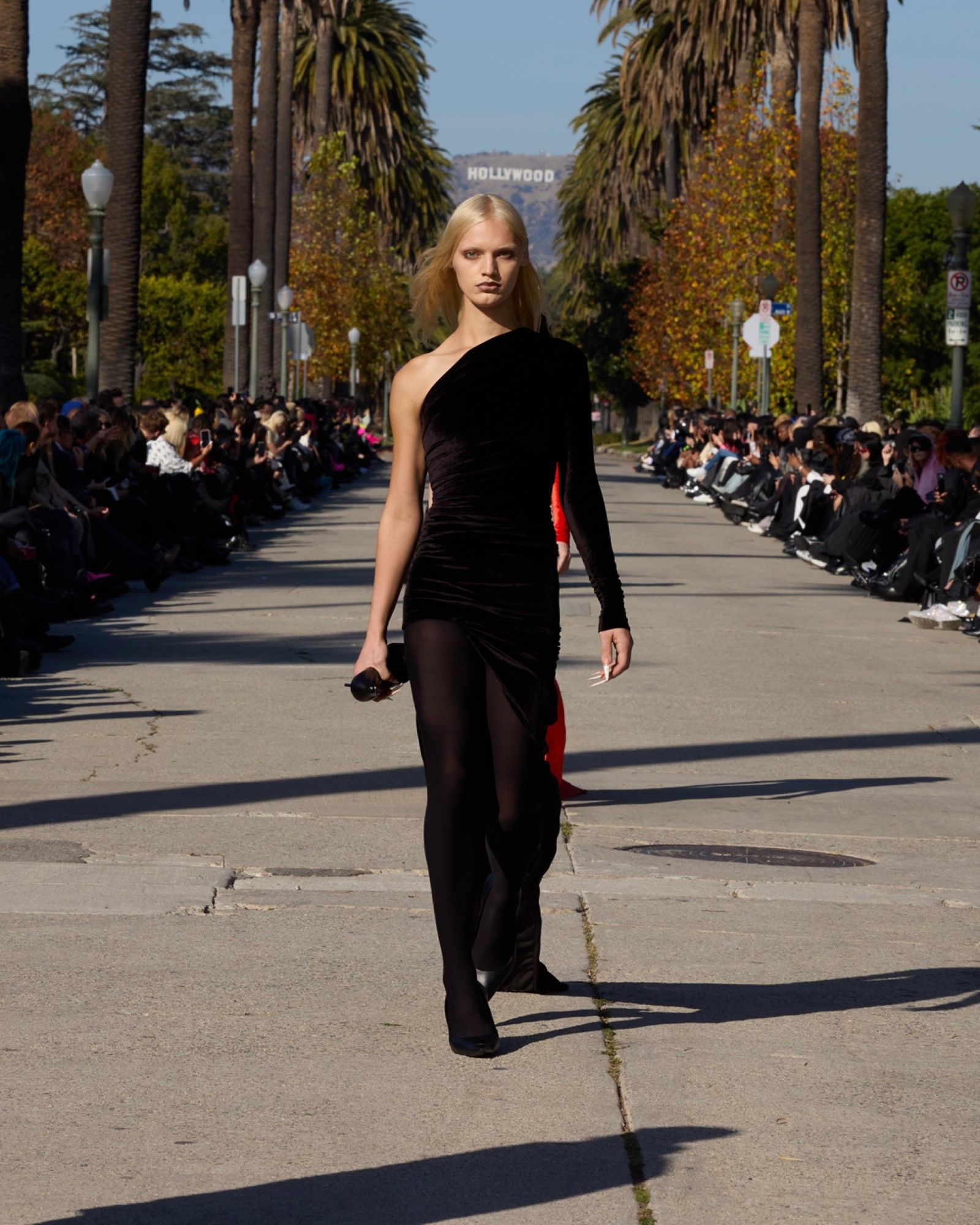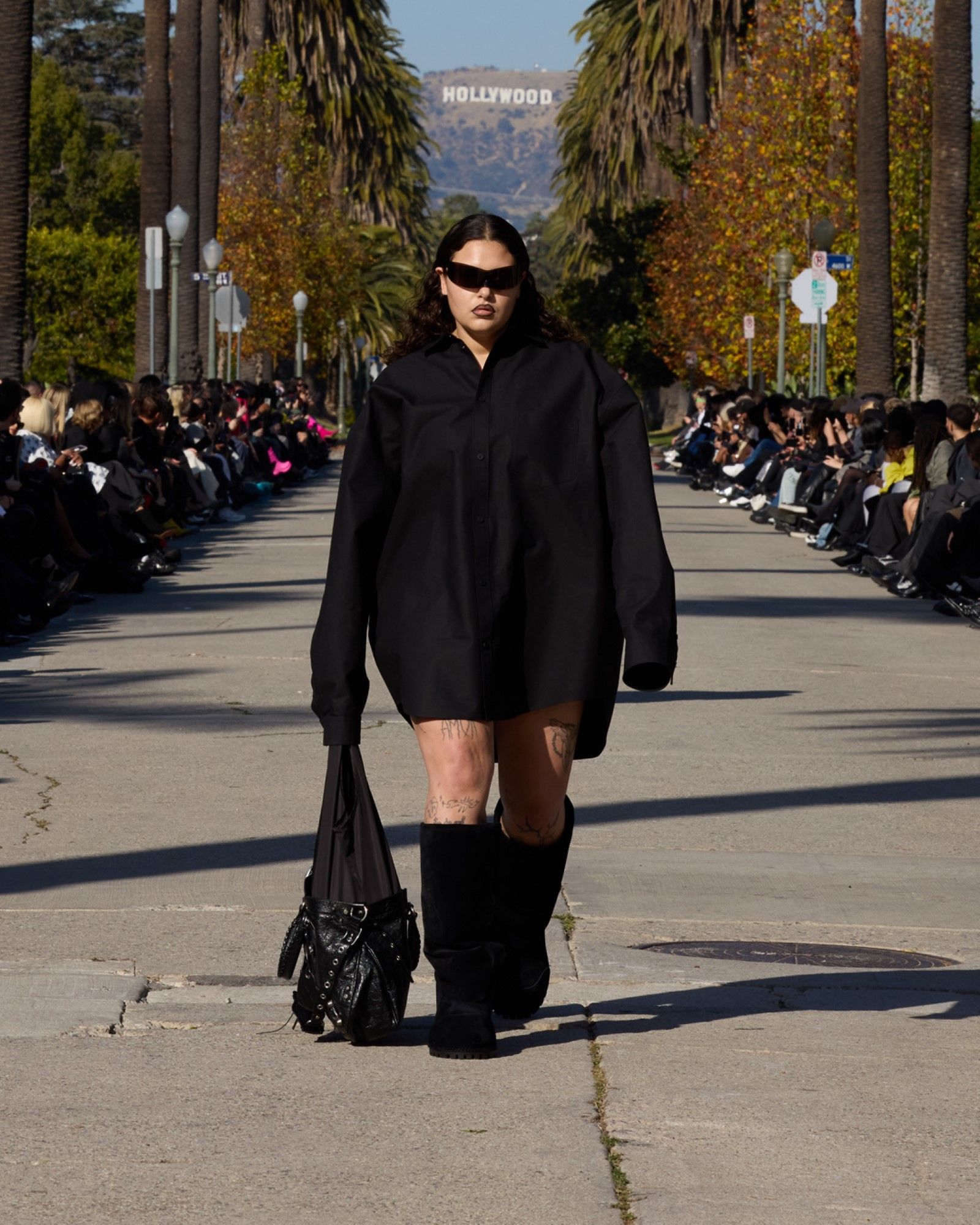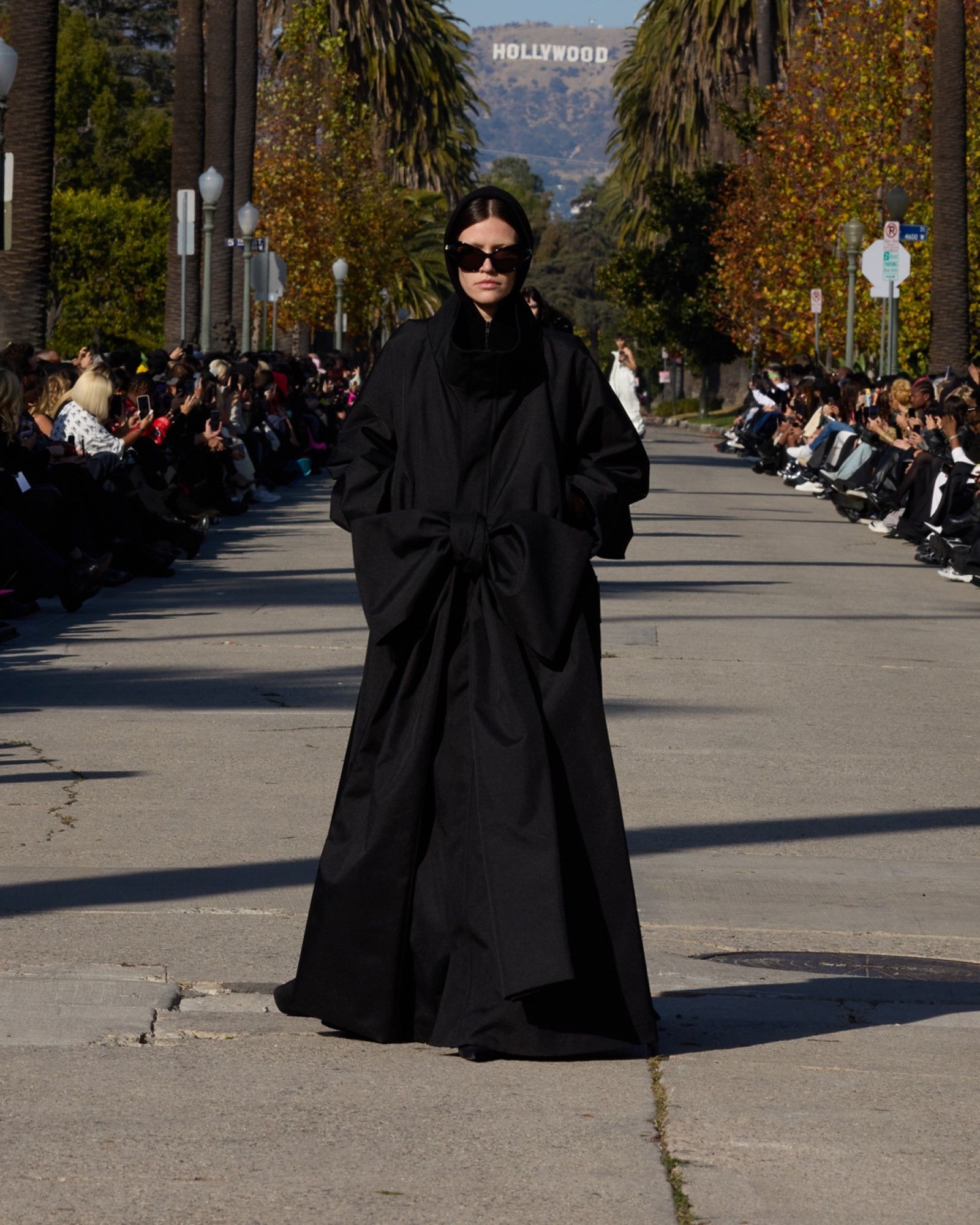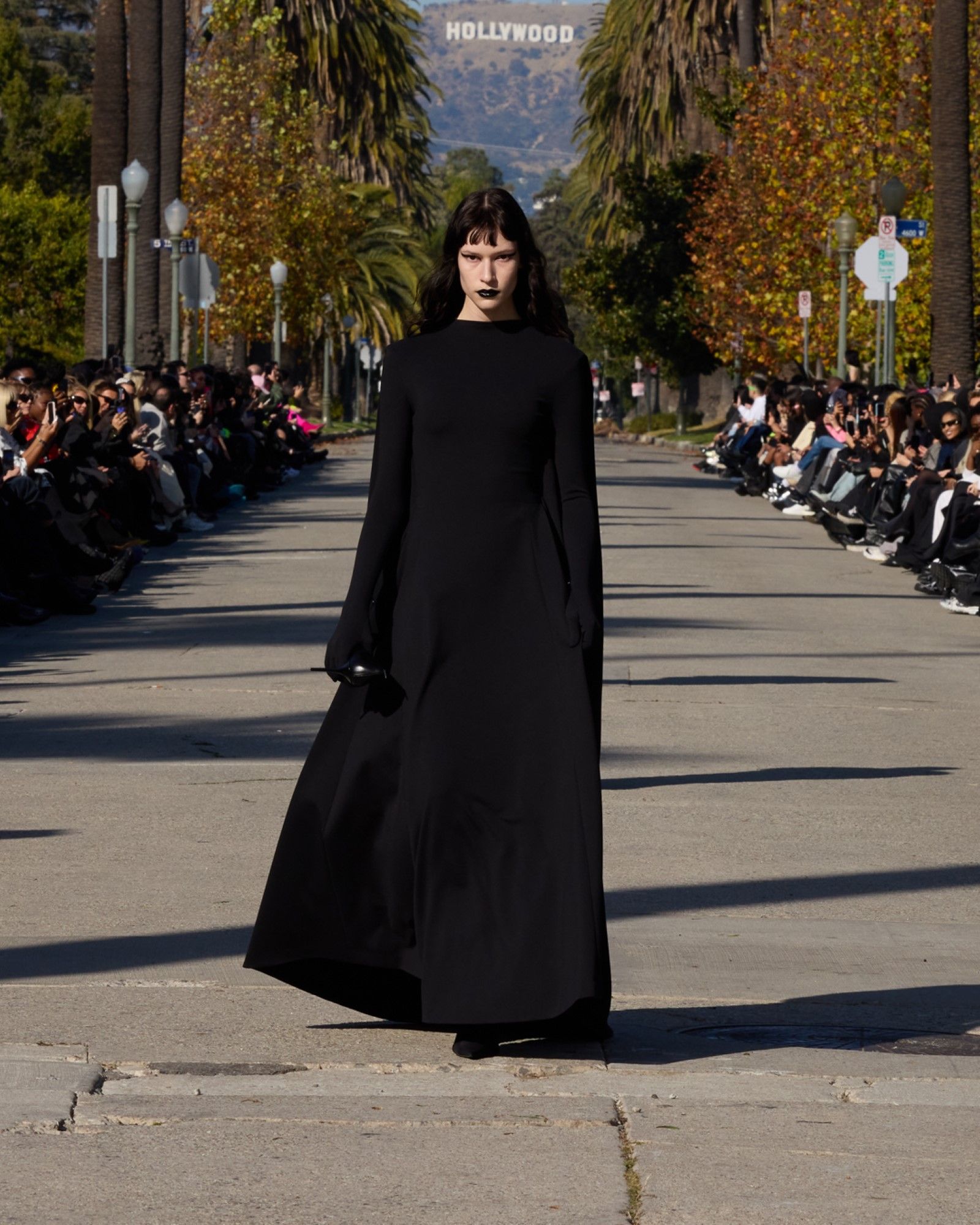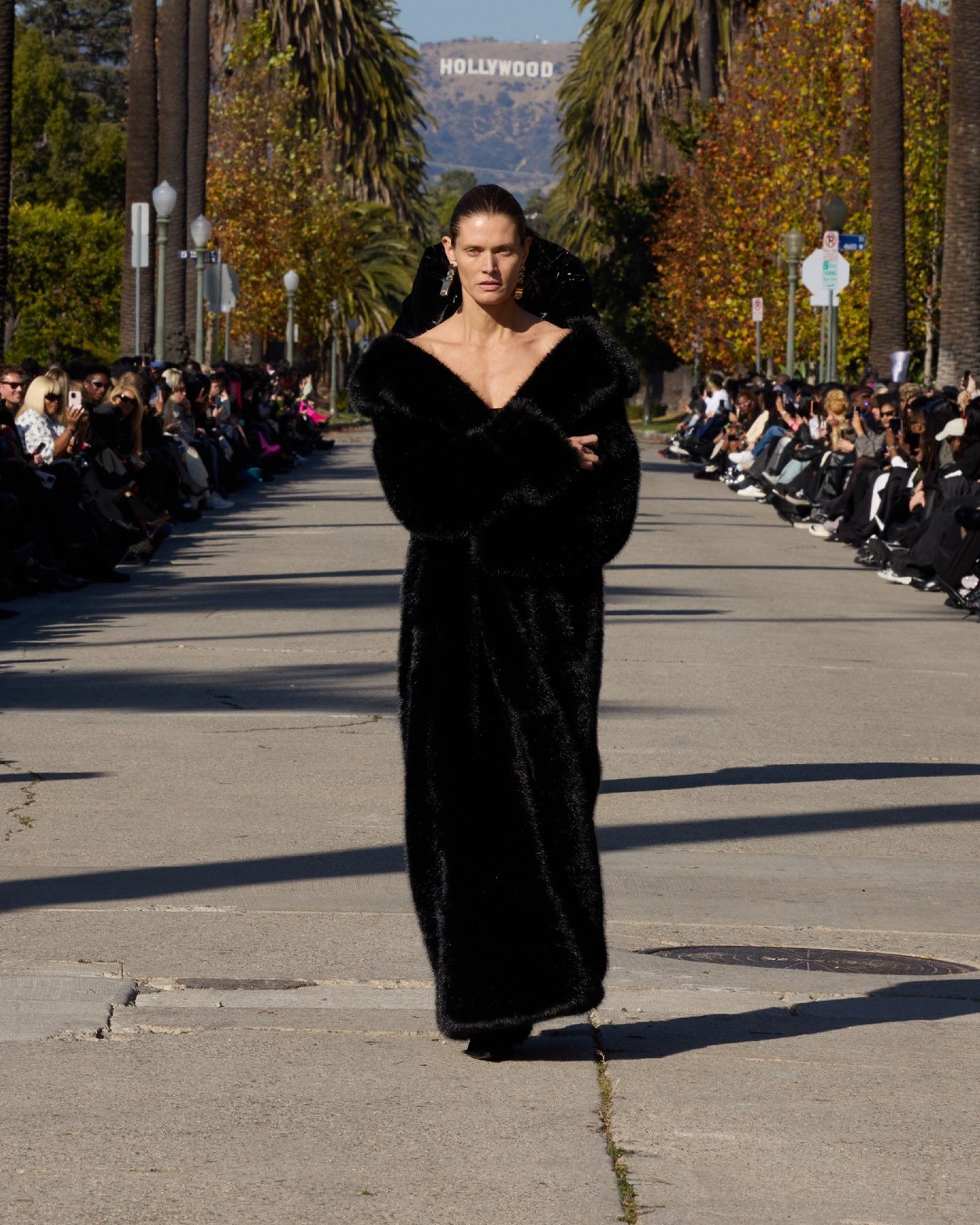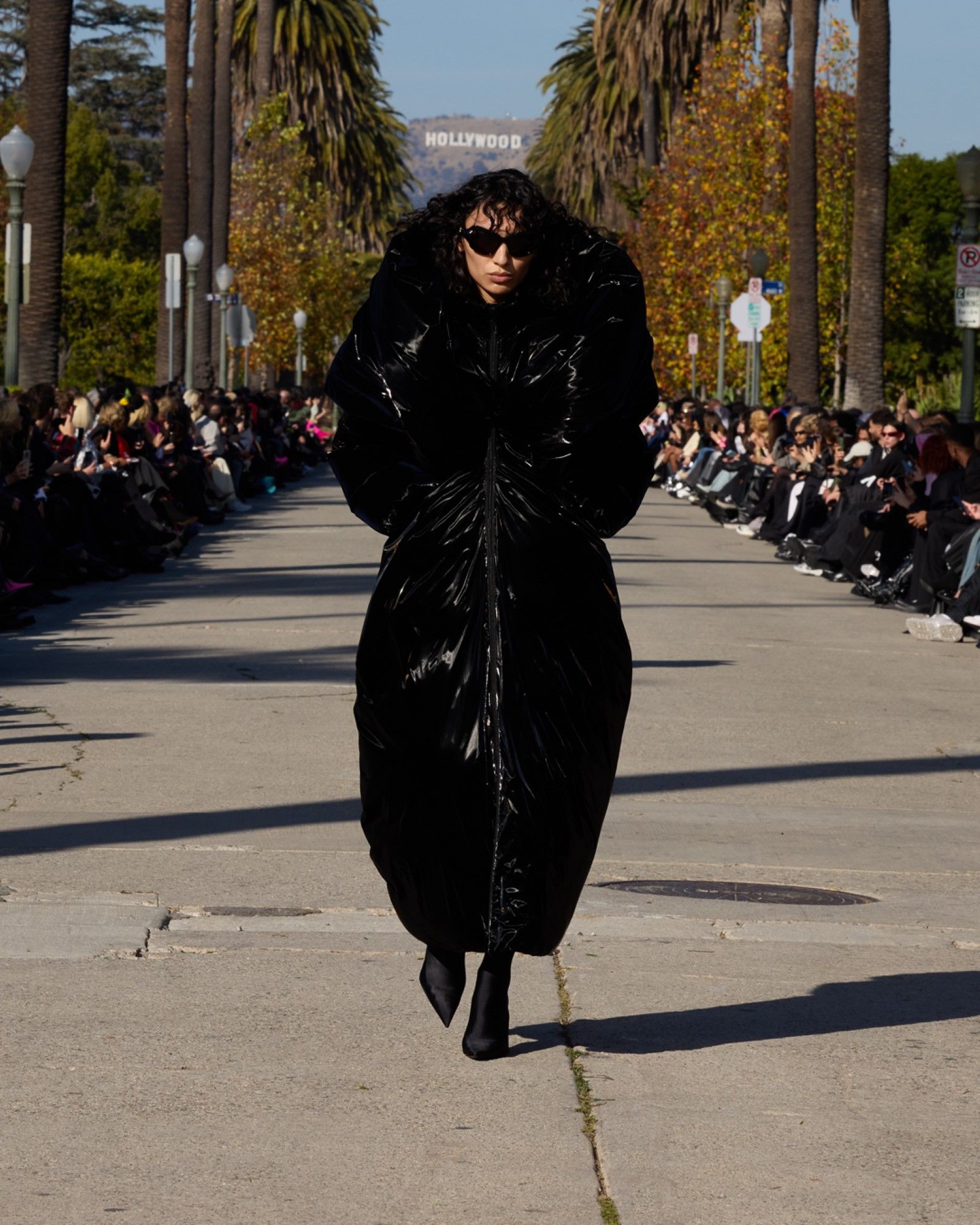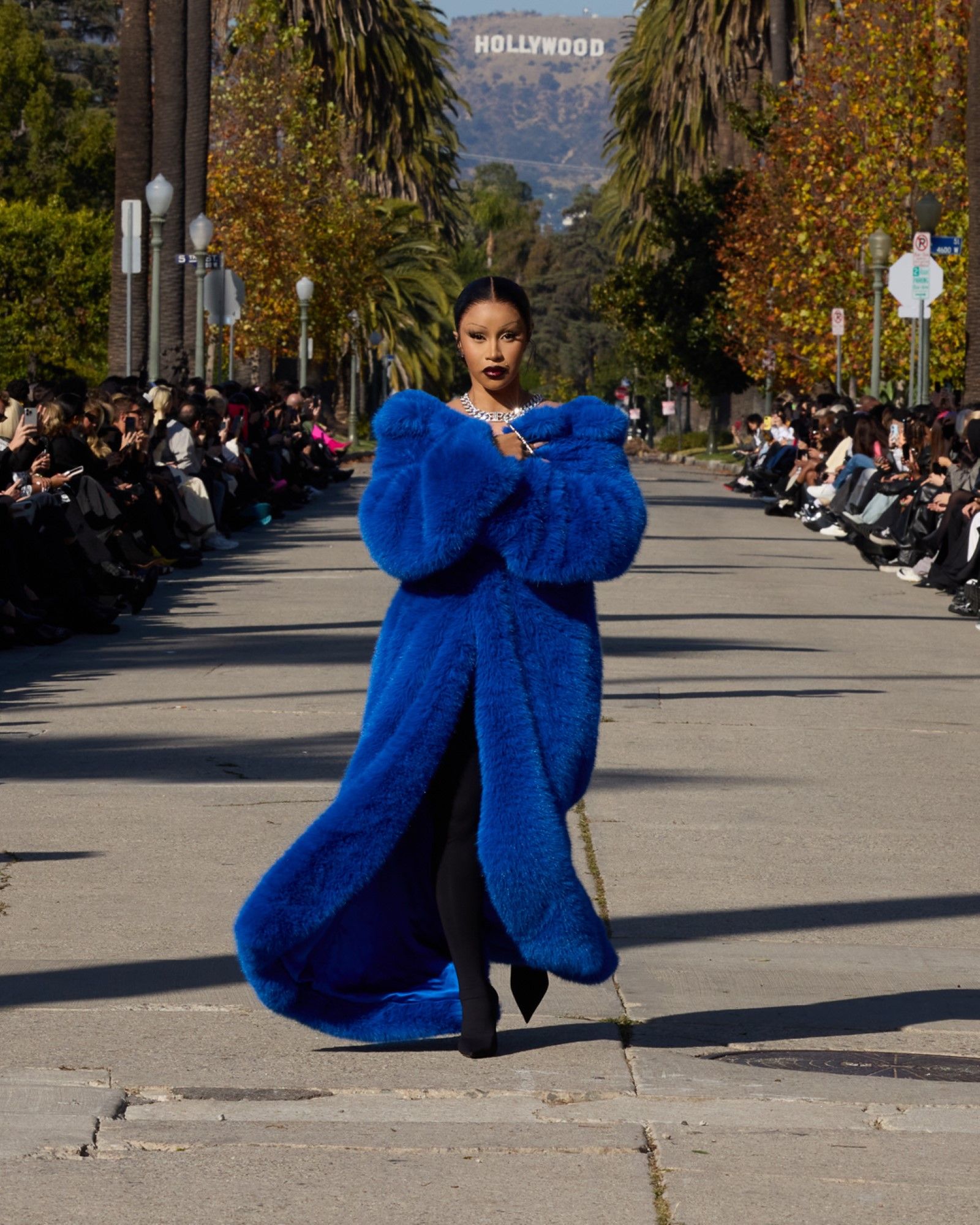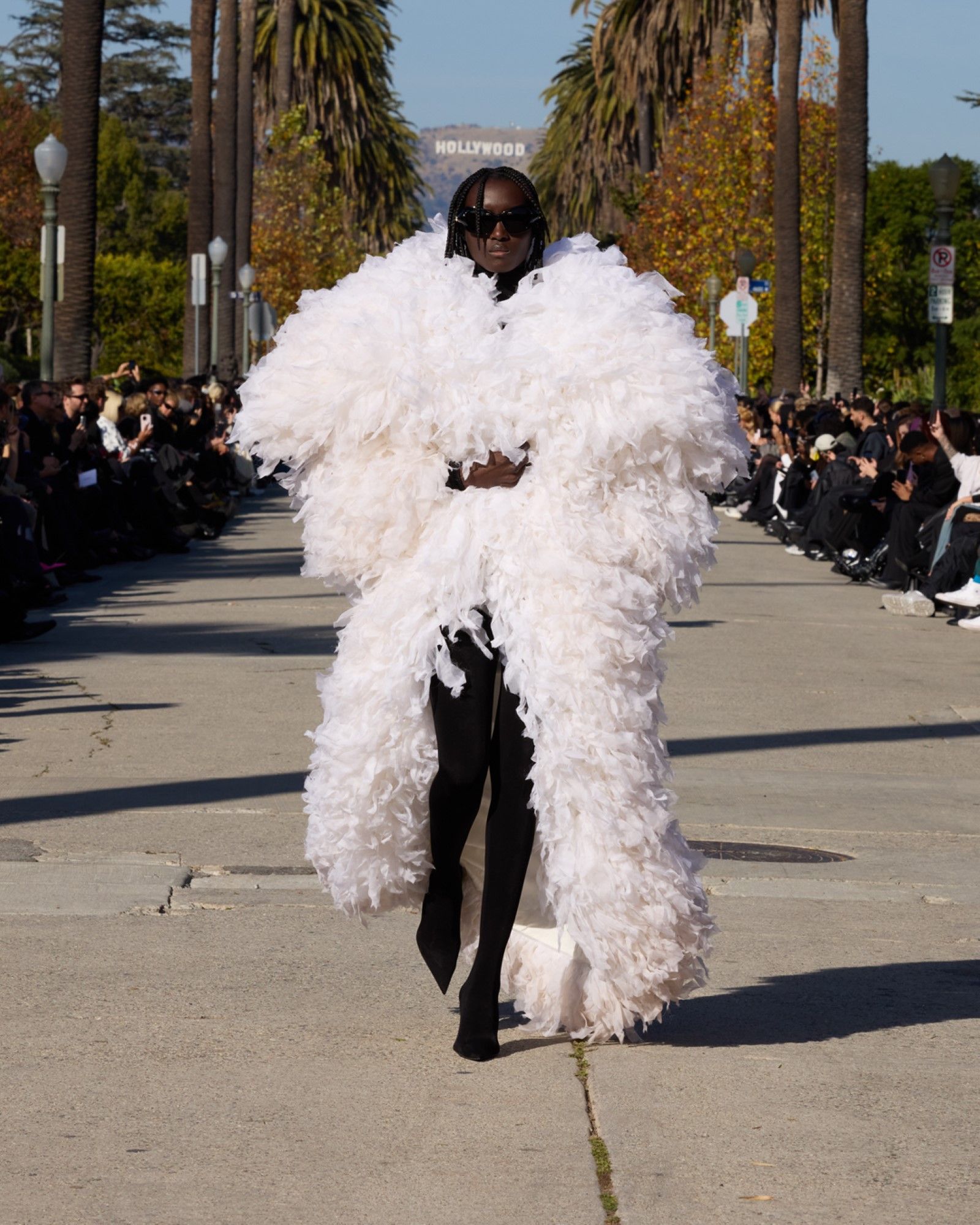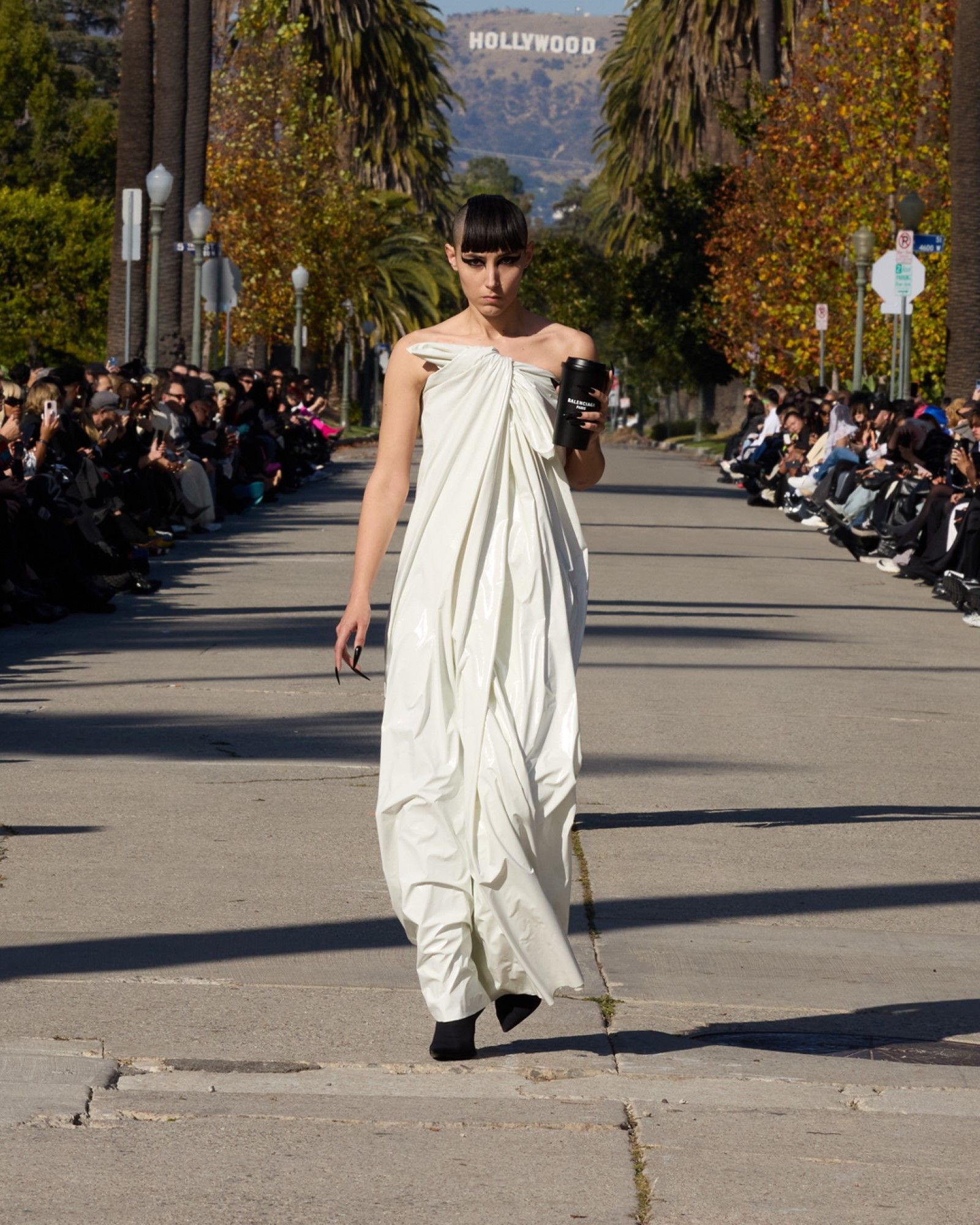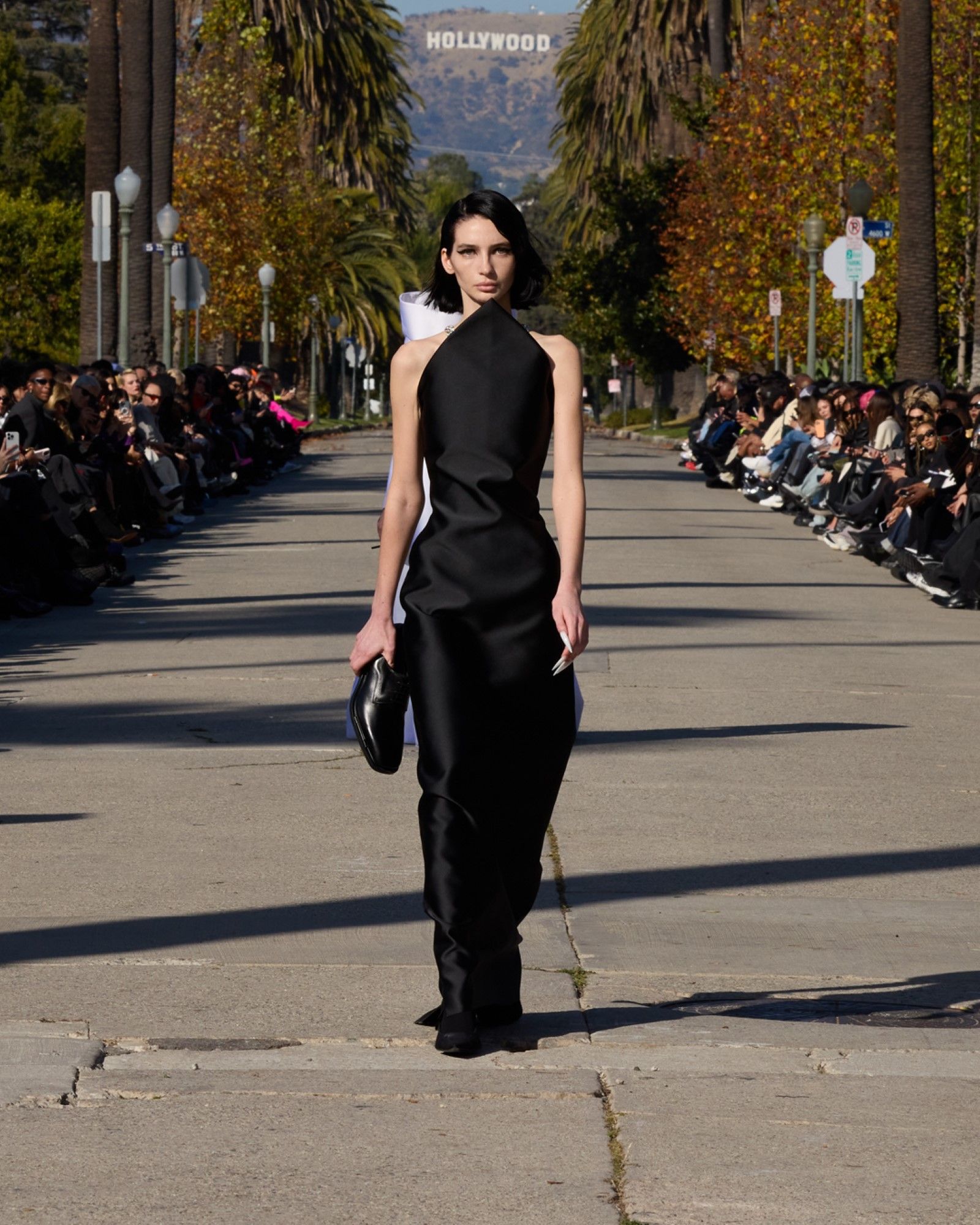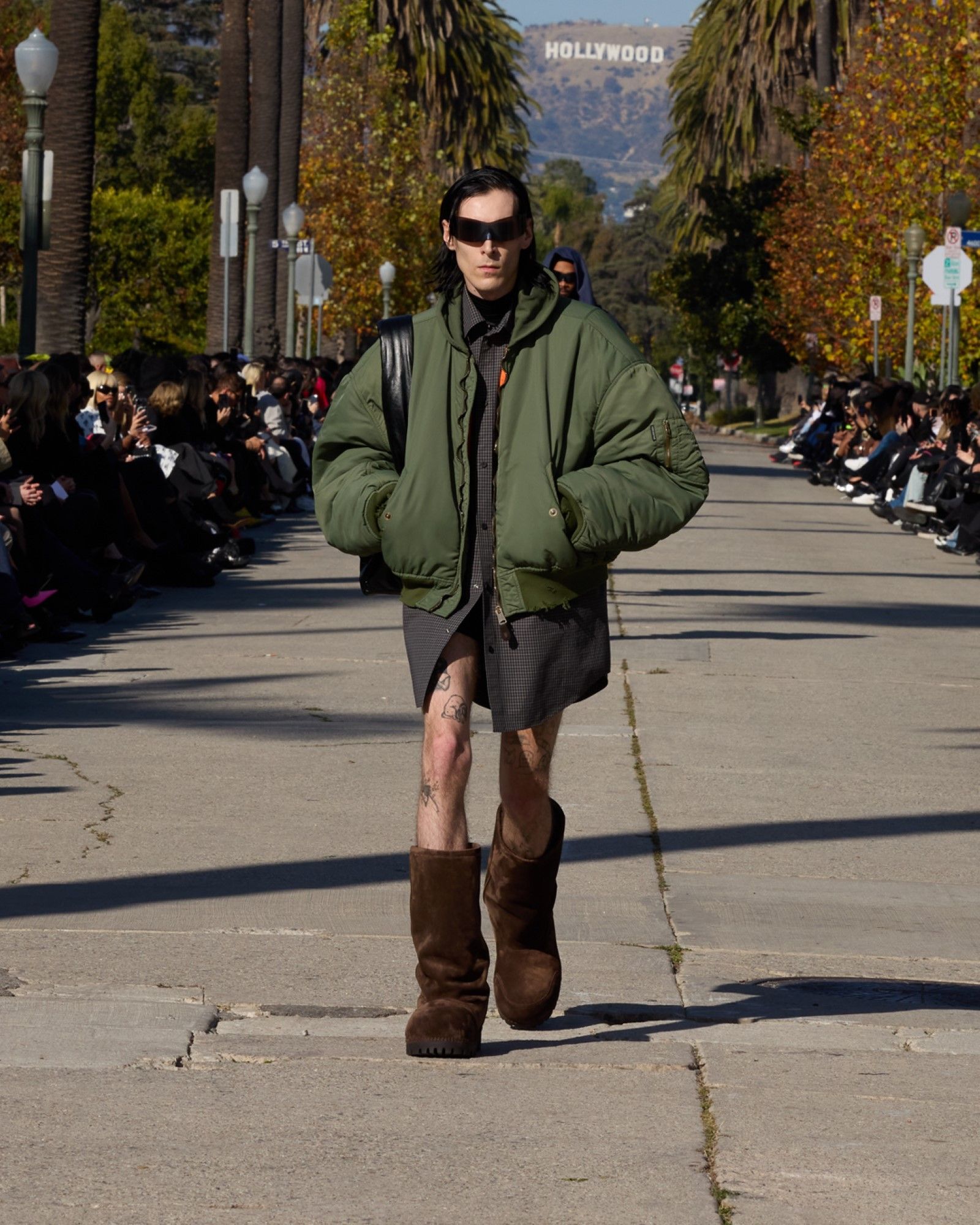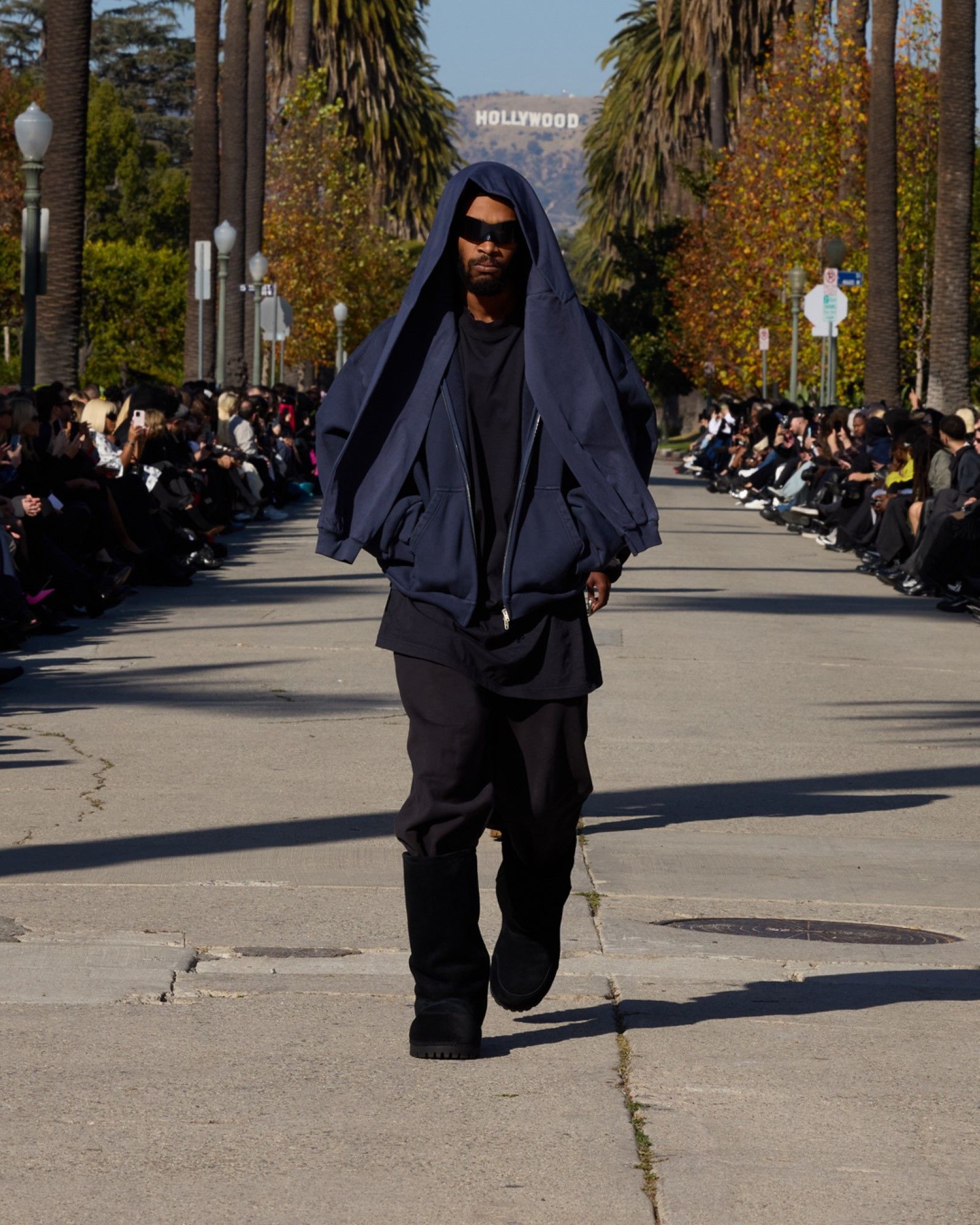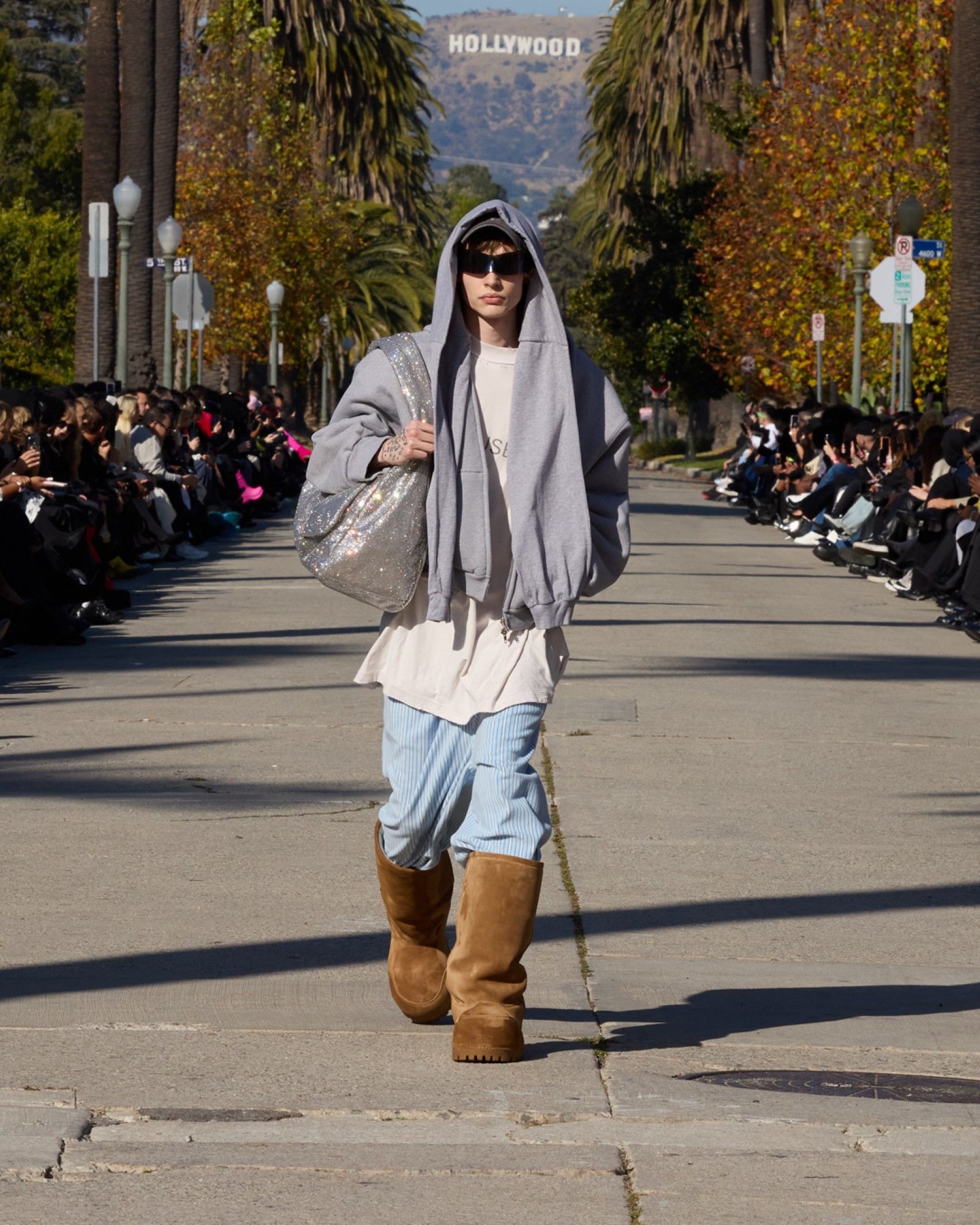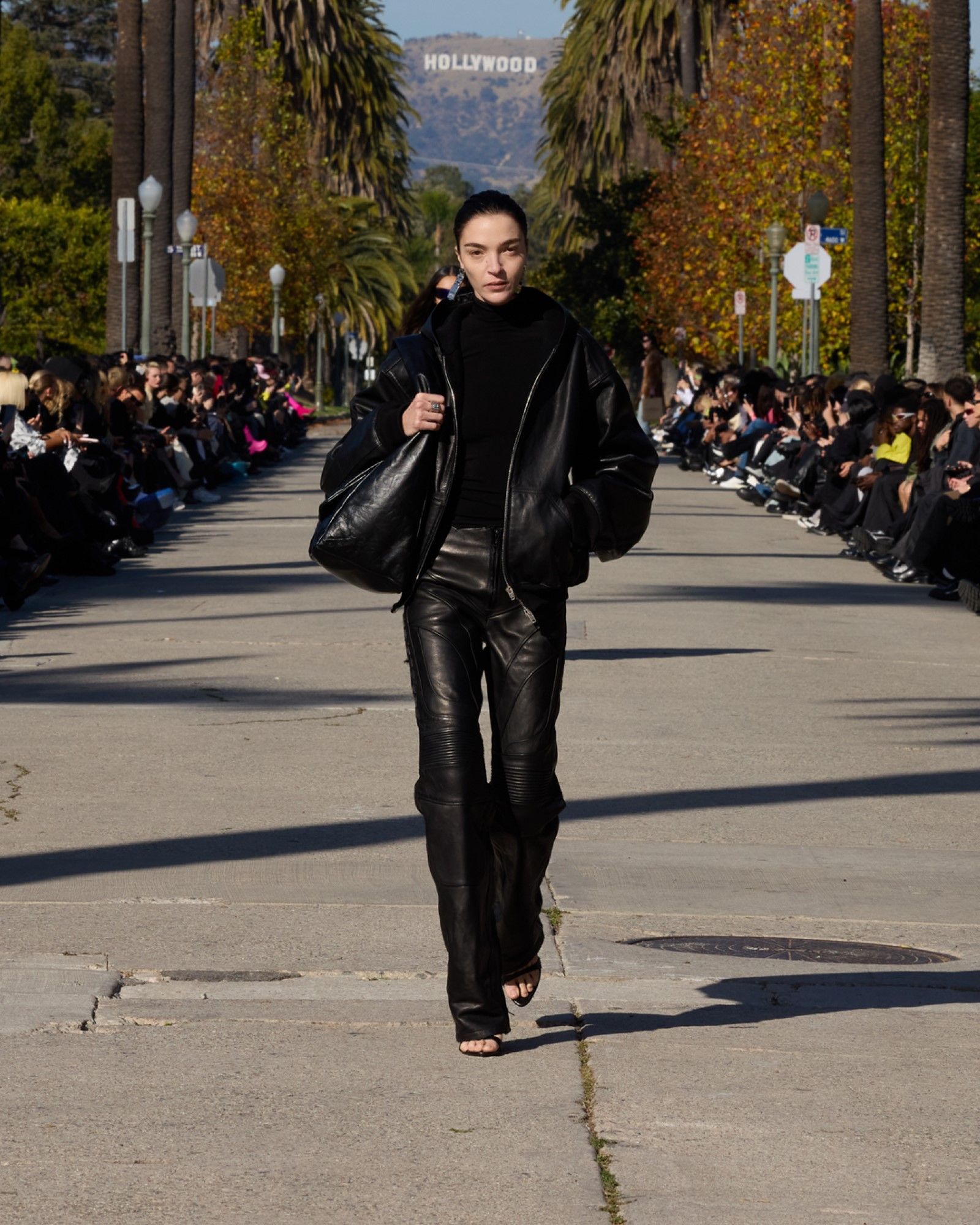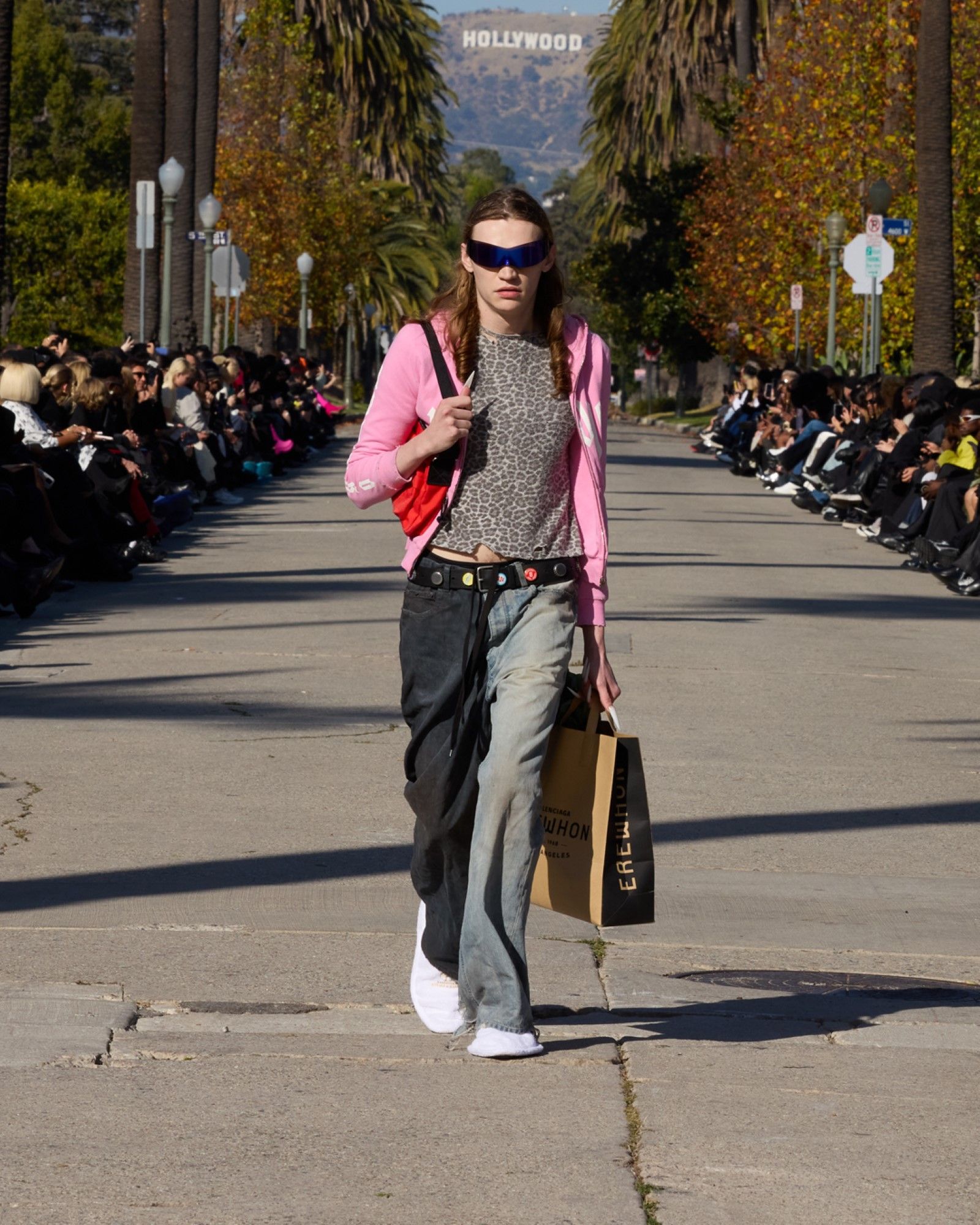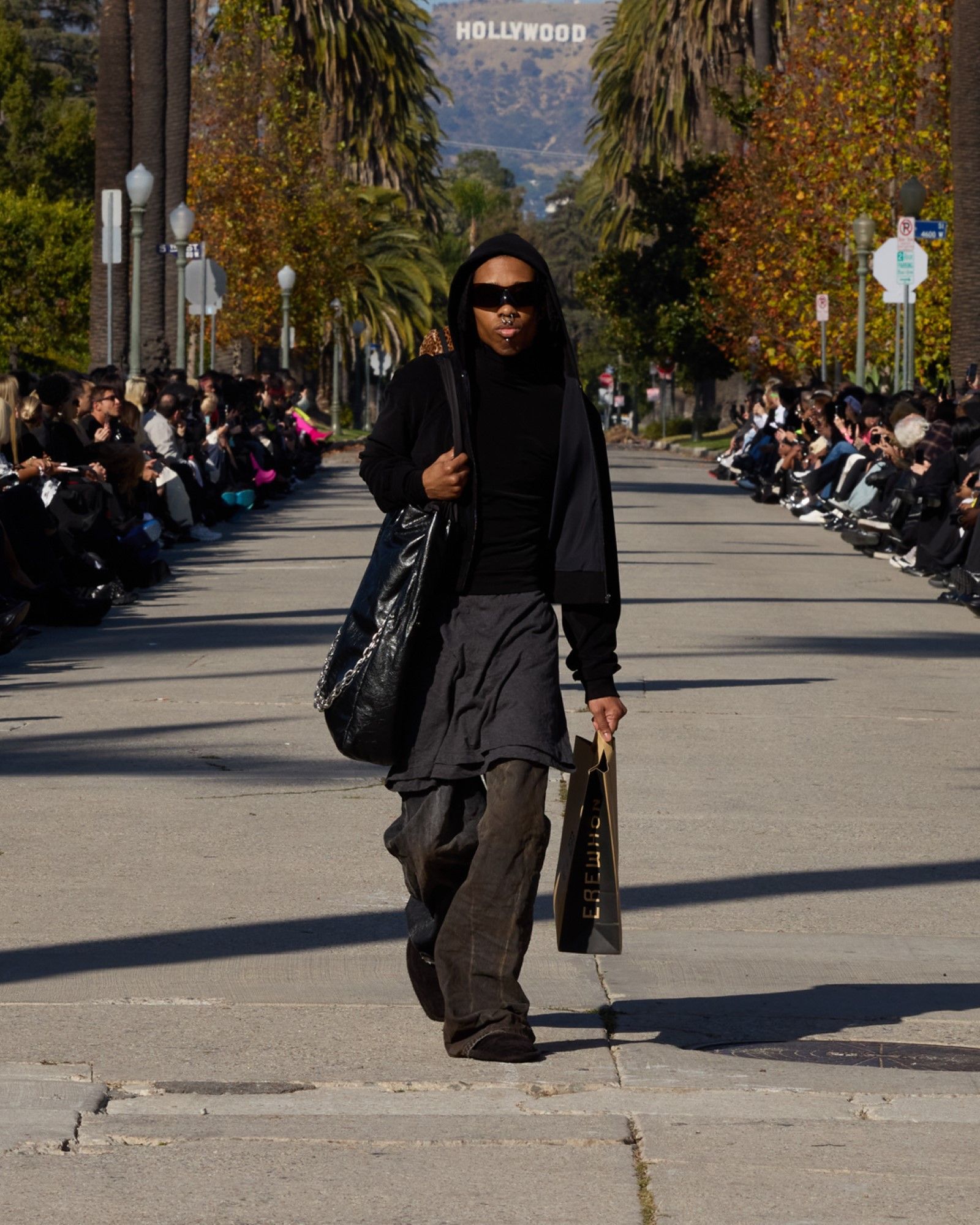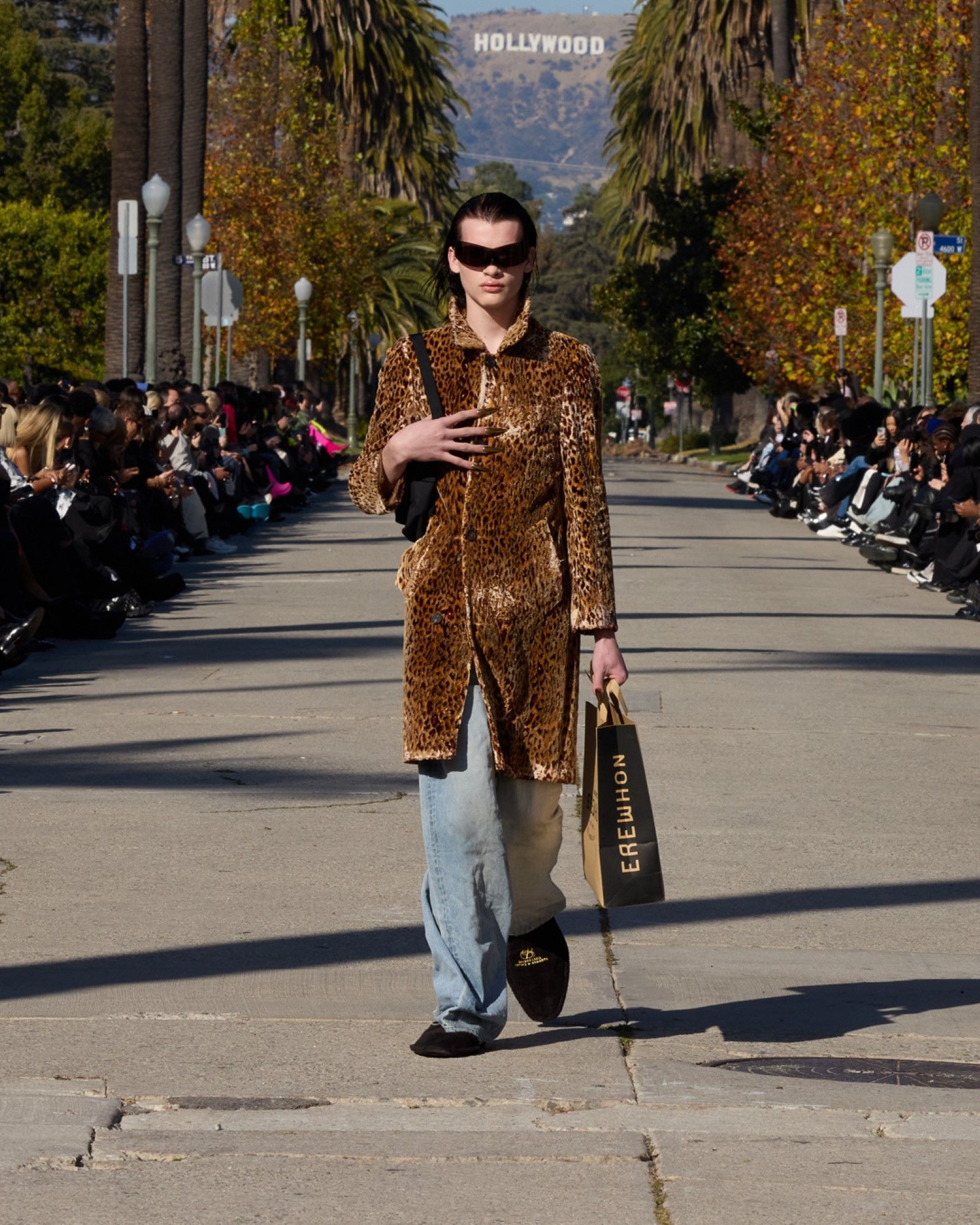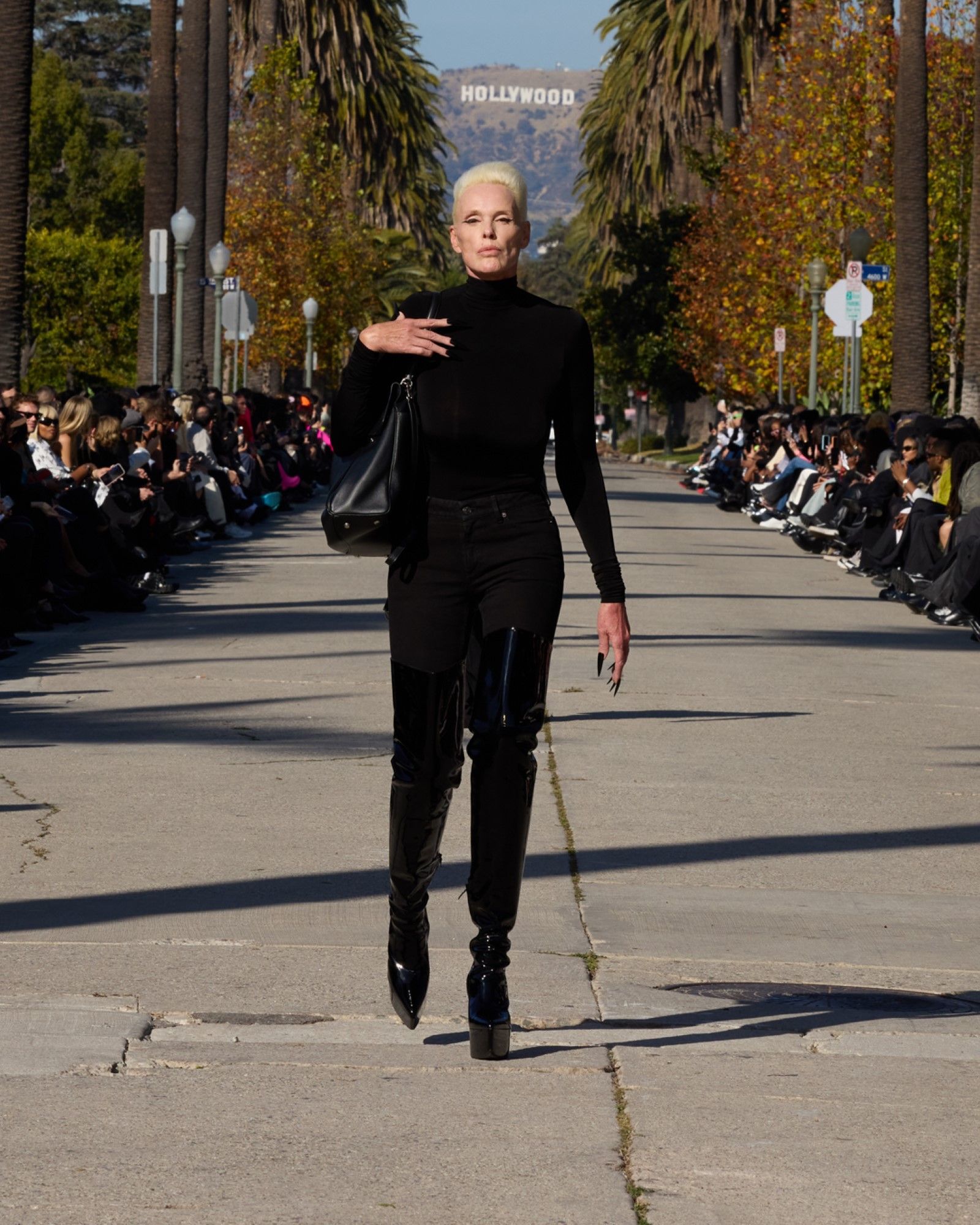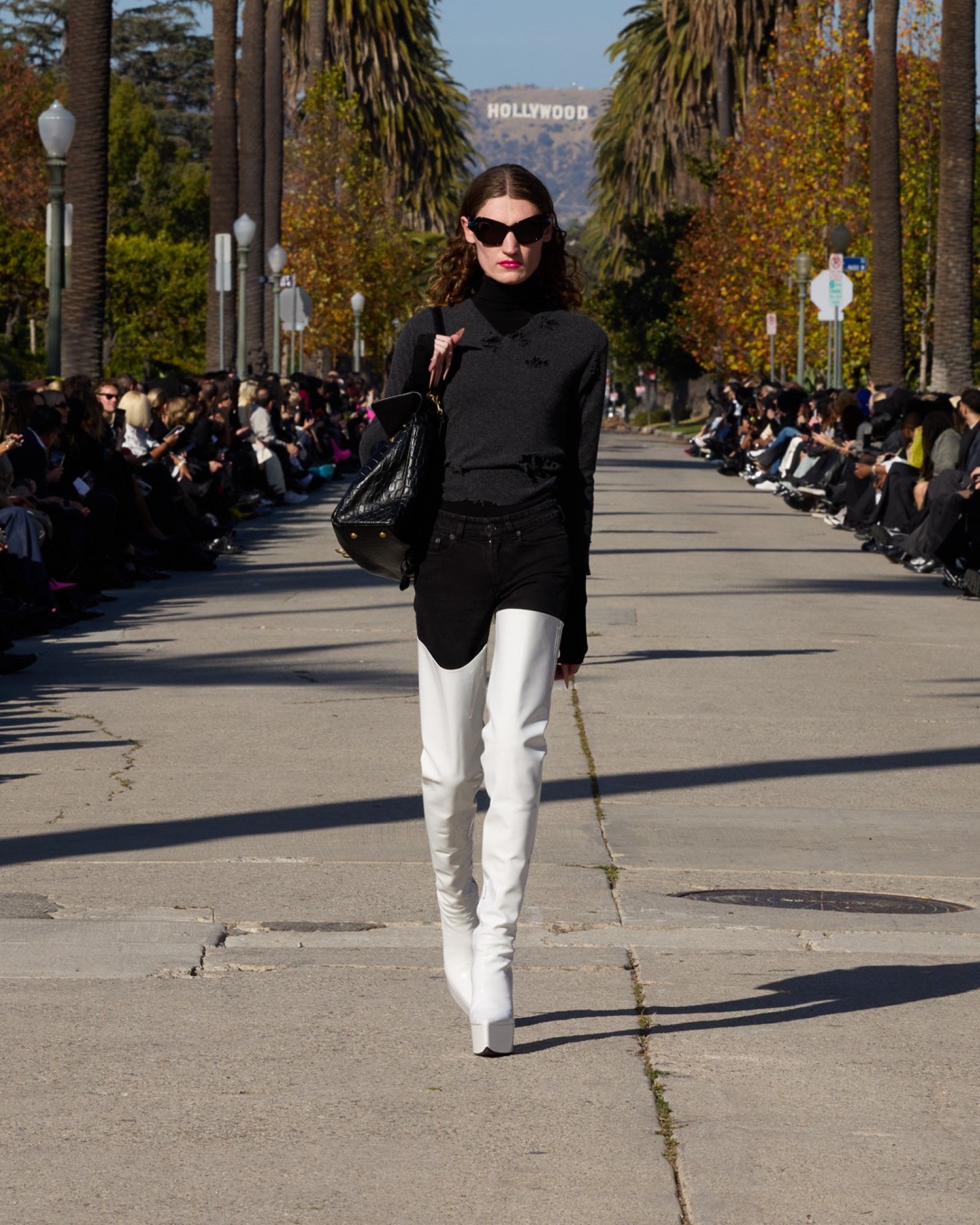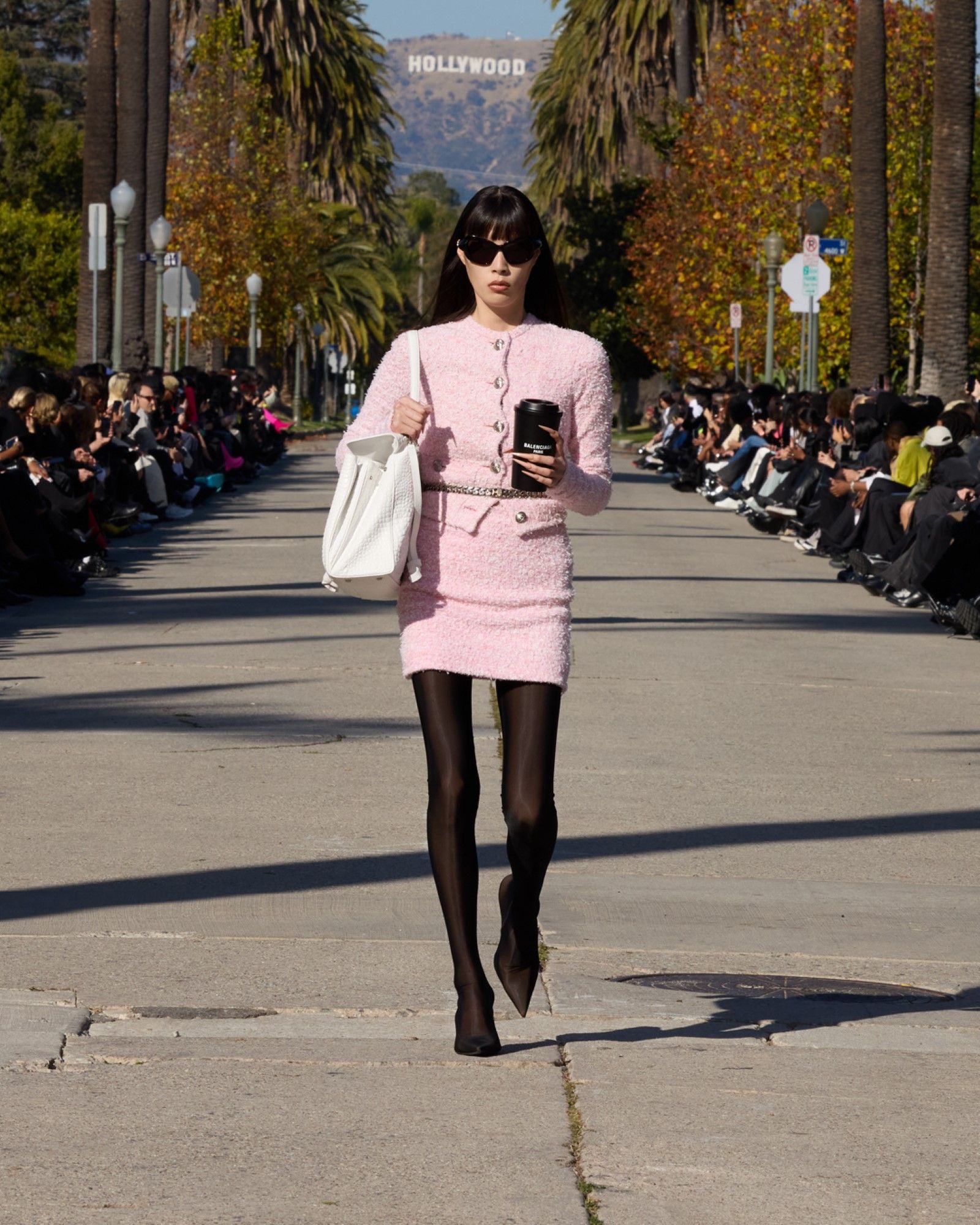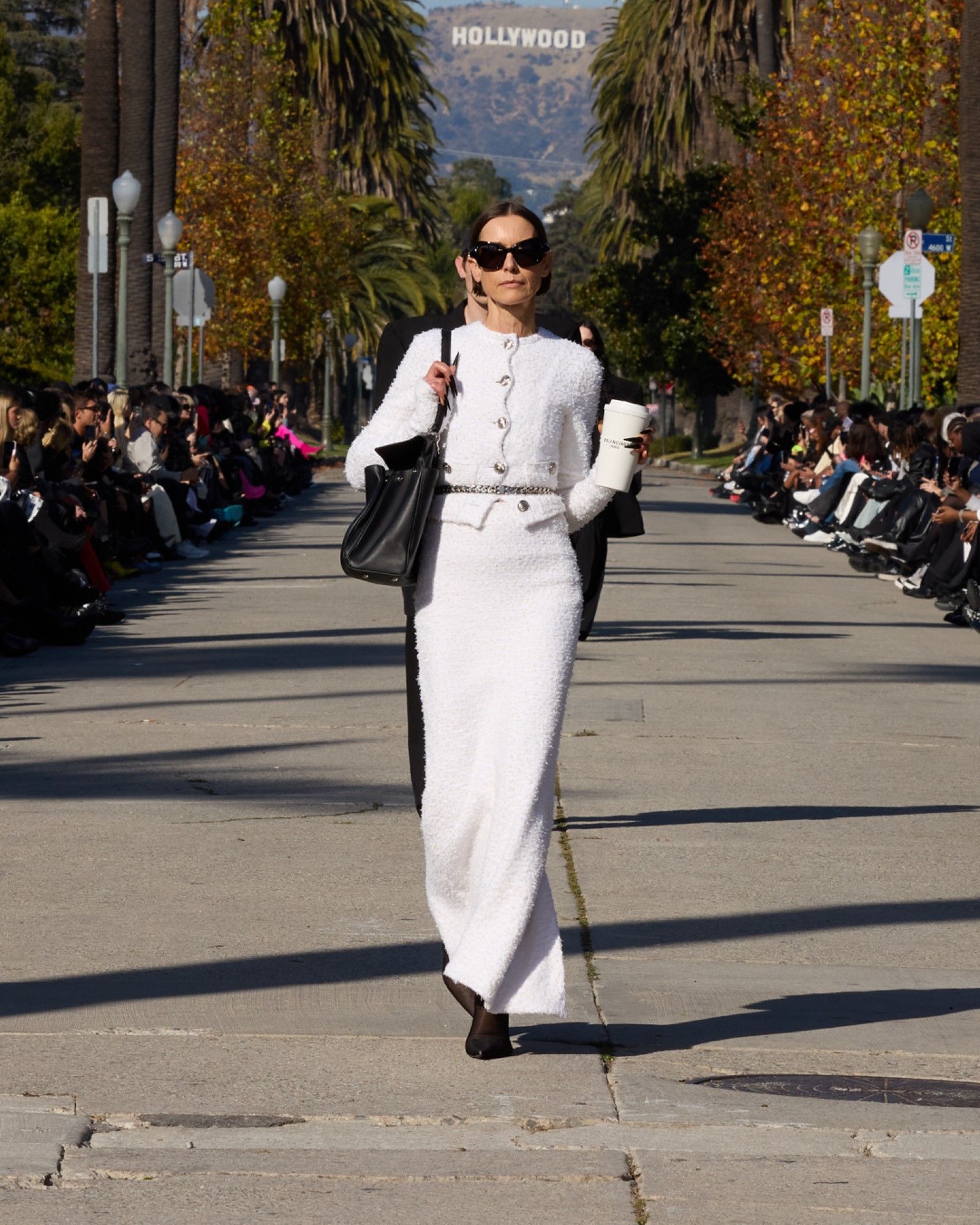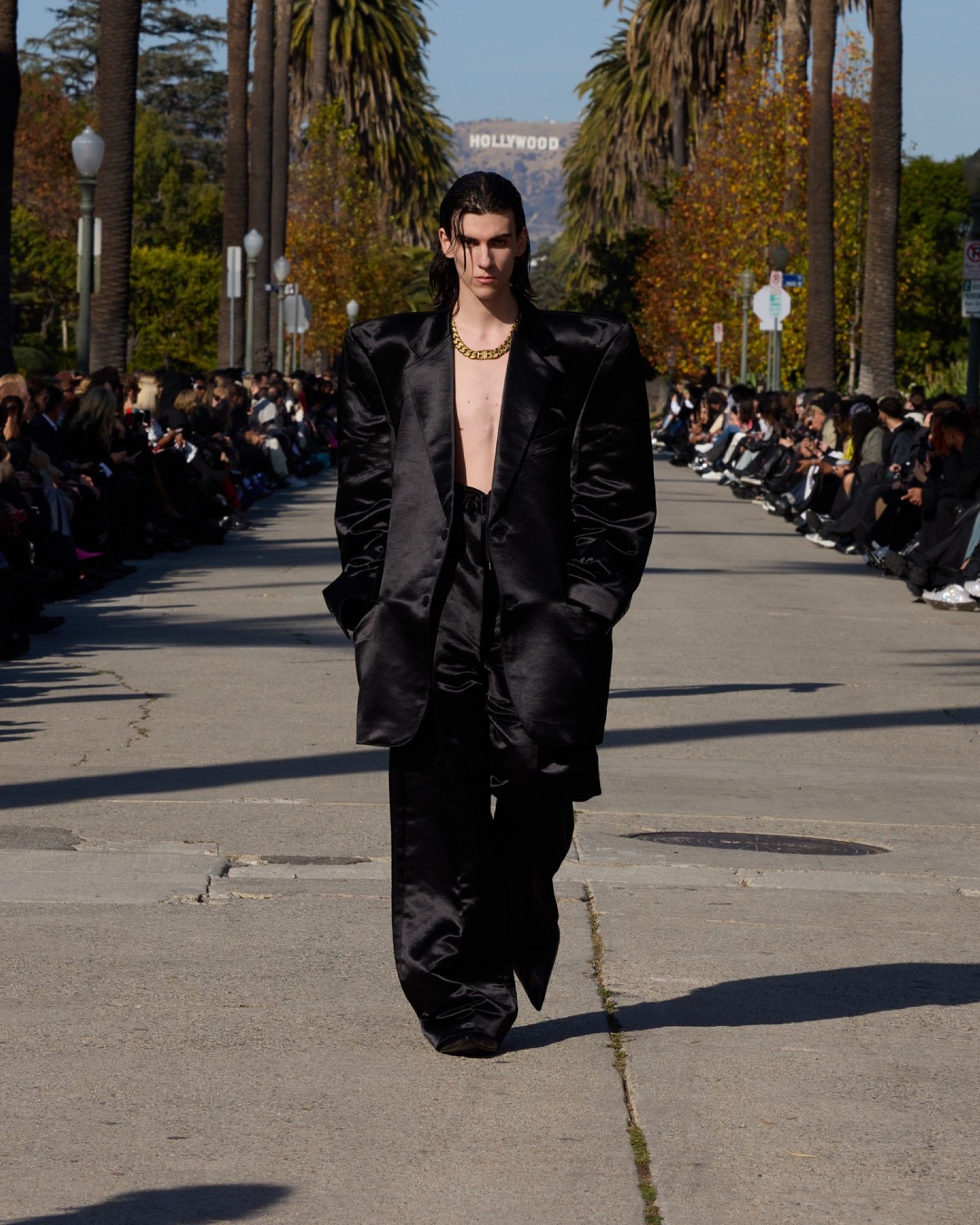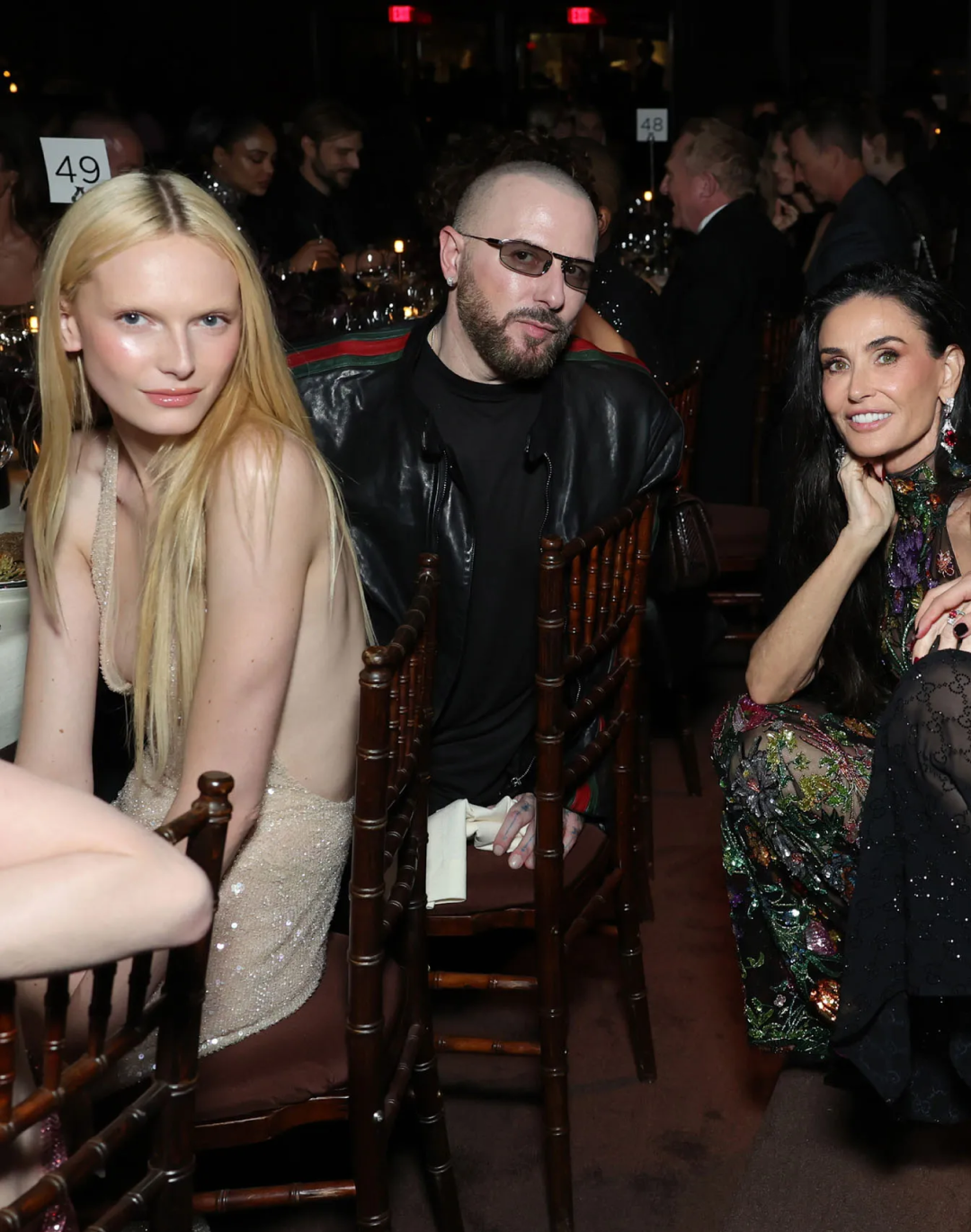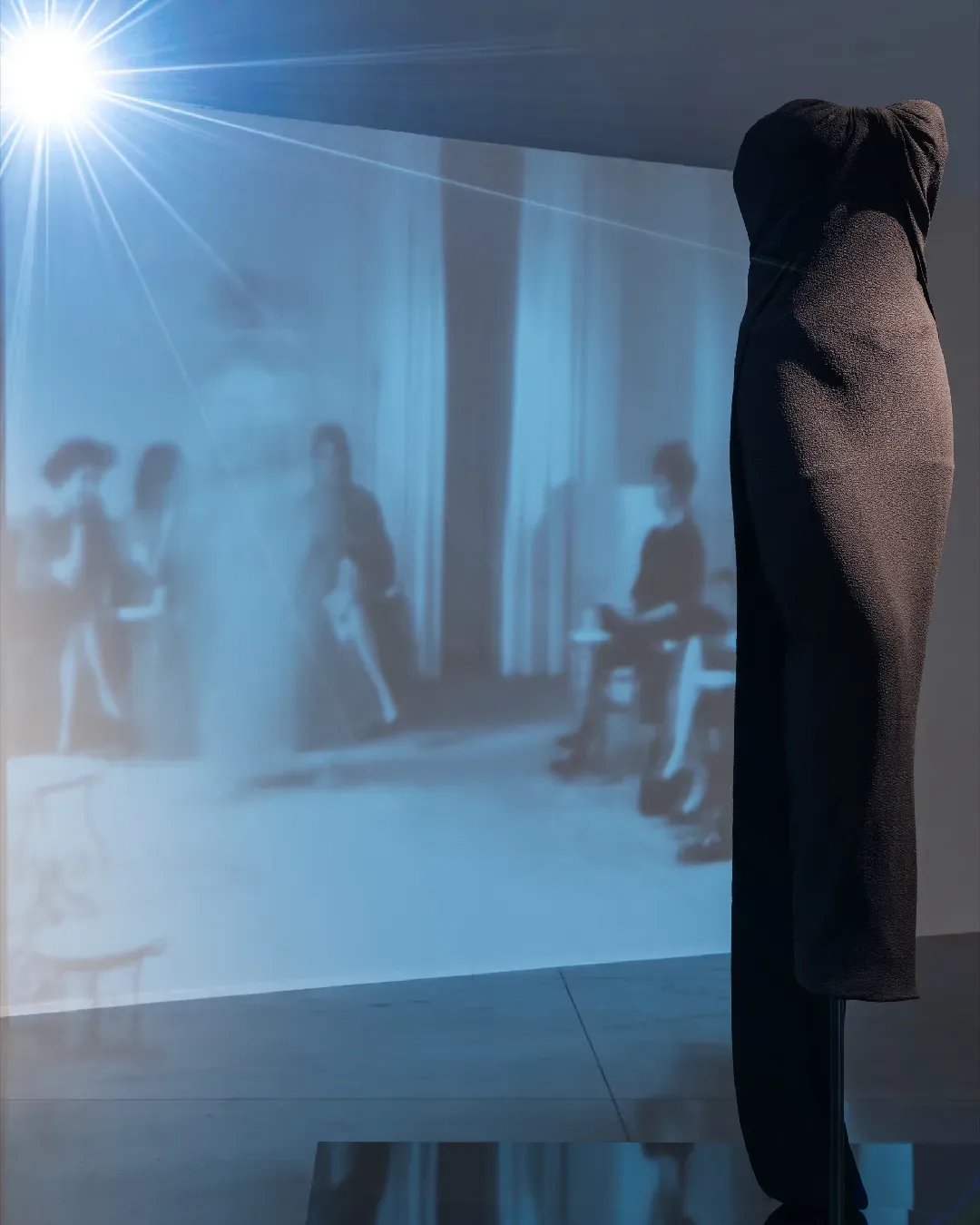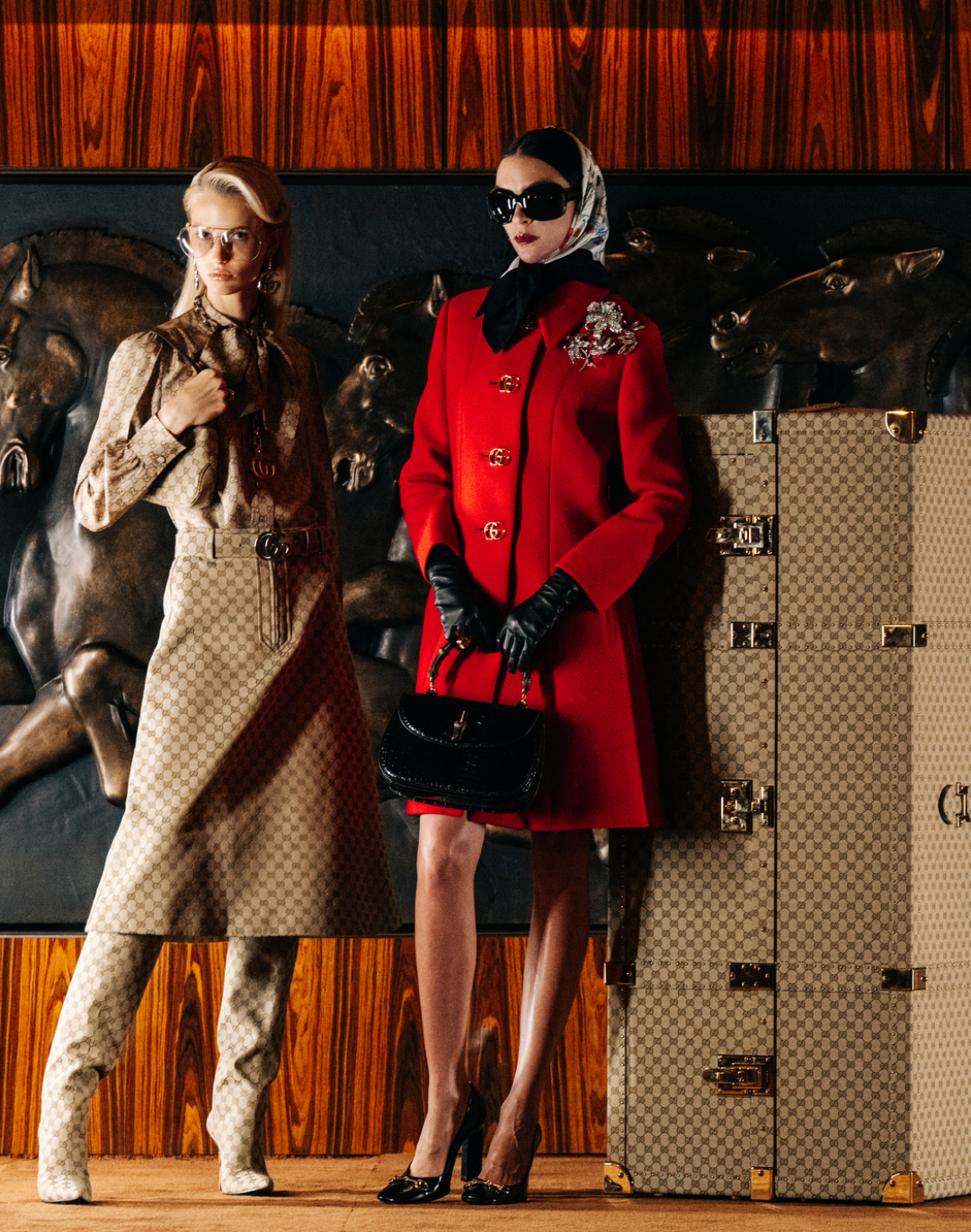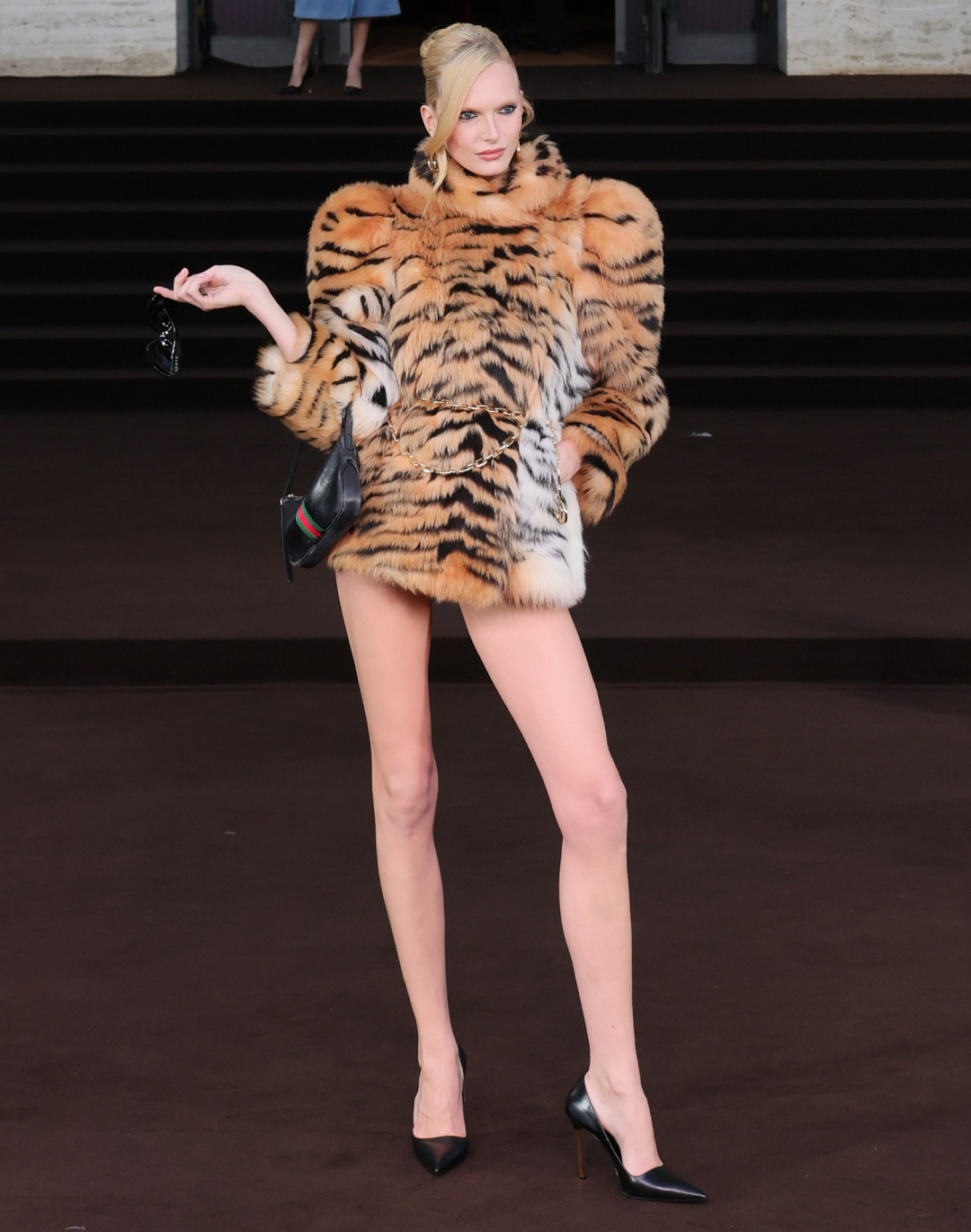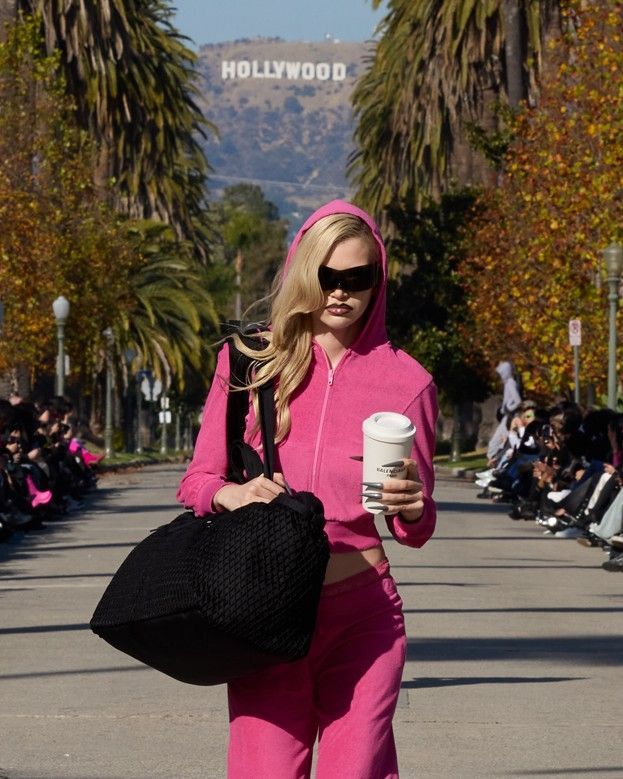
The profound ambiguity of Balenciaga's FW24 show Zigzagging on the line between tribute and parody
Demna is a designer who is, before being ironic, ambiguous. On the one hand, his collections are the delight of critics, his quotes are practically always agreeable, especially regarding the state of the art of the industry, and yet in his shows one never really understands how parody and apologia, ingenious invention and banal gimmickry, are dosed. On the one hand there are the beautiful concepts that the designer expounded to Cathy Horyn about the lost importance of craftsmanship, the over-hunger for celebrity, fashion gimmicks, prevailing commercialism, and the importance of finding a true creative voice--on the other hand there is a boundless rigmarole of logoed garments that have been identical for years, a bevy of celebrities often brought even to the runway, a list of gimmicks that could fill a book, a heavy reliance on commercial products and a constant repetition of silhouettes and products that blurs the line between creative continuity and coherence, and an almost obsessive aesthetic repetitiveness that borders on predictability. This kind of ambiguity was on display with Balenciaga's FW24 show in Los Angeles yesterday: impossible not to see in the procession of figures a citation to LA's celebrity culture seen almost from the inside, to the inherent vulgarity of velour jumpsuits and exposed thongs, to that vaguely Y2K look of Hollkywood stars when they go shopping in sweatsuits. No less: was it really a kind of satire of that prosaic aesthetic, a celebration of it or an elevation of it?
The fact is that completely opposite drives seem to be reconciled in Demna: on the one hand the "communist" designer who criticizes capitalism with caustic irony by making millionaires dress in towels, tablecloths, hotel slippers and adidas tracksuits; on the other hand the creative director of a luxury brand that sells logoed sweatshirts and T-shirts, destroyed canvas sneakers, denim and acetate jackets at astronomical prices. In between there is also a designer who exalts the quality of constructions and the architecture of cuts by creating jeans and thermowelded cotton parkas in a Haute Couture collection-whose bravura, that is, seems to want to disguise itself in an everyday anonymity that deliberately conceals its preciousness. This ideological balancing act has the surprising, and this is perhaps why the brand retains its intellectualistic appeal even in the midst of an almost overtly commercial nature. The two drives, in the brand's continuous dualism, exalt and cancel each other out. All resolvable in the eternally humorous and disenchanted dilemma of «is this ironic or unironic?» In the nexus of banality and art plays out the whole gamble of Demna's signature fashion - a fashion that has attracted legions of devoted cultists, influenced the way we perceive sneakers, created a taste for the oversize, made us talk about Haute Couture again with some interest, perhaps subverted (or erased?) the traditional notion of luxury for better or worse.
In this sense, yesterday's FW24 show was a masterpiece of unresolved ambiguity. It was definitely Demna, definitely Balenciaga, and definitely a new chapter in that expansive narrative the brand has been building and this time it involved a new group of the "rich and obnoxious" that has always been present in the collective mindset, mixing references to trashy TV, quotes to a famous Vogue shoot by Steven Meisel, realism, mockery. The theme of the show was precisely the image gap between stars on screen and in life, between the red carpet and the run to the supermarket (Erewhon in this case) with the obligatory stop at Starbucks whose glass becomes a clutch. The show notes describe the second section of the show as neo-grunge, which is also true, but really more like the Los Angeles aesthetic patois that confuses those who leave the house for a walk, those who come home from the gym, and those who go out again for a movie premiere or a party in the Hills. Which shows how Demna's distorting lens can be applied to almost every issue in our modern world from Ukrainian refugees to the European Parliament, via climate apocalypse, stock market crisis and augmented reality. On the other hand, it is impossible not to notice how the shows, their setting and concept are more memorable than their collections: there is the show in the mud, the one in the snowstorm, the one in the theater, the one on Wall Street but it would be more complex to say what collection a certain jacket, a certain sweatshirt or a certain pair of pants comes from. Everywhere there is the same display of oversize coats, military bomber jackets, garments illusionistically sewn onto other garments, cargo pants, skimpy jumpsuits, giant sneakers, goggles.
As we wrote in an old article, it is indeed complex to distinguish creative coherence from repetitiveness: among today's most celebrated designers there are certainly creatives who repeat and return to hammer on their own obsessions-and that is without counting the interference of commercial departments that want a certain best-selling piece to be there all the time. The yardstick by which Demna should be judged, perhaps the same yardstick he implicitly chose for himself, is that of actuality: is Balenciaga current today? Does it authentically reflect some elusive zeitgeist that others could not better summarize or synthesize? Does it describe something that is out there subverting those usual concepts of luxury and fashion? The answer, in the face of collections that look very similar to each other, is yes. Balenciaga's main quality is surely to be in the moment, to describe it readily and make a kind of ideal and dystopian portrait of it at the same time. In this sense, the very thin eyebrows of Cardi B (who closed the show) were reminiscent of those of Karen Black in the babelic, maddening, and chilling satire of Hollywood that was John Schlesinger's The Day of the Locust. There remains, however, beyond the more conceptual pieces, that whiff of ambiguity: does Demna nurture the culture he judges or judge the culture he nurtures?










































